Archived Blog Posts
Restoring Tranquility: How SERVPRO of Layton Rescues Homes from Water Damage
1/15/2024 (Permalink)
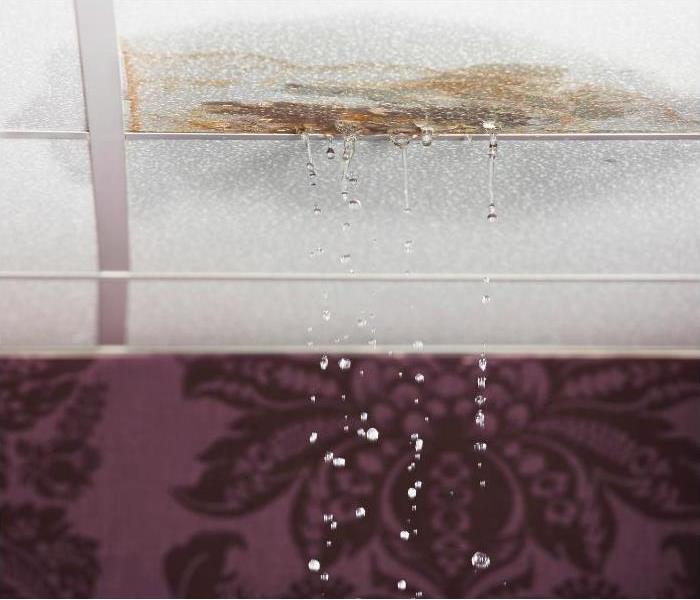 Water Damage in Layton, Ut.
Water Damage in Layton, Ut.
Water damage is an unwelcome guest that can wreak havoc on your home, turning a peaceful haven into a chaotic disaster. Whether it's a burst pipe, a leaky roof, or a malfunctioning appliance, water damage demands swift action to prevent further destruction. In such dire situations, the expertise and prompt response of professionals like SERVPRO of Layton become invaluable. In this blog, we will explore the common causes of water damage, the potential consequences for your home, and how SERVPRO of Layton can work miracles in restoring your dwelling to its pre-damage state.
1. The Causes of Water Damage
Water damage can stem from various sources, each presenting its unique challenges. Leaking pipes are among the most common culprits. Over time, pipes can corrode, weaken, or develop small cracks, leading to slow leaks that often go unnoticed until significant damage has occurred. Additionally, extreme weather conditions, such as heavy rain or snowmelt, can expose vulnerabilities in your home's structure, allowing water to seep through roofs and foundations.
Appliances are another frequent source of water damage. Malfunctioning dishwashers, washing machines, or refrigerators can release water into your home, causing damage to floors, walls, and personal belongings. Moreover, blocked or overflowing gutters and downspouts can lead to water pooling around your home's foundation, resulting in basement flooding and structural damage.
2. The Consequences of Water Damage
The aftermath of water damage can be devastating, affecting both the structure of your home and your personal belongings. If left untreated, water damage can lead to mold growth, compromising the air quality and posing health risks to inhabitants. Wood and drywall can warp, paint can peel, and structural integrity can be compromised, leading to costly repairs. Beyond the physical damage, the emotional toll of seeing your cherished possessions ruined can be overwhelming.
Swift Action: The Key to Mitigating Water Damage
When faced with water damage, time is of the essence. Taking prompt action can significantly reduce the extent of the damage and the associated costs. Here are some immediate steps you can take:
Turn off the Water: If the water damage is caused by a burst pipe or malfunctioning appliance, locate and shut off the main water supply to prevent further flooding.
Document the Damage: Take photos or videos of the affected areas to document the extent of the damage. This documentation can be crucial when filing insurance claims.
Remove Standing Water: Use mops, towels, or a wet/dry vacuum to remove as much standing water as possible.
Ventilate the Area: Open windows and doors to facilitate air circulation and promote drying.
Contact Professionals: Reach out to water damage restoration experts like SERVPRO of Layton for immediate assistance.
SERVPRO of Layton: Your Trusted Restoration Partner
When water damage strikes, SERVPRO of Layton is your ally in restoring tranquility to your home. With a team of highly trained professionals and state-of-the-art equipment, SERVPRO specializes in mitigating water damage and restoring properties to their preloss condition.
Rapid Response: SERVPRO of Layton understands the urgency of water damage situations. Their 24/7 emergency services ensure that a team is ready to respond promptly to your call, minimizing further damage.
Assessment and Planning: Upon arrival, SERVPRO experts conduct a thorough assessment of the damage. This includes identifying the source of the water, evaluating affected areas, and formulating a comprehensive restoration plan tailored to your specific needs.
Water Extraction: Utilizing advanced extraction equipment, SERVPRO swiftly removes standing water from your home. This step is crucial in preventing secondary damage and mold growth.
Drying and Dehumidification: SERVPRO employs industrial-strength air movers and dehumidifiers to thoroughly dry affected areas. This helps prevent long-term damage and inhibits the growth of mold and mildew.
Cleaning and Sanitizing: Once the drying process is complete, SERVPRO's skilled technicians clean and sanitize the affected areas. This includes the removal of contaminants and odors, ensuring a safe and healthy environment.
Restoration and Reconstruction: SERVPRO of Layton doesn't just stop at water removal and drying; they offer comprehensive restoration services. This may include repairing or replacing damaged drywall, flooring, and other structural elements to return your home to its pre-damage state.
Dealing with water damage is a stressful experience, but with the right professionals by your side, the restoration process can be swift and effective. SERVPRO of Layton stands out as a reliable partner, offering a seamless journey from the initial assessment to the final restoration, making your home feel "Like it never even happened." Don't let water damage disrupt your peace of mind—trust SERVPRO of Layton to restore your home and bring back the tranquility you deserve.
Mastering the Cold: Dealing with Frozen Pipes
12/28/2023 (Permalink)
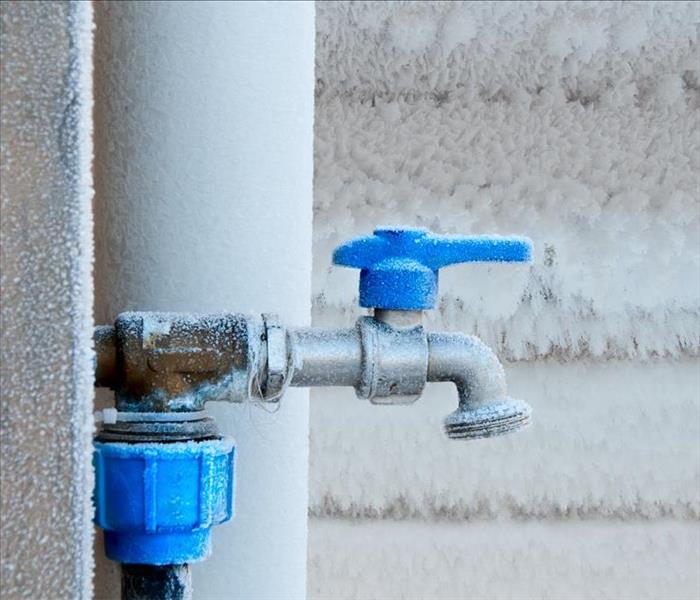 A frozen faucet in Layton, UT.
A frozen faucet in Layton, UT.
Winter in Layton, UT, paints a picturesque scene with snow-covered landscapes and crisp, chilly air. However, alongside the beauty of the season comes the risk of frozen pipes, a common woe for homeowners in colder climates. As temperatures plummet, pipes can freeze, leading to potential water damage and plumbing headaches. In this comprehensive guide, we'll explore the causes of frozen pipes, preventive measures, and effective solutions to ensure your home stays warm and watertight throughout the winter.
Understanding the Problem:
Before diving into solutions, it's crucial to understand the science behind frozen pipes. Layton, like many areas in Utah, experiences freezing temperatures during winter. When water in pipes reaches the freezing point, it expands, creating pressure within the pipes. This pressure can lead to cracks or even burst pipes, resulting in water damage to your home.
Common Causes of Frozen Pipes:
Insufficient Insulation:
Exposed pipes in unheated areas, such as basements, attics, or crawl spaces, are vulnerable to freezing.
Lack of insulation or inadequate insulation allows the cold to penetrate the pipes, putting them at risk.
Sudden Drops in Temperature:
Drastic temperature fluctuations, especially when temperatures plummet overnight, can catch pipes off guard, leading to freezing.
Neglecting Outdoor Plumbing:
Outdoor faucets and hose bibs are susceptible to freezing if not properly insulated or shut off before winter.
Preventive Measures:
- Insulate Pipes:
Identify and insulate exposed pipes using pipe insulation or heating tape. Focus on areas prone to freezing, such as basements, attics, and crawl spaces.
- Maintain a Consistent Temperature:
Keep your home's temperature steady, even when you're away. A slight increase in the thermostat setting during extremely cold weather can make a significant difference in preventing pipe freeze.
- Seal Leaks and Cracks:
Inspect your home for drafts and seal any gaps in windows, doors, and walls. This not only helps prevent frozen pipes but also improves overall energy efficiency.
- Disconnect and Drain Outdoor Hoses:
Before the cold sets in, disconnect and drain outdoor hoses. Shut off water to outdoor faucets and install faucet covers for added protection.
Dealing with Frozen Pipes:
Despite your best efforts, frozen pipes may still occur. When faced with this challenge, follow these steps to thaw them safely:
- Identify the Frozen Section:
Determine which pipes are frozen by checking for areas with reduced or no water flow. Faucets that produce a slow trickle or no water at all may indicate a frozen pipe.
- Open Faucets:
Before attempting to thaw the pipes, open the affected faucets. This will relieve pressure and allow water to flow once the ice blockage begins to melt.
- Apply Heat: Use a gentle heat source to thaw the frozen pipes. Electric heating pads, hairdryers, or space heaters can be effective. Never use an open flame, as it poses a fire hazard.
- Work from the Faucet Outward:
Start applying heat near the faucet and work your way toward the frozen section. This helps melt the ice gradually and prevents pressure buildup.
- Inspect for Damage:
Once the pipes have thawed, check for any visible damage. Look for cracks, leaks, or signs of weakness. If you notice any issues, it's advisable to consult a professional plumber for repairs.
Dealing with frozen pipes in Layton, UT, requires a combination of preventive measures and effective thawing techniques. By taking proactive steps to safeguard your plumbing and knowing how to safely thaw frozen pipes, you can navigate the winter chill without the worry of plumbing disasters. Remember, a little preparation goes a long way in ensuring a warm and water-filled home during the coldest months of the year. Stay warm, stay informed, and enjoy a cozy winter in Layton!
Safety in the Kitchen: How to Extinguish a Grease Fire and Restore Your Layton, UT Home with SERVPRO of Layton
10/23/2023 (Permalink)
 Grease fires are very common in Layton, UT.
Grease fires are very common in Layton, UT.
The kitchen is often considered the heart of a home, where the delightful aroma of home-cooked meals wafts through the air. However, amidst the culinary delights, the kitchen can also be a potential fire hazard, especially when it comes to grease fires. In this comprehensive blog post, we'll dive deep into the world of grease fires and explore everything you need to know about preventing and extinguishing them in your Layton, UT home. Additionally, we'll shed light on how SERVPRO of Layton can be your guiding light in restoring your home if you ever face a fire-related emergency.
Understanding Grease Fires
Grease fires are among the most common kitchen fires and can turn dangerous in the blink of an eye. They occur when cooking oil or fat becomes too hot and ignites. Unlike other fires, grease fires have their unique characteristics that require specific actions for safe extinguishing.
Why Do Grease Fires Happen?
Grease fires primarily occur due to overheating. When the oil or fat in a pan or pot surpasses its smoke point and reaches its ignition temperature, a spark, or even a tiny droplet of water, can lead to a blazing inferno. Common reasons for grease fires include:
High Cooking Temperatures: Frying or deep-frying often requires high temperatures that can easily ignite the oil or fat.
Cooking Frozen Food: The introduction of frozen foods into hot oil can cause sputtering, leading to grease fires.
Oil Splatter: Any sudden movement or dropping of food into hot oil can cause oil to splatter, creating the potential for a fire.
Old or Contaminated Oil: Oil that has been reused multiple times or is contaminated with food particles is more likely to catch fire.
Identifying a Grease Fire
Grease fires are distinguishable by their distinct characteristics:
- Intense flames that may be accompanied by smoke.
- A popping or crackling sound.
- Fire localized in the pan or pot, but it can quickly escalate if not managed.
How to Extinguish a Grease Fire
If you ever find yourself facing a grease fire in your Layton, UT home, follow these steps to ensure your safety and the safety of your loved ones.
Don't Panic: Stay calm. Panic can lead to poor decision-making. Remember, you have the knowledge and tools to manage the situation.
Turn Off the Heat: If safe to do so, turn off the heat source. This step helps prevent the fire from growing further.
Cover with a Lid: If the fire is still relatively small and manageable, use a metal lid or a baking sheet to cover the pan. This action will smother the flames by cutting off the oxygen supply.
Avoid Water: Never use water to extinguish a grease fire. Water will only make it worse by splattering the hot oil and spreading the fire. Moreover, it can lead to steam burns.
Baking Soda: If available, carefully sprinkle baking soda over the fire. Baking soda is a fire suppressant and can help smother the flames.
Fire Extinguisher: Keep a Class K fire extinguisher in your kitchen, specifically designed for grease fires. If you're comfortable using one, follow the manufacturer's instructions to discharge it safely.
Call 911: If the fire becomes uncontrollable or starts spreading beyond the cooking area, don't hesitate to call 911 for professional assistance. Your safety should always be the top priority.
The Importance of Fire Safety
The adage "prevention is better than cure" holds particularly true when it comes to grease fires. Here are some practical tips to prevent grease fires in your kitchen:
Stay Vigilant: Never leave cooking unattended, especially when using high heat or oil.
Use a Thermometer: Invest in a cooking thermometer to monitor oil temperature when frying.
Keep a Lid Nearby: Always have a metal lid or a baking sheet close to your cooking area. You can use it to smother a potential fire if it occurs.
Keep the Area Clean: Regularly clean your stovetop and oven to remove any built-up grease or food particles that could catch fire.
Properly Dispose of Used Oil: Dispose of used cooking oil or fat safely and responsibly. Never pour it down the drain or throw it in the trash.
SERVPRO of Layton: Your Partner in Restoration
Extinguishing a grease fire is just the first step in the journey. Even after successfully putting out the fire, you may still have to deal with the aftermath, including smoke and fire damage to your home. This is where SERVPRO of Layton comes in as your trusted partner.
Our Expertise in Fire Damage Restoration
SERVPRO of Layton specializes in fire damage restoration, understanding the unique challenges posed by grease fires. Our highly trained professionals possess the expertise and equipment to restore your home to its pre-fire condition, ensuring you can get back to your daily routine as soon as possible.
Our Services Include:
Assessment: We assess the extent of the damage, taking into account not only the visible fire and smoke damage but also potential hidden issues.
Smoke and Soot Removal: SERVPRO uses advanced techniques to remove smoke and soot residues from surfaces, ensuring a clean and safe environment.
Odor Removal: Smoke leaves behind a persistent odor that can be challenging to eliminate. SERVPRO employs specialized equipment and techniques to effectively remove these odors.
Structural Restoration: Whether it's repairing damaged walls, ceilings, or flooring, SERVPRO has the expertise to restore your home to its pre-fire condition.
In conclusion, grease fires can be both terrifying and dangerous, but with the right knowledge and actions, you can protect your Layton, UT home. Safety is paramount when dealing with these fires. Remember to stay calm, follow the correct steps for extinguishing, and never hesitate to call 911 if the situation gets out of control.
SERVPRO of Layton is your dedicated partner in fire damage restoration, ensuring your home is returned to its former glory. Your kitchen is where wonderful memories are created, and it's our mission to make sure you can continue doing so in a safe and secure environment. Stay safe, and always be prepared!
How To Treat Mold
9/13/2023 (Permalink)
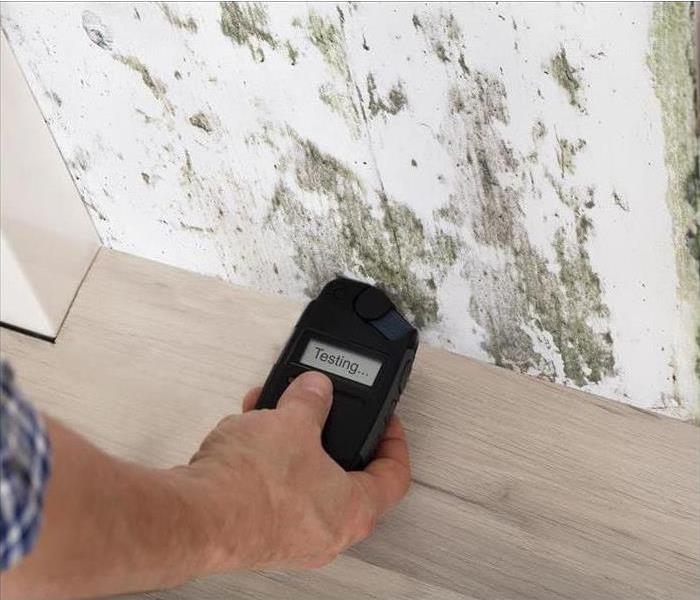 Mold testing in Layton, UT.
Mold testing in Layton, UT.
A musty odor in your commercial building in Layton, UT, is a clear sign of mold. What may not be clear is the visible presence of the fungus on your walls or ceiling. If you suspect you have mold but you can't see it, an indoor environmental specialist must test the building before remediation can take place.
6 Steps to Treat Mold
1. Detection
Some business owners try to locate problems themselves using a mold test from the local hardware store. The only thing this test will tell you, however, is that spores are present in the building, and that's always true. Any time the door opens, mold can enter on clothes, hair, and shoes. It doesn't become a problem until it concentrates and begins to grow on surfaces. Sometimes, you can't see the surfaces where it grows, though. Then you need a professional inspection.
2. Testing
A certified hygienist conducts tests on both surfaces and the air. These tests reveal more than just the presence of mold:
- Location of the greatest concentration of spores
- Type of mold present
- Air quality of the affected area
Once the testing is complete, the mold mitigation specialists know where to start.
3. Assessment
The report from the indoor environmental specialist is an essential part of the overall assessment process. It tells the remediation team members how large an area they need to seal off so that the mold problem doesn't spread any further in the building. From that point, they can create a plan of action for taking care of the issue. At this point, they should also be able to provide a general estimate to supplement your insurance claim.
4. Removal
One of the first things that technicians must do is tear out any unsalvageable material. If there is mold growth on any porous matter, such as drywall or industrial ceiling tiles, it cannot simply be washed away. The fungus on the surface isn't the only problem. When spores settle, tendrils called mycelia to reach down into the spaces beneath the surface to anchor the growth. Once this happens, the only way to get rid of it is to take the affected materials out altogether.
5. Retesting
After the growth has been removed, the remaining surfaces are cleaned and dried to prevent the problem from returning. Then the area must be retested. This crucial step of the process ensures that the actions taken by the mitigation team are effective and that no mold issue persists. Remediation must be completed before the structure can be rebuilt.
6. Restoration
The final phase is getting the building back to normal. New tiles and drywall are installed. Paint and wallpaper are matched to the existing space so that no one can tell where the problem occurred. The job isn't done until your building looks like there was never a problem at all.
If you suspect that you have mold in your building but you don't see any visible evidence, you should call an indoor environmental specialist. A professional test reveals what kind of problem you have and how big it is. This is exactly the information the mitigation team needs in order to do its job well.
Avoid a Candle Fire With Safe Habits and Alternatives to Open Flames
8/31/2023 (Permalink)
 Avoid a Candle Fire in your Layton, UT house by following these important tips.
Avoid a Candle Fire in your Layton, UT house by following these important tips.
The soft flicker of a flame is soothing and comfortable. For many homeowners, the gentle scents and appearance of candles provide a calming, peaceful atmosphere. Unfortunately, candle fire is also responsible for a lot of home damage:
Avoid Fire Damage by following these tips
At least 2% of home fires are caused by candles.
Just a few years ago, there was an average of 20 candle fires are reported each day, and today there are more than 10,000 each year. Fires due to candles peak during December and January.
These facts come from the National Fire Protection Association and their research division. Looking at these statistics, is it possible to safely use candles in your home?
Prevent a Candle Fire From Destroying Your Home
The good news is that today there are plenty of options for getting the same ambiance from candle fire without the risks associated with open flames. If you do plan to use the real thing, be sure to take the following precautions:
- Clear the area around the candle. Plants, decorations, linens, and other flammable items all pose fire hazards.
- Position candles where children, pets, and blowing curtains won't knock them over. Make sure candles are placed on a sturdy, level surface.
- Never leave candles unattended; many fires occur when homeowners fall asleep and more than a third of home candle fires started in bedrooms.
- Store candles, matches, and lighters where children can't reach them.
Habits for Proper Care of Candles
In addition to these foundational safety habits, there are several other things you can do to improve your well-being around candles. Trim candlewicks to about a quarter of an inch. If the wick is too short, the flame won't burn correctly. If the wick is too long, it will cause the flame to flare and flicker. Flares can lead to fires.
Take the heat of candles into account. Some candleholders (such as wine bottles) aren't sturdy or heat-resistant enough to withstand the burning heat. The rising temperature can cause glass holders to crack, spilling out wax and potentially causing a candle fire. It's also important that you place candles at least 3 to 4 inches apart and avoid handling candles before they cool.
Alternatives to Open Flames
Many fire safety authorities (as well as fire damage cleanup and restoration professionals) recommend using alternatives to candles. One of the most popular of these is the flameless candle. These are available in many sizes, shapes, and colors. Some are remote-operated, and many use an LED bulb that mimics the flicker of a candle flame. You can even find these candles with a warm vanilla scent. Some of the other options to consider include reed diffusers, wax warmers, humidifiers with essential oils, and strings of fairy lights.
The best way to avoid fire and smoke damage, as well as the cost of fire and smoke cleanup, is to take preventative steps and improve fire safety in your Layton, UT, home. This includes the installation of fire extinguishers and fire and smoke alarms. Develop the appropriate habits for enjoying an open flame and learn to properly maintain your candles. Best of all, consider an alternative. Don't let your peaceful evening end with destructive candle fire.
Why Are My Home’s Water Pipes Making Noises?
8/31/2023 (Permalink)
 If you hear strange noises from pipes in your Kaysville, UT home, can exist issues that must be fixed.
If you hear strange noises from pipes in your Kaysville, UT home, can exist issues that must be fixed.
Are your Kaysville, UT, home's pipes making strange noises like loud knocking and banging? There's obviously some type of problem with the plumbing, whether a pipe break or something else. Now it's time to determine the exact issue and what to do about it.
How Do I Stop the Racket?
- If Running Hot Water Causes Knocking
Do you ever turn on the hot water tap and hear knocking? Does it continue several minutes after you shut off the tap? If so, the hot water supply lines could be poorly constructed. Hot water makes chlorinated polyvinyl chloride piping expand, so if it doesn't have enough free space, it could be knocking against other objects as it expands. Find the pipes that are causing the noise and give them more room between them and other things. This work could be invasive, requiring cutting into walls and relocating piping, so you will probably need a professional plumber.
- If Running Cold Water Causes Banging
If you hear pipes knocking while running cold water or as soon as you turn on a faucet, you probably have high water pressure. High water pressure can cause the water to flow through the pipes too rapidly. This fast flow makes the lines shake, and they can rattle against anything close like walls or other pipes, causing knocking and banging. You can get a water pressure test gauge to test your home's water pressure, which should be 40-80 PSI. A plumber will need to inspect the home's pressure-reducing valve if the pressure is above 80 PSI. A plumber will determine if they can simply adjust it or if they must replace it. Extremely high water pressure could lead to a pipe break, so someone should investigate as soon as possible. A water damage restoration company can help if you discover a leaky pipe during this process.
- If Shutting Off Water Causes Knocking
If you're hearing knocking after you shut your water supply off, whether cold or hot water, it could be what's called a water hammer. A water hammer happens when a water valve is turned off, which causes the water running through the pipes to crash into the valve. This crash causes the pipes to shake, which causes the knocking. Water hammer is a phenomenon that can happen in various scenarios, including when you turn off water taps, flush a toilet, or when the clothes washer is finished filling. If your home was built after the 1960s, water hammer arrestors were probably installed, but if you're experiencing water hammer, your home may not have them. Homes built pre-1960s have air chambers; water hammer arrestors weren't invented yet. If your home has air chambers, the best option for reducing water hammers is by draining all of the water from your home's plumbing and then turning the water main on again to refill it.
Strange noises like banging and knocking coming from your water pipes can not only be annoying, but they can also be a sign of a more significant issue. Avoid the possibility of having to fix a broken pipe after a pipe burst or pipe break by getting the problem solved as soon as possible.
Rain May Lead to Mold Growth
8/18/2023 (Permalink)
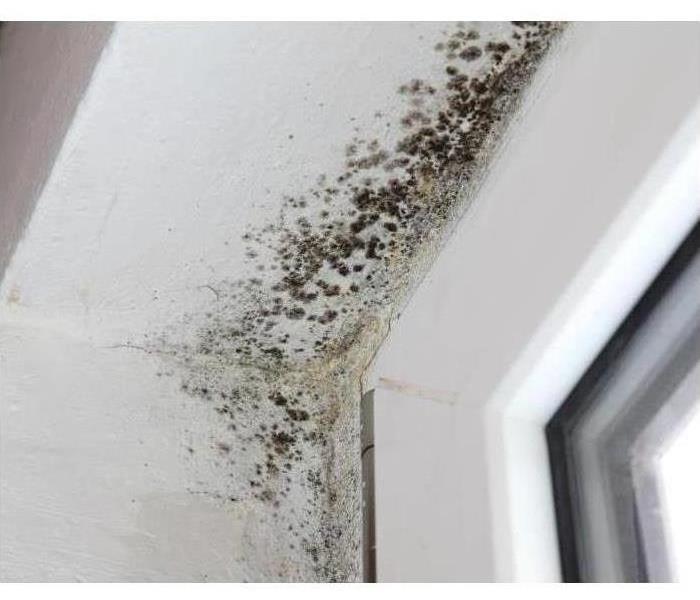 Mold growth found after a storm in Layton, UT.
Mold growth found after a storm in Layton, UT.
Black mold can show up in your Layton, Utah, house seemingly overnight. Have you noticed a connection between rainy days and mold growth? There are a few instances when rain can lead to mold popping up in your home.
5 Reasons Rain May Lead to Mold Growth
- Faulty Roof: If your roof is missing shingles, it may not be able to keep water out of your home like it should. This can lead to water buildup in your attic or drips down your walls, which invites mold spores to make a home.
- Bad Foundation: Cracks in your foundation could be another way excess moisture makes it into your home. During the rain, the falling water goes into the ground and starts to travel. If your foundation isn't properly sealed, the water can find its way into your home.
- Poor Attic Ventilation: When the attic does not have proper ventilation, condensation can start to build up in the space. Even condensation is enough of a moisture problem to allow black mold to make a home.
- Worn-Out Weather Strips: Weather stripping around windows and doors can become cracked and faded over time. When it rains, the water may seep its way into these crevices. Mold may start to build up around your windows and doors because of the trapped moisture.
- Too Much Water: Heavy rains can lead to too much water for an environment. When this happens, floods can fill your basement or garage. Flooding is a common cause of mold growth.
No matter what issue has caused your moisture problem, you need to get to the heart of the issue. Wiping away the surface mold won't help you rid your home of the fungus. Instead, you need to call in a professional mold cleanup crew.
Rain sometimes exacerbates issues with your home. If you notice black mold pop up after every downpour, it could be tied to a bigger issue with your house.
5 Steps for Flood Cleanup
8/4/2023 (Permalink)
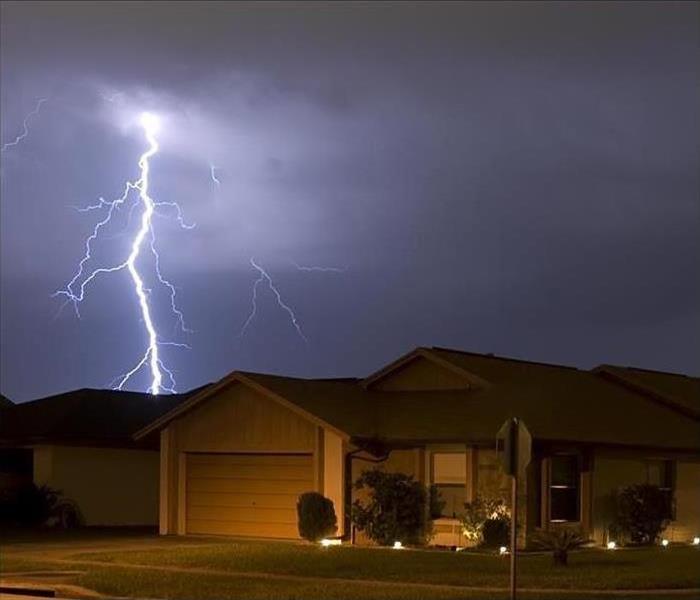 Thurnderstorm in Layton, UT.
Thurnderstorm in Layton, UT.
Floods come in all shapes and sizes, from minor plumbing leaks to major storm surges. It is often difficult to see a level of your home underwater, and it can leave you wondering about specific cleaning requirements. Most water damage specialists in Layton, UT, suggest a five-step process for flood recovery.
5 Step Process for Flood Cleanup
- Remove Water From Interior
The primary objective after a storm surge is to remove the water, not to perform flood clean up. Most professionals will use a combination of shop vacs, portable pumps, and pumping trucks, depending on the depth of the flood.
- Dry the Interior
Thoroughly drying the space is among the most important cleaning requirements. Mold can begin growing within 24 to 48 hours after water damage. The quicker you can dry the space, the less chance for other problems to arise. Restoration companies often use air movers, dehumidifiers, and fans to help move the drying process along.
- Mitigate Further Loss
A significant concern for many homeowners is mitigating further loss. Most insurers require homeowners to protect the property from greater harm or risk their claim. Disaster response teams might suggest using plywood to cover vertical damage, like broken windows, and tarps for horizontal damage, like wind-torn roofs.
- Clean and Disinfect
Before you know it, the disaster response crew will explain how to flood disinfectant and clean your space. The team you hire will remove all debris, and use commercial products to eliminate any harmful bacteria.
- Restore the Space
With the space clean and dry, the team can begin focusing on any structural repairs. The restoration phase is about removing any sign of storm damage and making your house look like never even happened.
The cleaning requirements after a flood or storm surge are simple: remove water, dry the space, protect, clean, and repair. However, depending on the damage, a homeowner might want to consider calling a professional for help.
3 Steps for Restoring Your Home to Its Pre-Fire Condition
9/13/2022 (Permalink)
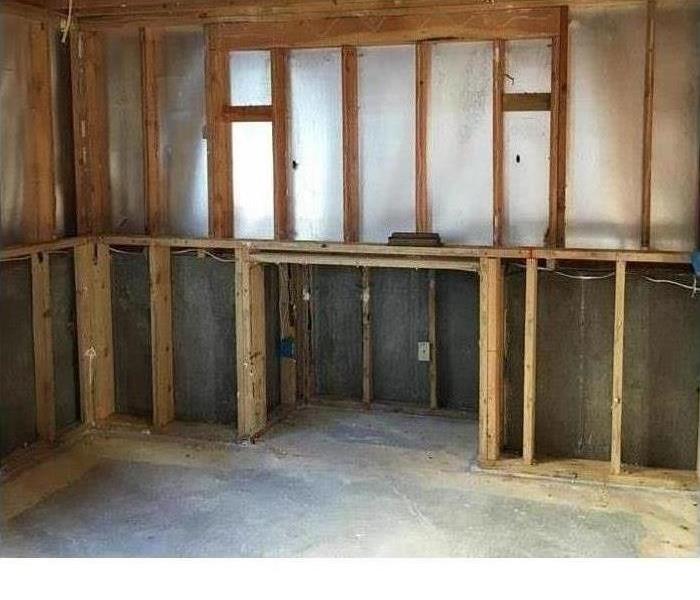 This Layton, UT home suffered from smoke and fire damage
This Layton, UT home suffered from smoke and fire damage
No homeowner wants to watch his or her Layton, UT, home go up in flames. Whether your house has survived a minor, moderate, or severe fire, you likely want to begin cleanup as soon as possible. As part of a complete cleaning process, restoring your home involves dealing with fire, soot, and smoke damage.
Three Steps For Fire Damage Restoration
- 1. Overall Structure
Fires often weaken studs and floor joists. They may also ruin drywall and tile. The first step in any fire-cleanup process is to evaluate the safety and habitability of the home. Once a professional deems the house is safe to occupy, cleanup can begin. Technicians have the skill, equipment, and knowledge to remove fire marks and other remnants from surfaces throughout the home.
- Accumulated Soot
Soot can be as bad or worse than fire or smoke damage. Not only does accumulated suit discolor walls and carpeting, but it can also ruin furniture and personal keepsakes. Unfortunately, you may have to throw away uncleanable items. Some, however, are probably salvageable. Since you are not an expert, you likely can’t know which items to preserve and which ones to toss. As part of the cleaning process, restoration technicians do the analysis for you.
- Smoke Infiltration
As you probably know, smoke can work its way into small places throughout your home. Even if you haven’t sustained much fire damage, you may have a tremendous amount of smoke infiltration. To effectively remove smoke, professional restorers use a variety of smoke-cleaning techniques. In addition to replacing HVAC filters and scrubbing walls, technicians often rely on ozone machines to remove smoke odors.
Fire damage, soot damage and smoke damage can destroy the comfort, value and appearance of any home in Layton, UT. Fortunately, you don’t have to deal with the negative effects of fires. By working with the right restoration service, you can likely return your home to its pre-value condition.
Steps To Take When Your Toilet Leaks
9/13/2022 (Permalink)
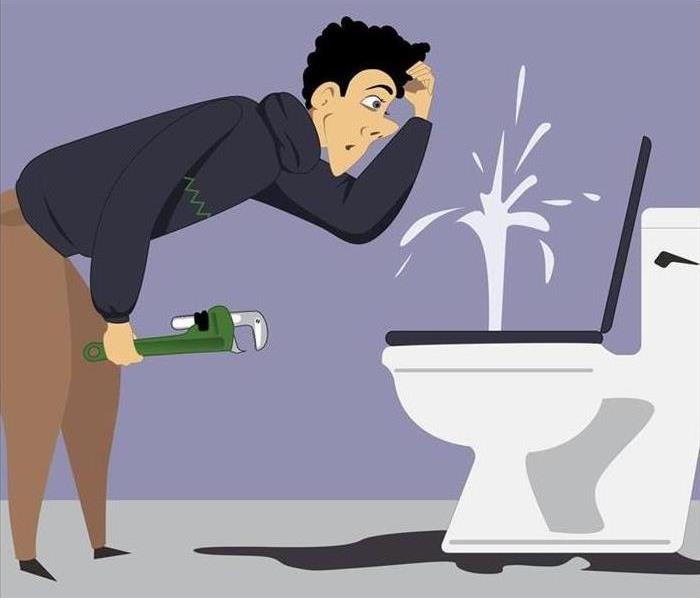 A leaking toilet is usually a simple problem to solve.
A leaking toilet is usually a simple problem to solve.
There are several signs you have a leaking toilet. It may take longer to fill up or you may see water on the floor after flushing. There are three basic things you need to do to fix the problem.
3 Steps You Need To Follow To Fix A Toilet Leak
- Locate the Source
The first step is figuring out where the issue lies. There are several places where leaks can originate:
- Inside the pipes
- Inside the tank
- From the supply line
- Under the base
A good test to help you discover the source of the leak is simply to flush the toilet. If water rises swiftly in the bowl and it threatens to overflow, you probably have a clogged pipe. If the water won't stop running, you may have a faulty gasket inside the tank. Water on the floor can either be from a leaky supply line or a broken seal in the base. Finding the source informs the steps you must take to get rid of the leak.
- Fix the Problem
Once you know the cause of the leaking toilet, you can probably find sufficient tools at your local hardware store to take care of the problem. It may be as simple as tightening the bolts at the base of the toilet. If you don't have any experience fixing plumbing issues or you cannot locate the source of the leak, however, it's best to call a plumber in Layton, UT, to fix it.
- Repair the Damage
Any type of bathroom leak can cause hidden water damage. This is especially true if the problem goes undetected for a long time or if there are delays in getting it fixed. After the leak is repaired, water restoration experts can assess the damage it caused to your walls, floors or even the ceiling of the floor below the bathroom. Fixing the damage quickly is the key to avoiding additional problems.
A leaking toilet is usually a simple problem to solve. To keep the problem from getting out of hand, fix the toilet and any damage it causes in a timely manner.
4 Steps To Protect Your Home From Water Damage
8/10/2022 (Permalink)
 Bursting pipes can cause severe water damage.
Bursting pipes can cause severe water damage.
Bursting pipes have many causes, and this increases the difficulty of addressing the problem appropriately. It's one thing to fix broken pipe systems; it's another to make sure you don't have further water damage and, possibly, mold. If you want to avoid serious damage, you need to know exactly which steps you need to take as soon as a pipe bursts.
4 Steps You Need To Take For a Bursting Pipe
- Shut Off the Water
You'll have to address a few questions at this point:
- Can you identify the point of the burst?
- Can you access the burst?
- Is there a quick way to shut water off at the point of trouble?
It's important that you stop water from gushing into your home as quickly as possible. Your best course of action may be shutting everything off at the water main. This may be located in the basement or on the outside of your home.
- Open Windows and Doors To Increase Ventilation
You need to begin the drying process as quickly as possible. This will make it easier for water damage cleanup and restoration professionals to save your home from more damage. It will also keep your costs and frustration down.
- Remove Water Quickly
It doesn’t take long for bursting pipes to send inches of water into the rooms of your home. Use towels, mops, wet/dry vacuums, and anything else that will pick up water. The faster you remove water from the area, the better you can avoid hidden pockets of moisture that cause trouble later on. Make sure you check the surrounding rooms for increased humidity or evidence of seeping water.
- Turn on Fans and Dehumidifiers
Borrow fans and dehumidifiers from your Layton, UT, neighbors if you have to or get some from an equipment rental agency. Use fans in the rooms with open windows and use dehumidifiers in enclosed spaces. Remember to empty the water out of the dehumidifiers whenever the tanks fill up.
These important steps can protect you from expensive damage, and contacting professionals is the best way to avoid secondary damage, such as mold in areas that you can't see. When you have bursting pipes, take these four steps and then call your insurance agent and the water cleanup pros.
5 Tips To Create a Business Fire Escape Plan
7/25/2022 (Permalink)
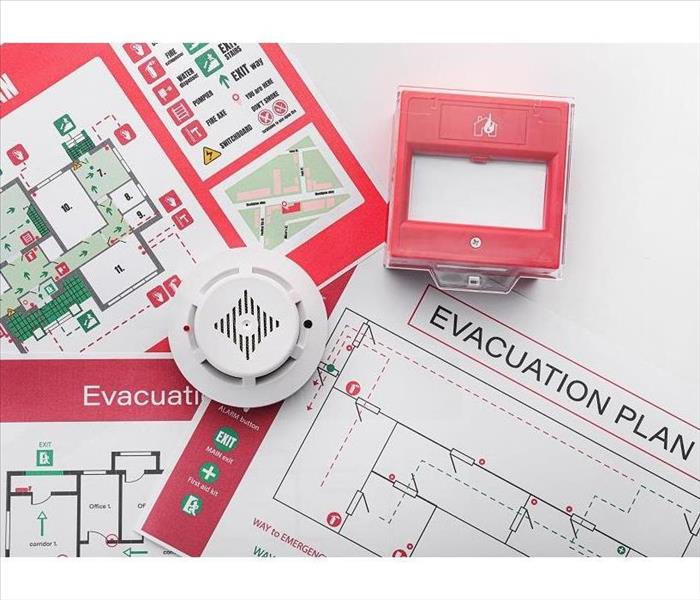 A fire escape plan for a commercial building.
A fire escape plan for a commercial building.
It is estimated that there are more than 100,000 commercial fires every year. While a fire damage and restoration company may be able to restore the property, business owners in Layton, UT, need to ensure the safety of everyone inside. Establishing a fire escape plan is essential for that to happen.
Essential Parts of an Emergency Escape Plan
Every business may be different, but there are key ingredients to an emergency plan regardless of the size or type of business.
1. Identify Potential Hazards
While not all fires are preventable, many of them are. The first step in creating a plan requires determining what hazards your business may face. Inspect every part of the property to determine what may be a fire threat. Things to look for include overloaded electrical outlets, equipment near water, employees using space heaters and storage closets with flammable chemicals. If your business has a kitchen, it is ideal to establish rules to ensure that any equipment is being properly used.
2. Assign Key Roles
When a fire breaks out, it is often a chaotic situation. To help ensure your fire escape plan works, it is important to establish a chain of command and assign key roles to specific individuals. Along with a chief warden, who will take the lead during an event, other assignments should include an assistant warden, route guides and floor monitors. The route guides will work to help people calmly evacuate and keep the path clear while the floor monitors will ensure everyone is safely out of the area.
3. Establish Designated Escape Routes
Successfully evacuating requires knowing the best path out. Every plan should have both a primary and secondary escape route. These routes should also be kept clear of objects that may slow down the escape. A map should be created, especially if your business has multiple floors, that clearly shows the route and fire extinguisher locations. Along with getting out of the building, ensure that everyone knows where to meet up after exiting the building. This location should be a safe distance away from the property.
4. Have a Communication Plan
Communication is always important, especially in an emergency situation. It is important that one of the key roles established in the plan is in charge of calling emergency responders, as well as communicating with customers, employees and other business-related people. This is an important role to not only ensure that everyone on-site has up-to-date information but also to ensure that business operations will get back on track faster after the situation is over.
5. Practice the Plan
Practice makes perfect applies perfectly to being prepared for emergency situations. Just like kids in school, adults also need to regularly go through the fire plan and conduct drills. Doing so helps reaffirm that everyone knows what they should be doing as well as serves as an opportunity to make the plan as efficient as possible.
Every business should have a fire escape plan. Whether the business is small or large, ensuring that everyone knows where to go and what to do may help ensure everyone's safety.
How To Save Your Wet Wood Floor
7/25/2022 (Permalink)
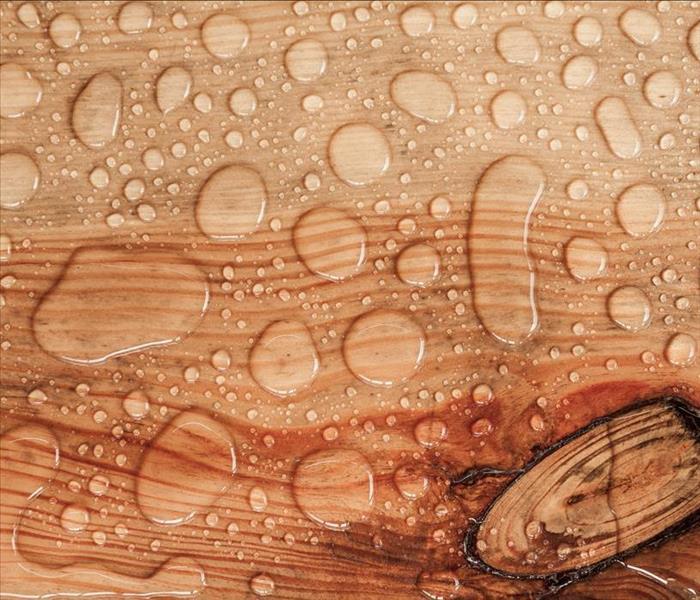 Water can damage your wood flooring.
Water can damage your wood flooring.
Wood flooring is beautiful and can enhance the look of your building. However, wood floors can easily be damaged by water from a pipe burst, spill or another source. Quick action is required to prevent permanent damage.
How To Save Your Wet Floor
Waxes and sealants provide you with more time to clean up spills and other water damage before it is absorbed into the wood. However, quick action is still required to save your wood floor from permanent damage:
1. Remove Wet Objects
Anything wet that is lying on your floor will continue to leach water into the floor. Additionally, mold and mildew may grow which can infiltrate the seams and pores of your floor. Remove wet rugs, carpets, clothing, toys, furniture and other items as soon as possible. Throw out items that can not be salvaged and move the rest to a location where they can dry without damaging your floor.
2. Remove As Much Water As You Can
Use mops, towels and clean rags to absorb as much liquid as you can. If you are dealing with a pipe burst, make sure the water supply to the pipe is shut off so that additional water isn't leaking onto your flooring. You can remove larger amounts of water with a wet vacuum. Continue to vacuum even after there is no longer visible water on the surface of the floor. This will remove some of the water that is in the plank seams and wood pores. Keep vacuuming until you are no longer seeing any new water in the vacuum canister. If you are dealing with damage from a flood or a large amount of water from a plumbing issue, consider contacting a water restoration service in Layton, UT, to assist you with removing the water from the flooring.
3. Dry the Floor
Once you finish removing as much water as you can with the wet vacuum, finish drying the wood. Position a dehumidifier in the center of the room and run it on its highest setting for a minimum of 24 hours. Position fans around the room and run them at high speed. If the damage is on an upper floor, place fans on the level below and aim them toward the ceiling to help dry the subfloor and underside of the flooring. If it is not raining, you can open some windows to increase air circulation.
4. Check for Mold
Moisture promotes mold growth. Look for signs of mold in the pores of your wood floor. If you find any, clean the floor with baking soda and water or contact a mold restoration service.
5. Test for Remaining Moisture
Use a moisture testing meter to check for moisture remaining in the wood of your floors. It may take several weeks for the floors to completely dry. Keep running your fans and dehumidifier until the meter shows no moisture remaining in the flooring.
Water from a pipe burst, flood or spill can severely damage wood flooring. However, taking quick action to remove water and dry the flooring can reduce the amount of damage that occurs.
What You Need To Know About Flooding, Flood Insurance, and FEMA
7/19/2022 (Permalink)
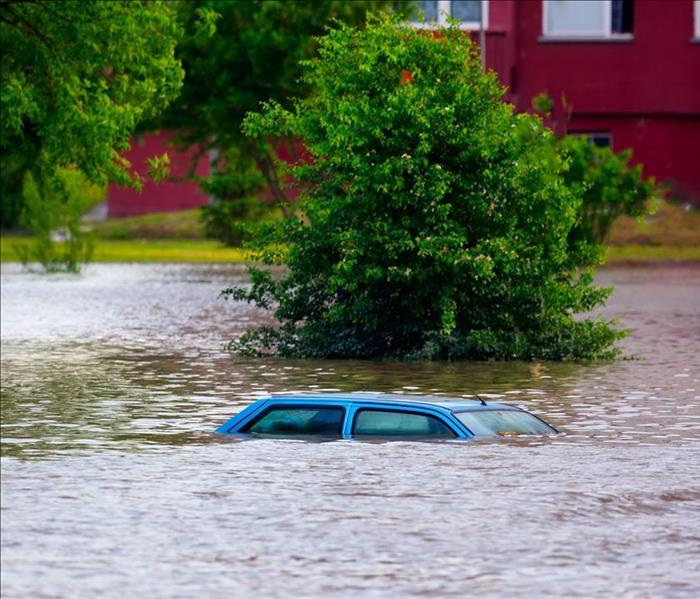 Flooding can cause severe damage.
Flooding can cause severe damage.
Floods are some of the most common types of natural disasters throughout the United States, and there are several sources of natural flooding:
- Prolonged rainfall
- Heavy snowmelt
- Powerful storms
- Broken dams
- Lack of drainage
Unfortunately, even homes that aren’t situated on a flood plane can be vulnerable to these disasters.
What Is the Importance of Flood Insurance?
Whether the risk to your home in Layton, UT, is obvious or not, it’s important to add flood insurance to your policy. This additional coverage is the best way to protect your home and family from significant loss.
What You Need To Know About Urban Flooding
Urban flooding happens when a community’s infrastructure isn’t prepared to handle heavy rainfall. In this case, water flows from roads, sidewalks, parking lots, and other surfaces into storm drains, ultimately overflowing into yards or up through residential sewer systems. Communities that aren’t located in flood zones are experiencing more risk of street flooding, overwhelmed sewer systems, and flooded neighborhoods because of heavy or prolonged rainstorms. This means that even if you haven’t had a problem with rainfall flooding in the past, you could be caught in a disaster situation in the future.
What To Do if You Don’t Have the Right Insurance
What if you don’t have coverage for flooding? You may still have some recourse through the federal government. The Small Business Administration offers loans, and the Federal Emergency Management Agency offers grants to cover some related expenses.
Loans for home repairs through the SBA are classified as disaster loans. You will have to pay back the money you receive, but you can count on low-interest rates with extended repayment periods, often up to 30 years. The specific repayment terms for your loan are determined by your specific circumstances. An SBA disaster loan can be used to repair and replace your home and your personal property, including cars. You won’t be allowed to use the funds for additions or upgrades to your home, but they may cover any work done by water damage cleanup and repair professionals. Even if you don’t think you’ll use the loan, it’s a good idea to apply because this could also help you qualify for other funds.
FEMA provides grants for families located in federally recognized disaster areas. These grants are available through the Individuals and Households Program and are generally meant to cover expenses that aren’t covered by your existing insurance policy. Unlike the broad coverage allowed by the SBA loan, the funds you receive through this grant are strictly controlled. For example, you can only use these funds to return your home to a habitable state, not to return it to its original condition.
What You Can Do Now
If you live in a flood zone, you should immediately contact your insurance provider and add flood insurance to your existing coverage. If you don’t live in a flood zone, it’s still worth discussing the risk with your insurance provider. Insurance companies are often an excellent resource for ideas about floodproofing your home and landscape. The steps you take now are much easier than the work required to recover from flooding.
Top 5 Causes of Residential Fires
7/12/2022 (Permalink)
 Cooking fires are the leading cause of fire damage in Layton, UT.
Cooking fires are the leading cause of fire damage in Layton, UT.
A property owner's worst fear is a residential disaster, like a home fire. Unfortunately, even with vigilant homeowners, some fire disasters are unavoidable. However, don't call in the fire cleaning specialists from Layton, UT, just yet. Being aware of the five leading causes of home fires can reduce your risks.
The 5 Leading Causes of Home Fires
- Cooking
- Faulty wiring
- Smoking
- Appliances
- Candles
- Cooking
Cooking can quickly lead to fire damage, especially when working with grease. A grease fire can get out of control if you don't smother it immediately. While you can allow the pan fire to burn itself out if it is small and away from flammable materials, it is best to put a lid on it and remove it from the heat source.
- Faulty Wiring
Older homes may have wiring issues. First, the codes today do not match those from a decade or more ago. Second, if you recently purchased the property, you do not know who performed past wiring work or upgrades. It is wise to have an electrical inspection done to ensure everything is up to code and safe.
- Smoking
Smoking in bed or relaxing in the living room can cause a home fire. If you fall asleep with the lit cigarette in your hand, it is possible the embers or the cigarette will ignite furniture or carpeting around you.
- Appliances
Every appliance in your home likely has a maintenance schedule and cleaning instructions. Be sure to obey the guides provided by the manufacturer. It is also a good idea to unplug appliances not in use.
- Candles
Many homeowners like candles, especially those with a pleasant fragrance. However, if you have children or pets, make sure you do not leave a lit candle unattended. Children are curious, and pets can be reckless.
While a home fire is a concern for many homeowners, knowing the common causes of house fires can limit your risks. If you wish to discuss or assess issues regarding your property, contact a fire prevention expert.
Hail Damage
7/12/2022 (Permalink)
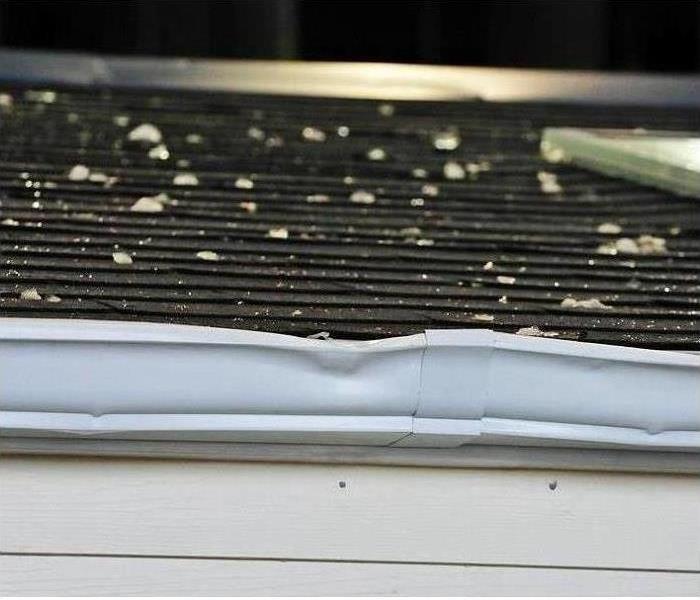 Hail can leave a lot of damage that we need to look for to avoid further loss in the future.
Hail can leave a lot of damage that we need to look for to avoid further loss in the future.
The dreaded sound of ice pellets hitting your office window tells you that the storm has become more than just wind and water. When you experience a hailstorm in Kaysville, Utah, it can cause extensive storm damage to your commercial property. You can hire professionals to take care of roof damage so that you avoid bigger problems in the future. Here are some other problems to check for after hail.
2 Problems to Check for After Hail
- Cracked or Missing Shingles. Hail damage to the roof can break your shingles.
Some shingles may even come loose or detach completely. A roofing company is generally required to fix the roof, but luckily most building insurance packages have provisions to cover at least part of the cost.
- Leaks. Roof damage can lead to leaks, which in turn can lead to a whole slew of other problems.
A wet attic that goes unnoticed can foster mold growth, turning a water problem into a mold remediation problem. It can also cause insulation to get wet, which renders it ineffective. If that happens, it needs to be replaced. Flood mitigation specialists can test areas with water damage to make sure they are remediated properly.
Prevent Water Damage
7/12/2022 (Permalink)
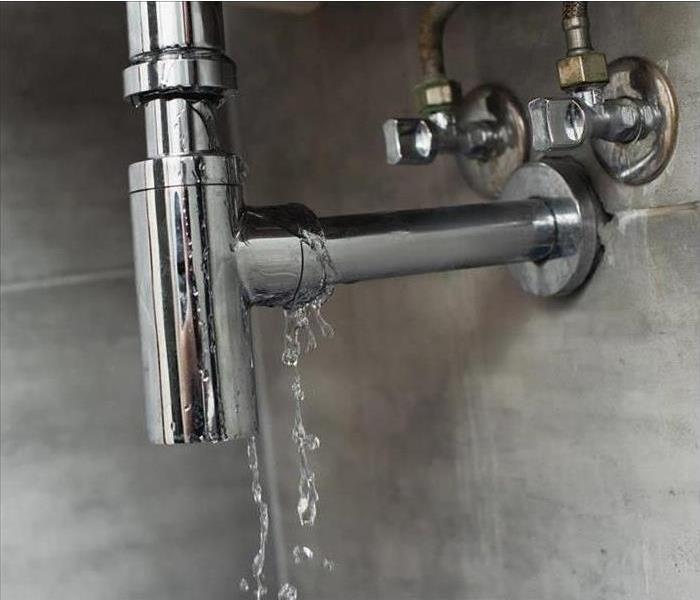 Water damage can be caused by a leaking pipe.
Water damage can be caused by a leaking pipe.
A small puddle of water in the home can turn into a big problem in a short amount of time. Your best bet is preventing any event that could cause the puddle to form. Here are four tips for preventing water damage to your home in Layton, UT.
4 Ways to Prevent Water Damage
- Maintain Appliances
A common cause of water damage in homes is a leaking appliance. There are several items in your home that can leak if they're broken:
- Washing machine
- Refrigerator
- Freezer
- Water heater
Each of these appliances should be maintained regularly to ensure that they are in good working condition. Water cleanup experts recommend frequent checks to save your home from water damage.
- Check Pipes
A small pipe leak can wreak a lot of havoc, particularly if it goes undetected for a long time. Make pipe checks a regular part of your maintenance schedule. Watch your water bill for unexplained spikes, and inspect the pipes under sinks frequently. Pipe cleanup under one cabinet is better than having to replace walls and flooring because you were not aware of an issue.
- Update Exterior Drainage
Water outside the home can easily become water in the home if you aren't careful. Keep gutters and downspouts clear of debris so that precipitation can drain properly rather than pooling on the roof. Your exterior drainage plan should direct runoff away from your home rather than toward your foundation.
- Install a Sump Pump
Despite your best efforts to prevent it, a flood from a broken pipe may occur. You can limit the amount of water damage by installing a sump pump. When this device detects flooding, it kicks into gear to pump the water out so that it doesn't seep into your floors and walls.
Damage from water in the home can take a lot of time and money to repair. Protective measures and preventative maintenance can lower your risk.
Safer Candle Alternatives
6/22/2022 (Permalink)
 Avoid Candle Fires by following our Tips.
Avoid Candle Fires by following our Tips.
Their pleasing scents and warm glows make candles a popular addition to many people's home decor. Candles can also be useful for times when the power is out. However, they can pose a fire risk. Consider these safer candle alternatives.
Avoid a Candle Fire
The holidays are the most common time of year for candle fires to occur, but they can happen at any time. Using one of these popular candle alternatives can help you avoid this risk:
1. Essential Oil Diffusers
If you are burning candles for the scent, rather than the light, consider using an essential oil diffuser. These diffusers are either battery operated or plug into a wall outlet and you can use many different scents with them including popular holiday choices, such as pine trees and pumpkin spice.
2. Flameless Candles
If you want the experience of candlelight without the fire risk, try a flameless candle. These are usually battery-operated, so you can still use them during a power outage. They don't give off a scent or generate any heat, which may make them a good alternative for summer months and for people who have scent sensitivities.
3. Wax Warmers
Wax warmers melt scented wax cubes to create the smell of burning a candle without the open flame. You can adjust the strength of the scent by increasing or decreasing the amount of wax you melt at one time. Because these items generate heat, they are not completely risk-free, but the fire risk is much lower than with an open flame.
4. Reed Diffusers
Reed diffusers aren't as powerful as electronically powered diffusers, but you don't have to change batteries or plug them in and they consistently dispense scents for weeks at a time. This is a good option if you want to use a diffuser in an out of sight area, such as a cabinet, or a location without easy access to an electrical outlet.
5. Room Sprays
Another flameless way to make your home smell nice is to use a room spray. Some of your favorite candle brands produce sprays and you can purchase automatic dispensers to keep your home smelling fresh all day.
Candle Safety Tips
According to the National Fire Protection Association, more than 8,200 house fires are started by candles every year. These fires can cause significant damage that requires restoration services in Kaysville, UT.
If you decide to use candles, use them safely. Never leave a burning candle unattended. If you must leave the room, blow out the candle first and make sure it is out. Do not place candles near flammable objects, such as curtains, furniture, carpets, paper, books, bedding and flammable decorations. Avoid touching open flames with your hair or clothing.
Do not put burning candles where pets or children can access them or where they can easily be accidentally knocked over. Avoid placing candles near vents or drafts. Don't move a candle while it is still lit or while any melted wax is liquified. Keep all candles at least three inches apart.
Candle fires can cause a significant amount of property damage. To avoid this risk, use candles safely and consider using candle alternatives.
5 Essential Tips for Repairing Residential Water Damage
6/17/2022 (Permalink)
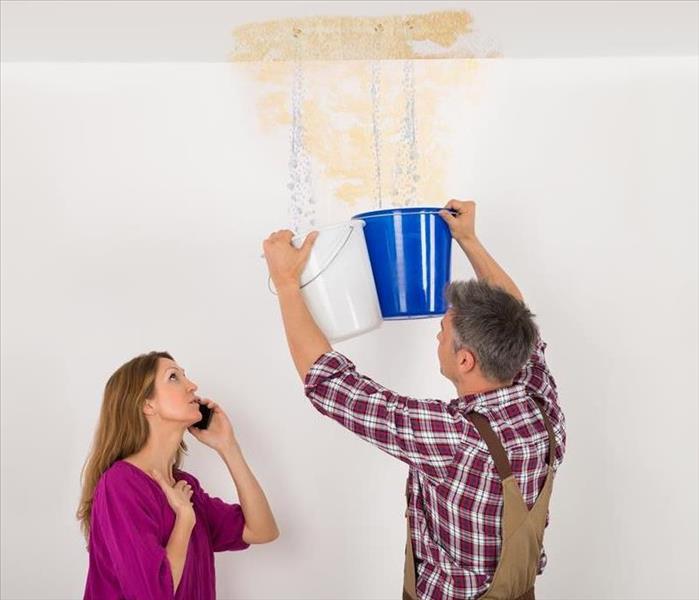 Our Specialists know a lot about Repairing Residential Water Damage. Call us.
Our Specialists know a lot about Repairing Residential Water Damage. Call us.
Plumbing lines break when they become clogged or deteriorated. Often, these conditions occur behind walls or under the ground, leaving homeowners in Layton, UT, to face sudden flooding and severe water damage. What should you do? Take action immediately.
What To Do When Water Damage Impacts Your Home
For one second, everything works fine. A moment later, you're staring at puddles of moisture, filling up the hallways and saturating precious belongings. When this event happens, it's imperative to react immediately. Don't grab the towels and mop. Instead, follow these five essential tips to minimize harm and get your home cleaned properly.
1. Find and Fix the Broken Pipes
When you see damp spots on walls or water spraying from a fixture, focus on the underlying cause. Stop the water from entering the home. Turn off the main water supply to the area, avoiding additional floods and breaches.
Work with professionals to identify pipe vulnerabilities and repair the problem. Scope the lines with visual equipment, closely examining the metal. Tend to any trouble.
2. Contact Specialists for a Property Assessment
Water damage is seemingly deceptive. Moisture seeps into porous items, dampening them and bringing with them spores and microbes. The fluid spreads far beyond the visible wet lines, often impacting objects further away. Therefore, owners should contact professional water remediation crews in Layton, UT, to look over the premises. Using moisture readers and other innovative technology, they determine how much of the home has received water impact.
In addition, they take samples from the walls, floors and valuables, testing for possible contamination. The data provides accurate information to devise a personalized response plan for the home.
3. Reduce Moisture Levels
Fungus thrives in dark, damp locations. Floods from pipes saturate materials and often trigger their reproduction. The Environmental Protection Agency, EPA, notes that these growths move quickly, rapidly increasing within 24-48 hours. Furthermore, the room's enhanced humidity continues to promote proliferation.
Therefore, owners must eliminate the wetness. The EPA suggests decreasing numbers to 30-60%. Run industrial-strength dehumidifiers throughout the impacted zones. These units pull the fluid from the walls and floors. Test regularly with moisture readers to ensure you achieve lower moisture numbers.
Drywall and carpeting hold the spores and moisture and are hard to clean thoroughly. Tear them out to lower the contamination. Remove heavily soaked items. Scrutinize all possessions. Non-porous objects can be wiped down and removed during cleaning. Assess porous things to determine if they can stay or be thrown away.
4. Sanitize and Treat the Room
When water cleanup is over, specialists turn attention to sanitizing and deodorizing treatments. Wash all non-porous items and treat them with an antimicrobial product. Clean air vents and allow experts to use their certified training and technology to reduce unpleasant odors.
5. Restore the Location's Structure and Belongings
With the underlying conditions handled, the repairs begin. Torn-out areas get rebuilt. Damaged items get replaced, and the crew starts to paint and restore the premises to better than new conditions.
Don't let water damage harm your home. Mitigate harm and restore quickly, getting your place back to normal. It's critical to take prompt action, drying the premises quickly and fixing the moisture source.
Water in Home Scenarios That Require Trained Workers
6/8/2022 (Permalink)
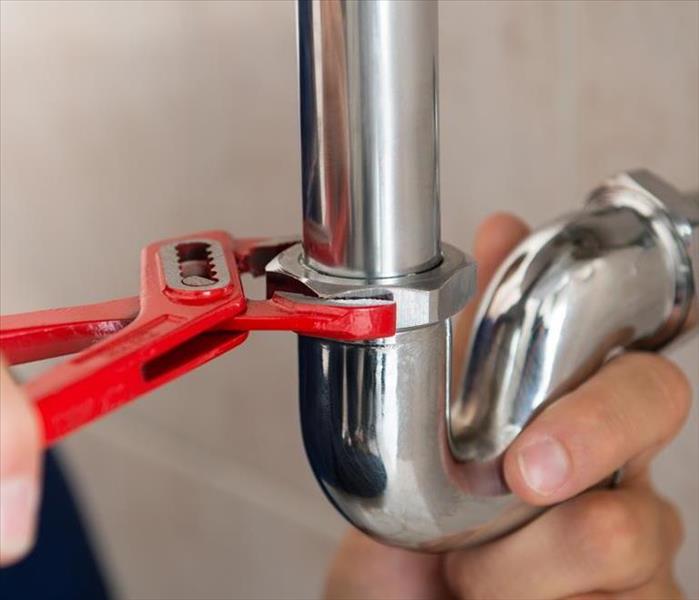 Our Trained Workers can help you if you experience Water Damage in your Property.
Our Trained Workers can help you if you experience Water Damage in your Property.
Just like the human body, your home in Kaysville, UT, has a lot of water coursing through it. Most of this water is carried safely in the plumbing system. Your home also faces outside pressures from storms and potential flooding, making a water in home event a real possibility. Fortunately, you have many resources at your disposal to prevent home water damage, plus you can quickly clean up an unexpected water event through fast actions and the help of SERVPRO professionals.
The Best Methods for a Satisfactory Pipe Cleanup
While plumbing systems are built to last, they do occasionally fail, and sometimes catastrophically. This can leave your home in complete turmoil, spraying water on carpeting, furniture, electronics and personal items. This scenario is just what a nearby SERVPRO water restoration franchise excels at. Trained technicians understand the best methods to quickly remove water from a home. They follow a proven process that includes 6 main steps:
- Rapid inspection and water damage assessment
- Water removal with advanced equipment
- Damaged material removal
- Cleaning, sanitizing and deodorizing
- Drying with advanced equipment
- Repairs and construction
You can rest assured that the work will be done according to high standards. This ensures the job will be done right the first time and your home will be restored to its original condition. The final phase includes monitoring the home to make sure secondary damage does not occur. Technicians will make sure the relative indoor humidity of your home won't support unwelcome mold growth.
The Process for a Successful Broken Pipe Restoration
Every water in home event is unique. This is why trained and certified workers are so important. They can quickly adapt to the conditions they face and use techniques that are appropriate to a wide number of scenarios. For example, a pipe that breaks in your home could contain either clean water that is suitable for drinking, or it could contain sewage water that is highly contaminated. Each of these requires different solutions.
A clean water spill is less likely to ruin furniture and flooring, especially if the water is removed from the home within just a few hours. A local SERVPRO team can usually make it to your home in less than two hours. Workers will quickly begin the water extraction process with powerful pumps that are capable of removing thousands of gallons of water in a short time frame.
If the water contains sewage, the water damage mitigation team will place an emphasis on safety for homeowners and workers. This involves making sure everyone avoids skin contact with the water. Workers will don PPE such as gloves and masks to limit contact. This scenario is also likely to involve a greater degree of replacing damaged items and structures.
The Advantage of Professionalism
Whether you face an emergency pipe cleanup or a clean water spill, it is important to partner with the number #1 choice for cleanup and restoration. This ensures a successful outcome no matter the scope of your water damage. A water in home scenario can best be handled by professionals that have restored homes for decades.
3 Tips for Protecting Your Business from Storm Winds
6/7/2022 (Permalink)
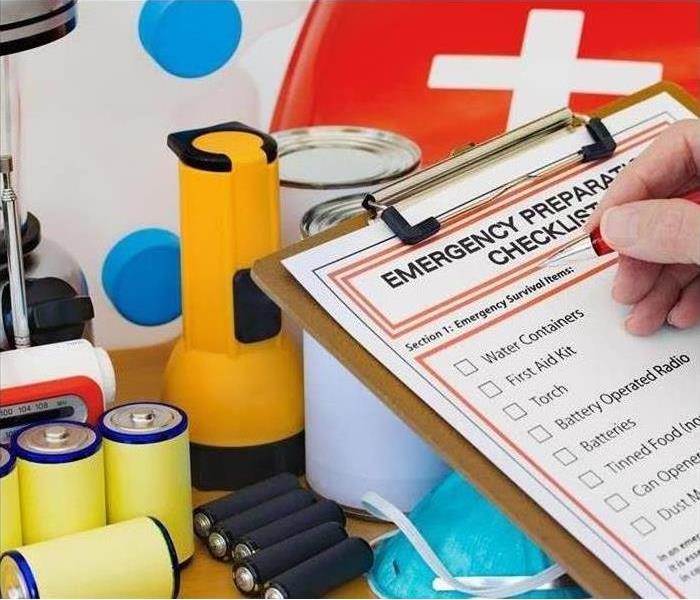 Create an emergency preparedness checklist for your Business.
Create an emergency preparedness checklist for your Business.
For a business in Layton, UT, being prepared for hurricane damage can help save you valuable time and money. In many cases storm damage can obstruct the normal business flow, meaning that the better prepared you are beforehand, the quicker you can get back up and running. Here's some tips many storm damage restoration professionals recommend for protecting your company.
Tips recommended by Specialists- Create a Storm Task List
One thing you can do to help prepare your company for a storm is to create a task list ahead of time of things you may require. This list may include gathering storm supplies such as blankets, extra food, batteries, radios, flashlights, and other gear, as well as tasks to help prepare your company buildings against inclement weather.
- Storm Prep Any Company Property
You may also want to prepare your property against hurricane damage ahead of time by investing in shutters, storm windows and doors, or a backup server for any electronic files. It's also recommended to have your roof inspected on a regular basis if you're located in an area with heavy weather. When you know a storm is coming you may want to sandbag areas prone to flooding, turn off electricity, and secure any exterior items against the weather.
- Keep Your Documentation Safe
During a storm high winds may occur that can cause debris to be thrown into your company property. This can cause damage both to the exterior and interior of your building. Such damage could lead to the loss of any files or documentation you may have. One prevention measure against this is to secure your files away from areas that are more prone to damage. You may choose to backup any electronic files onto our server as well.
If you're concerned about hurricane damage occurring to your business, then following these preparedness tips may help. Create a list of everything you'll need to do in the event of the storm, and be ready to storm prep any company property. You may also want to ensure that all your documentation is secured. If you have any questions or professional might be able to help.
Recovering From a Home Fire Only Takes Two Phone Calls
6/7/2022 (Permalink)
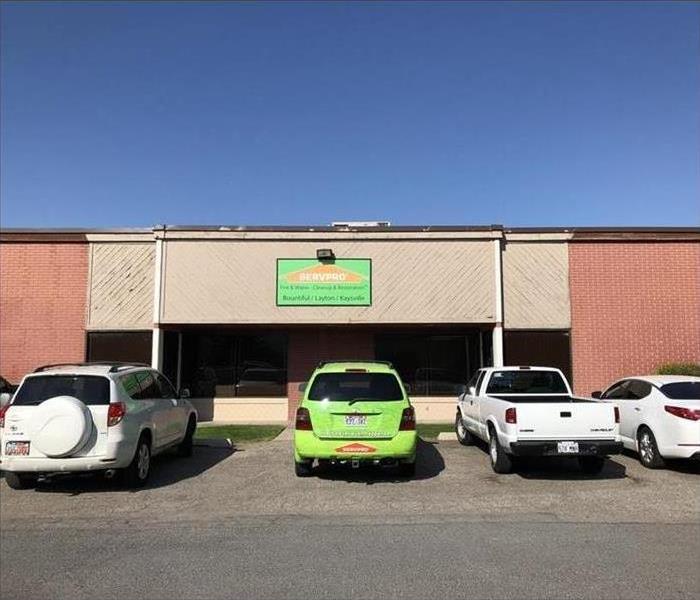 Having the help of the best Professionals Only Takes Two Phone Calls.
Having the help of the best Professionals Only Takes Two Phone Calls.
The first call is easy. Contact your insurance company and explain your situation. They will confirm your coverage and send an adjuster to assess the damage. The basis for the adjuster’s estimate is the amount of damage caused by the fire.
This fire restoration estimate includes the cost of:
- Protecting your home from the wind and rain until repairs are complete.
- Removing water and eliminating water damage.
- Removing restorable items and sending them out for restoration.
- Removing damaged material for disposal.
- Removing the effects of smoke and soot on your home and its contents.
- Cleaning your home in preparation for final restoration.
- Restoring your home to its original condition.
The Rest Is Up to You
The adjuster leaves you shaking your head. In one hand, you have the estimate. In the other, you have the insurance company’s list of preferred vendors in the Layton, UT, area. You dread the thought of:
- making all those calls
- talking to all those contractors
- scheduling all that work.
It looks like a full-time job. You don’t have that kind of time. You look at the list of preferred vendors and, suddenly, one name jumps off the paper.
Your Second Call Is Even Easier
That name belongs to a company that can do the entire job. There is no need to convince them of the urgency. They already understand that the tarps and plywood must go up immediately.
Many people don’t understand the extent of this company’s capabilities. When you excel at something, people tend to forget about your other skills. Providing rebuilding services is a natural addition to their cleaning and restoration expertise.
After all, why would you bring in a separate contractor after a fire to rebuild when one can do it all? Having this company do the job is one-stop shopping at its best.
It’s Time To Make That Call
You’ve selected the best contractor from the preferred vendor list. You want the restoration to begin quickly. It’s time to make that second call. Those full-service fire remediation specialists are ready to go.
What it means to be a Preferred Vendor?
6/7/2022 (Permalink)
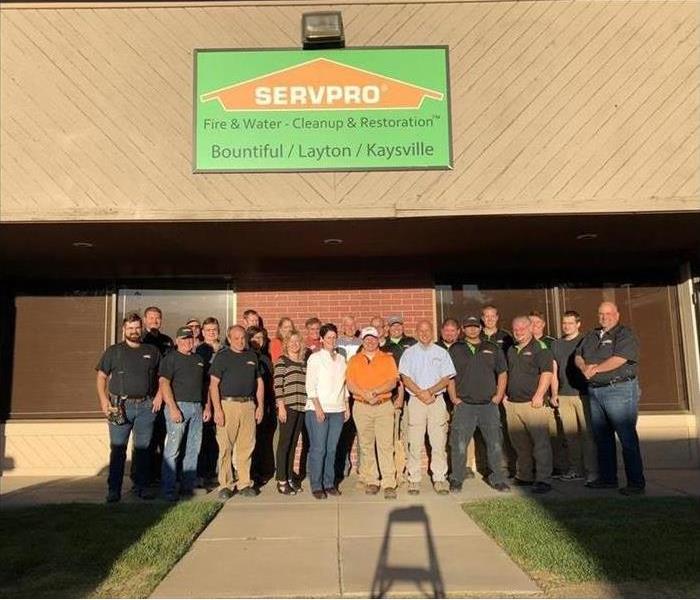 We are a restoration company that provides quality workmanship.
We are a restoration company that provides quality workmanship.
When property restoration business owners become preferred vendors with insurance companies, it means that the restoration business provides quality workmanship and works well with the insurance providers. Property can choose their own cleanup and remediation companies, but when they chose from the preferred vendor program, there's an expectation of good quality services.
An insurance agent typically provides contact information for companies who meet the following qualifications:
- Compliance with standards set by the Institute of Inspection Cleaning and Restoration Certification
- Compliance with standardized pricing and a willingness to provide services at a discount
- Compliance with insurance company requirements
How Vendors Reach Preferred Status
There are several steps a property restoration company must do to become part of a vendor program. SERVPRO, for example, agrees to 21 guidelines established by insurance companies. Some of these requirements include employee background checks, equipment maintenance, ongoing safety trainings, and proper drying validations. Many of the requirements are measured against standards from the IICRC.
Insurance Companies Benefit From Working With Preferred Vendors
The insurance agent, the adjuster, and the underwriters have many reasons to work with companies, such as SERVPRO. Working with compliant vendors makes the insurance company's job easier.
- Resources, including training, equipment, and account managers, are shared on a national level.
- Oversight is consistent across the country due to consistent training and audits.
- Local offices are located all over the country, so customers receive services quickly.
- Reporting is handled on multiple levels for thorough management purposes.
Preferred Vendors Benefit As Well
In return for working closely with large insurance companies, preferred vendors get a lot of work sent their way. The cleanup and restoration professionals don't have to spend as much time or energy on marketing. They can refer their clients to insurance companies for positive referrals.
A Layton, UT, insurance agent wants to provide clients with cost-effective solutions. A quick response from remediation professionals and top-quality methods can keep claims costs lower by reducing the potential for further damages. Local franchises that meet the right requirements can be powerful advocates for insurance companies and customers.
Common Damage Caused by Winter Storms
5/24/2022 (Permalink)
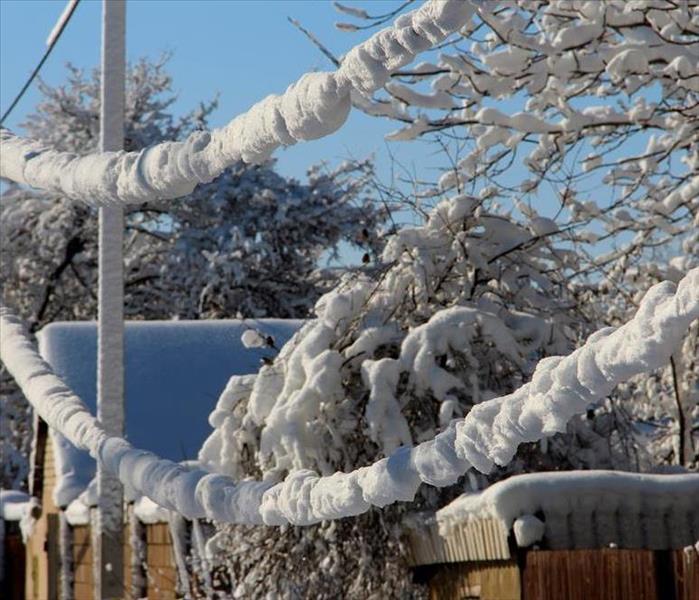 Be ready for Winter Storms by Following These Tips.
Be ready for Winter Storms by Following These Tips.
For homeowners in Kaysville, UT, a severe winter storm is to be expected. What homeowners may not expect is extensive damage from the storm that requires a storm and water damage restoration company to repair.
The Effects of a Blizzard
When dealing with ice, snow and sleet, your home may not be ready to handle what they may bring. Instead of hoping for the best, homeowners should have a good understanding of the common causes of water and roof damage during cold weather. These include:
Wet Snow:
Extra-heavy, moisture-filled snow early in the winter easily accumulates. As it does so, this extra weight puts stress on power lines, roofs, trees and other structures. Over time, only a few feet of snow may be enough to cause damage.
Ice:
Similar to wet snow, the weight of ice is too much for some structures. As the rain turns to ice, it can create layers of ice that can be detrimental to your home and the power grid. If ice dams form on the roof, it means that moisture is being pushed under the protective roof layers and may lead to extensive damage.
High Winds:
No matter the season, strong winds often accompany moisture. That often leads to missing shingles, falling branches and siding going missing. Combined with frigid temperatures, it may leave your roof and structural components of the home exposed to moisture.
Flooding:
Along with potential flooding after the snow melts, freezing temperatures during a winter storm also lead to frozen pipes. If ice has built up, it may be blocking the melting snow from properly draining. If that happens, you may easily find unwanted water in your home.
Prevention Tips
While you may not be able to prevent the storm from brewing, there are ways to minimize its impact on your home. A key to ensuring your home is ready for any storm is staying on top of maintenance throughout the year. Key ways to minimize the effects of ice and snow include:
- Get the roof inspected annually to ensure it is in good shape and up to code.
- Regularly check the foundation for any cracks, leaks or missing seals prior to the storm.
- Prior to winter setting in, disconnect any outdoor hoses and insulate faucets.
- Check doors and windows for any gaps and install weather stripping to help keep the cold out.
- Clean the gutters to reduce the chances of ice dams forming.
- Keep tree branches trimmed and away from the home.
Along with trying to prevent damage to your home, winter weather also requires thinking about safety. Before the cold season starts, it’s a good idea to have your heating system checked to ensure it is running properly. That is also a good time to stock up on salt to keep driveways and walkways less slippery.
Any winter storm has the potential to wreak havoc. While the winter wonderland may look pretty, ice and snow can cause different types of damage to the home. Staying on top of maintenance and being prepared are key ways to minimize the damage.
How Pretesting Helps To Lower Insurance Claims
5/19/2022 (Permalink)
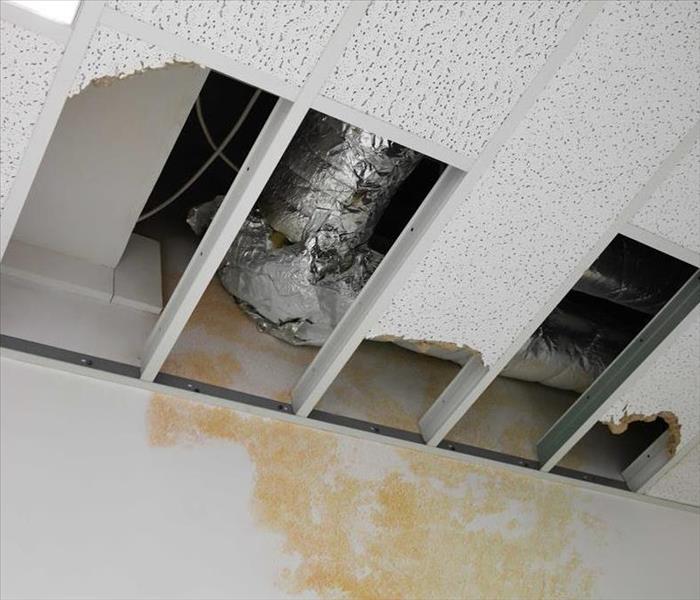 Know more about Insurance Claims by Following Our Tips.
Know more about Insurance Claims by Following Our Tips.
Having a solid property insurance policy is essential for any property or business owner. Managing the claims process well is one factor in keeping premiums affordable. When a building in Layton, UT, is damaged, it makes sense to call certified restoration experts so that the mitigation process can begin as soon as possible. The best teams, however, start with pretesting. A little extra attention at the beginning of cleanup can make a world of difference when it comes to filing accurate insurance claims.
Identify Contamination Level
Any time there is water damage in a commercial building, a preliminary inspection helps technicians determine the extent of the issue. First, they identify the source of the water. Even if the leak is from a clean source, however, it is prudent to test for the contamination level:
- Category 1 - Clean water from pipe or supply line
- Category 2 - Gray water from machine or appliance runoff
- Category 3 - Contaminated water from a storm or the sewer
The initial source may put out clean water, but excess moisture can easily become contaminated before the cleanup crew gets to it. For example, a leak may start with a malfunctioning faucet but pick up dirt and other debris as it seeps through walls and flooring. Knowing this information at the beginning of the process is crucial for creating an accurate claim.
Reveal Additional Issues Through Inspection
Another way that pretesting helps to lower claims is by showing the scope of the problem during the inspection. Any additional issues that are discovered can be repaired before they cause secondary damage. For example, a busted pipe may be the cause of the current emergency, but when technicians discover weaknesses in the pipes around it during their assessment, they can make recommendations for preventative repairs.
The building owner can go ahead and have those issues repaired so that they don't cause water damage later, which saves him or her from having to file another insurance claim.
Inform Future Prevention Strategies
A maintenance problem that leads to water damage is not exactly good news, but it can be informative, particularly when it comes to prevention. Once strategies are implemented and the cause of the water loss is thwarted, the number of claims the client files should be reduced dramatically. Prevention can include actions such as adding insulation to pipes along external walls or replacing worn-out plumbing.
Business owners should talk to their insurance agent to understand the maintenance responsibilities the provider expects clients to uphold under specific policies.
When a building sustains water damage, it is understandable for business owners to want to resolve the issue as soon as possible, but thorough remediation starts with pretesting. A solid assessment helps technicians properly diagnose the problem and create a clear plan of action. It is also vital for compiling an accurate task list for the itemized estimate. Such an investigation can even prevent the problem from happening again in the future. Inspections and other tests at the beginning of the cleanup process reduce insurance claims in the long run.
How To Protect Your Property After Fire Damage
5/11/2022 (Permalink)
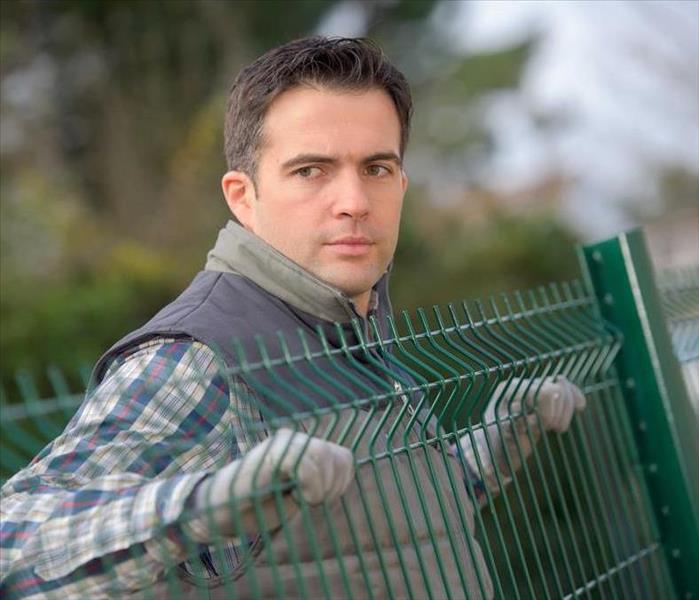 Protect Your Property and Avoid Fire Damage in your Property.
Protect Your Property and Avoid Fire Damage in your Property.
Even after taking many precautions, your commercial property in Kaysville, UT, can experience fire damage. When this happens, most of your attention will naturally be on recovery from damage and ensuring the safety of the people on and around your property. Unfortunately, looting can also be a cause of loss in the aftermath of the fire.
Prevent Looting and Other Losses After Fire Damage
Many businesses simply aren't very secure even before an emergency, and after a fire, those buildings become enticing to looters and other unwanted intruders. There are several reasons that your property is more vulnerable at this point:
- Doors and windows aren't tightly secured.
- Structural damage leads to more openings.
- Many unknown people are walking in and out of the property.
When your business is in upheaval, it's much easier for intruders, including animals, to enter your property.
Board and Tarp Openings
One of the first steps you can take to prevent looting after fire damage is hiring property cleanup and recovery professionals to board up and add tarps to your building. This step prevents water and wind from causing secondary damage.
It also discourages people from climbing through those openings and stealing materials from your property as well as protecting you against any liability you may hold when a third party is injured while on your property.
Remove Valuable Belongings
When the fire department gives you the go-ahead to reenter your property, remove valuable belongings that would attract the attention of intruders. Some fire cleanup and recovery technicians will remove and repair some of those belongings, so work closely with these professionals.
In addition to computers and other machines, you may want to secure inventory, fixtures, and materials such as copper wiring.
Discourage Animal Intruders
Identify areas that are still vulnerable, particularly to animals and pests. Rats, mice, and birds may move into your building through new gaps and cracks in the walls and roof. These pests build nests, chew up building materials, and gnaw through wiring. This damage leads to further damage and opens up opportunities for corrosion and mold growth.
Insects may also find a damaged building more enticing and can cause damage when building hives and as honey seeps through cracks in the walls. All of these pests can disrupt daily routines with unwanted noise.
Implement Obvious Security Measures
Next, make sure you have visible security measures and deterrents. Temporary fencing is a great way to make it harder for would-be intruders to tamper with your property. Visible cameras and security systems warn away anyone tempted to enter your building. The boarding that you had installed previously is an integral part of this prevention.
Arrange for visual inspections and patrols. The presence of someone moving around on your property discourages passersby from stopping to investigate. An official presence on your property keeps curious onlookers, looters, and kids away from your building throughout the fire cleanup process.
When fire damage makes your Kaysville, UT, building vulnerable to intruders, you risk loss through further property damage, theft, and liability. Protect your property and belongings by taking steps to reduce access, discourage trespassing, and increase a security presence.
The Benefits of Working With SERVPRO
5/7/2022 (Permalink)
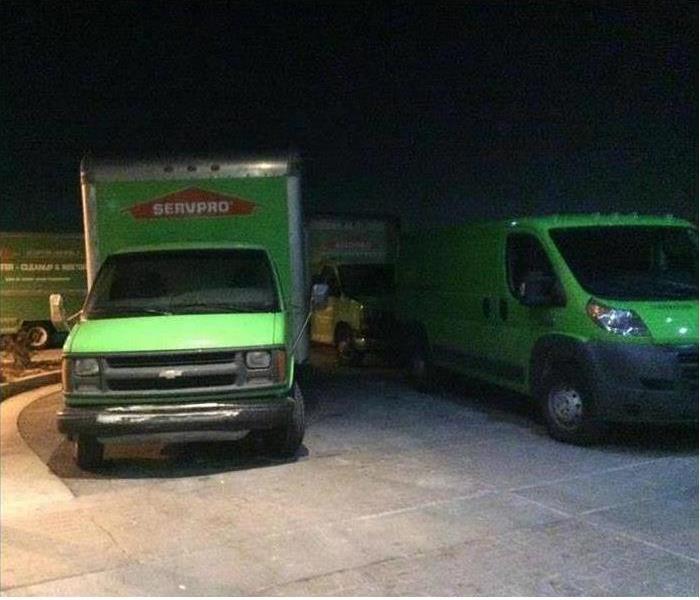 Working with SERVPRO has many Benefits. For more information, just contact us.
Working with SERVPRO has many Benefits. For more information, just contact us.
When business owners in Layton, UT, need emergency remediation services, their first call is usually to their insurance company. The next call they make should be to certified mitigation experts. The claim services that SERVPRO provides are beneficial to both property owners and policy providers.
Accurate Reporting
The first thing the emergency response team does upon arrival at a damaged property is assess the extent of the problem. The Claims Information Center is your resource for the most accurate information on the job:
- Dated timeline of process from start to finish
- Itemized estimate of remediation needed
- Photos of damage on site
All of this information is avaiable to both the business owner and the insurance company. Everyone involved is kept informed through every step of restoration.
Claim Reduction
One of the claim services SERVPRO offers is pretesting. While many companies may be inclined to tear everything out and rebuild anew, this can lead to costly claims. When technicians pretest, they can usually find materials and items that are salvageable, thus reducing the total claim amount. They work to offer the best service at the lowest price.
Efficient Updates
Once the work gets started, other issues may arise that change the original estimate. For example, water damage could have expanded or caused secondary problems such as mold growth. If this happens, technicians update the report on the website, informing all concerned parties of the change. The call center is also available not only for new reports but also to answer questions about ongoing projects. This is the kind of transparency clients should be able to expect from certified professionals.
With efficient task management and digital claim services, SERVPRO is the bridge between business owners and their insurance providers whenever disaster strikes. Property owners get the fast help they need, and providers are informed of any changes. Up-to-date, accurate reports make the claims process easier for everyone involved.
What To Do If Your Basement Floods
4/21/2022 (Permalink)
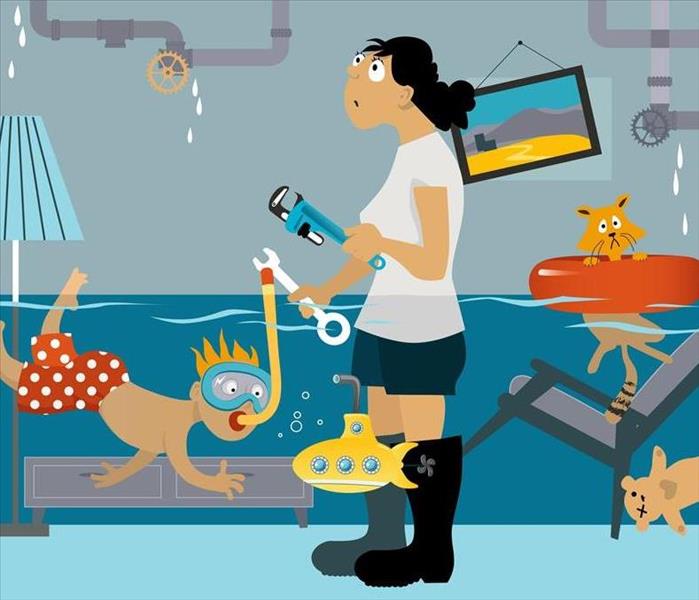 Know more about Basement Floods and Avoid Water Damage in your Property.
Know more about Basement Floods and Avoid Water Damage in your Property.
Because it is the lowest level of your home, flooding can be a problem in your basement when you have heavy rain or a nearby body of water overflows. Taking the proper steps after a flood is important for limiting your damage and staying safe.
What To Do When You Have a Basement Flood
There are several steps to take when dealing with water in your basement.
1. Call Professionals for Large Floods
If you have a large amount of water in your basement, it may be dangerous to attempt to clean it up on your own. Contact your power company to shut off the electricity. Contact a professional flood remediation company in Layton, UT, to deal with removing the water. Aim to dry out your basement and contents in 48 hours or less. After that point, mold may become a problem.
2. Remove Water If
you have just a few inches of water in your basement, you can remove it with a wet vac. If you don't own one, you may be able to rent one or purchase one from a hardware or home improvement store.
If you have just a small amount of water, you can use mops, towels and sponges to clean it up.
3. Dry Your Basement
Once you remove the water, you will probably still have excessive moisture in the air. This can lead to mold growth. Use fans and dehumidifiers to circulate the air and remove the excess moisture.
Throw out any wet contents or move it outside until it dries. Turn your air conditioning on and leave it on.
4. Clean Flooring
Standing water from flooding can contain bacteria and organic matter. Use a mixture of one cup of chlorine bleach and one gallon of water to clean your floors and any other surfaces that the water was in contact with.
Wear protective eyewear and gloves and make sure the room is ventilated while you clean.
5. Prevent Future Water Problems
Reduce your risk of future water problems by making sure your downspouts, gutters and drains are not clogged with debris. Consider installing screens to prevent leaves and birds' nests from accumulating. Check your basement drain and clean it if necessary. Check for leaks that need pipe repair.
Consider taking other steps, such as changing the grading of your yard to promote water running away from your house, to reduce your flood risk.
6. Relocate Your Stuff
It is best to avoid storing valuable property in your basement, particularly if it is easily damaged property, such as items made from paper. If you must store things in the basement, put them on shelves or concrete blocks to keep them above the waterline. Use plastic storage bins instead of cardboard boxes for storage.
7. Service Your Sump Pump
Your sump pump is an important part of protecting your basement from water damage. Get it serviced to make sure it is ready for the next weather event.
Flooding in your basement can be a major hassle. Taking the correct steps after a flood can help keep you safe and prevent unnecessary damage from occurring.
Understanding Your Company's Fire Sprinkler System
4/13/2022 (Permalink)
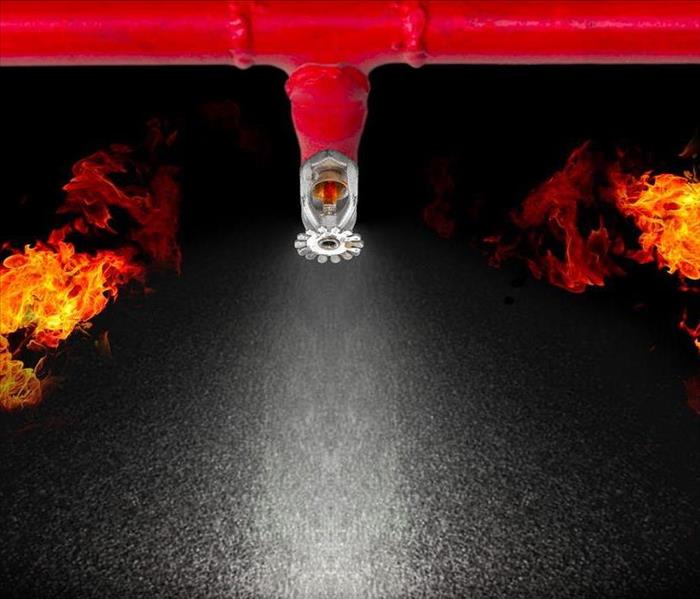 To avoid Fire Damage, it is good to Understand Your Company's Fire Sprinkler System
To avoid Fire Damage, it is good to Understand Your Company's Fire Sprinkler System
If your company has taken the extra step of putting in a fire sprinkler system, it has made a significant investment in fire protection. These units are at the ready night and day and can effectively suppress an incipient fire that could cause many thousands of dollars of damage.
Business fires are all too common, especially if your company in Kaysville, UT, is in a high-risk industry:
- Hot food preparation
- Warehousing of combustible items
- Heating and cooling
- Manufacturing
While sprinklers in your building are a valuable investment, they only are effective for fire suppression if they are in working order. To a large extent, this task falls on the company you contracted with, but that doesn't mean you don't have any responsibilities.
Knowing All About Your Fire Sprinkler System
The more you or someone in your company knows about the sprinkler system, the better off you will be. This allows you to develop a working relationship with your contractor and lets you keep track of regulations and compliance laws. A rudimentary understanding of how the system works is also important.
In general, a business sprinkler system has a series of piping that runs throughout the critical areas of your company. At certain points, sprinkler heads can release water from these pipes. When a fire starts, sensors recognize the heat and the system activates, spraying water onto the fire.
The best part of a good system is that it stops fires before they get big. This can prevent a lot of damage. You will still need a professional water damage restoration company to come to your building, but the cleanup will likely be fairly small. A fire sprinkler cleanup pales in comparison to a restoration job that includes soot and smoke damage.
Understanding the Installation Process
The people who install your system will be professionals who are well versed in the pertinent regulations and codes that apply. They can install the entire system when the building is going up, or they can put in a system in an existing building.
The cost for a good fire suppression system is not cheap, but it can save your company money on insurance. If the system is ever needed, especially at night when no one is around, it will be among the best investments your company has ever made.
Dispelling Myths About Sprinklers
Some companies worry that sprinklers could discharge for no reason or just because the air is too warm. Or that an insignificant heat source could activate the sprinkler heads, but this is rare and is unlikely to cause much damage to an area.
It is also important to note that not all sprinkler heads activate at once, only those nearest to the flame. In many cases, only one sprinkler head is needed to contain a fire.
At the minimum, your company should have a robust fire prevention plan in place to protect your property, your employees and the future of your company. A solid fire sprinkler system is one of the most effective ways to limit the damaging effects of a commercial fire.
Protect Your Home From Water Damage While You're Away
4/9/2022 (Permalink)
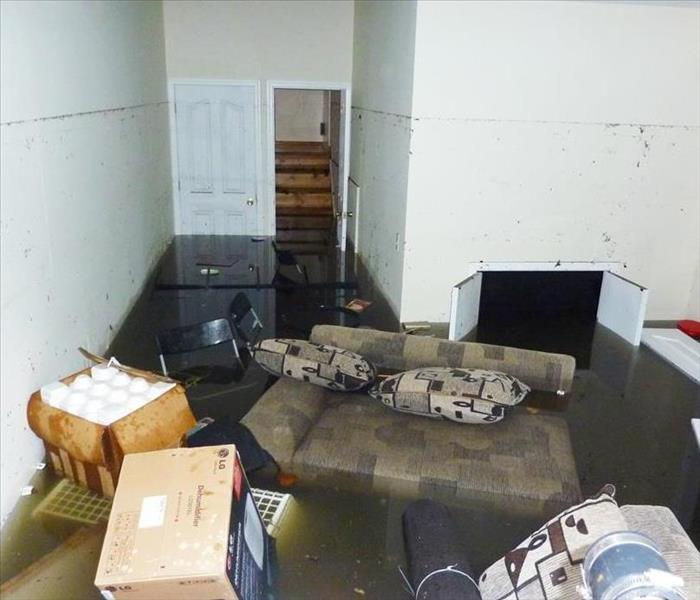 Protect Your Home From Water Damage by Following Our Tips.
Protect Your Home From Water Damage by Following Our Tips.
When you're preparing to head out of town, protecting your home from water damage may not be on your to-do list. Sadly, water damage is the second most common type of home insurance claim. It only takes minutes for gallons of water to flood into your property. If you don't catch the need for water pipe repair until several days or weeks have passed, the damage will be extensive. The good news is that you can take steps to keep your home safe.
Quick and Easy Prevention
Many of the tips for preventing a broken pipe and other sources of flooding require minimal time and effort:
Leave the heating and cooling system turned on as usual. The consistent air circulation prevents trouble, such as increased humidity from the heat and frozen pipes in the winter.
Make sure the gutters and downspouts around your home are clean, so rainwater is diverted appropriately away from the home.
Shut off the water main and flush the pipes, faucets, and toilet until no more water is running.
If your trip away from home is scheduled during the winter, add insulation around any exposed pipes and a sleeve around the water heater. Check your local hardware store for marine antifreeze to put into the remaining water in the toilet and leave the doors to cupboards and cabinets open to allow for air circulation.
Thorough Inspections
One of the best ways to avoid water pipe repair, even when you aren't going out of town, is scheduling regular inspections. You can do this yourself, or you can hire a professional who can recognize trouble while problems are still small. Physically inspect every source and container of water:
- Water heater
- Appliances and hoses
- Toilets
- Pipes under the sinks
It's also a good idea to make sure the seals around the windows are watertight and run a quick test of the sump pump, so you can be confident it's in good working condition.
If your home does get flooded while you're gone, a working sump pump could reduce some of the damage. On the other hand, a sump pump that isn't working properly could cause flooding.
Trustworthy Neighbors
Even a slow drip of water from a broken pipe can cause a lot of harm to your Layton, UT, home, especially if the leak springs right after you leave. However, if you have neighbors who are willing to walk through your house from time to time, they can catch spot trouble and take action quickly. Let them know which areas could be problematic and provide them with contact information, so they can quickly organize cleanup and repairs if flooding does occur.
If you do come home from a trip and find flooding, contact a water damage cleanup professional right away. Next, contact your insurance company, so an adjuster can get started on your insurance claim. Your insurance company can also tell you which steps you can take next.
Even with preventative steps, your Layton, UT, home could still be exposed to water damage. When water pipe repair is necessary, a professional response is thorough and effective.
How To Identify Black Mold
3/21/2022 (Permalink)
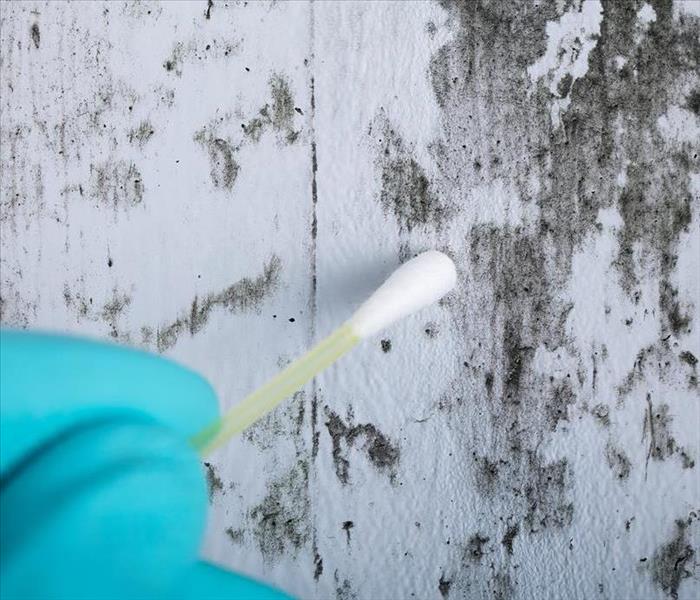 Follow These Tips, Identify Black Mold, and prevent Mold Damage in your Kaysville, UT Home.
Follow These Tips, Identify Black Mold, and prevent Mold Damage in your Kaysville, UT Home.
If your Kaysville, UT home has a musty, earthy smell, it’s a sure sign that there is mold growing somewhere. When there are no visible spots, getting a mold inspection done by a professional mold damage restoration company will determine the type of fungi that has invaded your home.
What Is Black Mold?
Although “black” may be in its name, Stachybotrys mold isn’t always that color.
Although typically dark, it can range from dark green to dark brown. In some instances, they have orange hues or white specks. Regardless of the color, it often appears fuzzy and grows in a long line like a stain. Nigrospora and Cladosporium are commonly found. They are dark in color.
Even if you don’t see the mold, its unique smell alerts you to a problem. The smell emitted actually comes from microbial volatile organic compounds, which are gasses produced during reproduction and feeding. As it continues to grow, it releases spores into the air. Once these microscopic spores are floating around, it may affect indoor air quality. This type of mold is most commonly found in the following areas:
- On or near cellulose materials, such as drywall and wood
- Damp areas, especially basements
- Behind walls and ceiling panels
- Condensation prone areas, such as the bathroom and kitchen
- Grout and sealants
Why Get a Mold Inspection?
When you find house mold, know you have a problem. When you can’t see it, you still know there is a problem. If mold is left to flourish, it may mean bigger problems down the road. Since mold spores find new places to build a new colony, the structure of the home is at risk. Large areas of mold eventually need to be replaced, which may get costly.
Calling a professional for an inspection helps ensure that doesn’t happen. Along with the expertise and tools to locate hidden mold, professionals will be able to create a plan of action to eradicate the problem and return your home back to like new. It is worth contacting a professional when:
- There is a musty, moldy smell that lingers but no visible mold.
- The home has experienced recent flooding, plumbing leaks or other moisture issues.
- Mold has been detected before and the homeowner wants to ensure the issue was properly taken care of.
- If it is a new home you are purchasing, there may have been undocumented water damage.
Any home, such as a vacation home, that has been unoccupied or closed up should get a mold test. Varying levels of humidity may have provided the right conditions for mold to form.
While finding or smelling any mold in your home is unpleasant, it is important to know what you are dealing with. A professional mold inspection helps provide those answers, along with solutions to solve the problem.
5 Benefits of Emergency Board Up Services
3/14/2022 (Permalink)
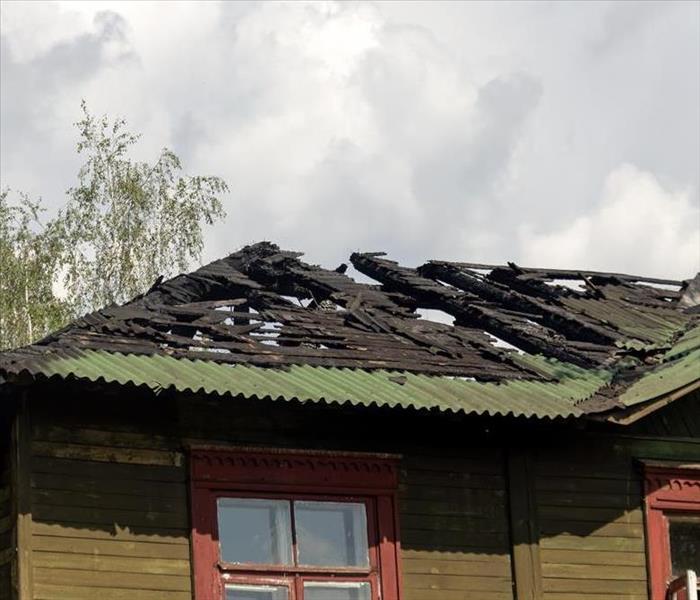 Discover the Benefits of Emergency Board Up Services. If you have more doubts, just contact us.
Discover the Benefits of Emergency Board Up Services. If you have more doubts, just contact us.
The aftermath of a fire in your Layton, UT home is a stressful and chaotic time. Along with determining the losses, calling the insurance company and finding a professional fire damage company, it also means waiting for restoration to begin.
During that time, securing board up services is essential to minimize loss. These specialized companies are available 24/7 and have the expertise and equipment to complete tasks from winterizing a property to cleaning up glass and stabilizing the structure. Below are three ways these services help.
Benefits of Emergency Board Up Services
1. Protect Insurance Coverage
In many situations, the insurance company will require you to do an emergency board up. Depending on the damage, this may mean tarping a roof, boarding up windows or installing a temporary fence around the property. If you don’t take action, you may risk getting full compensation for your losses.
If additional damage is sustained due to openings, you will likely have to cover those costs out of pocket. The faster you find the right provider, the better the odds that additional damage won’t happen.
2. Minimize Secondary Damage
Any openings in the home are ripe entries for Mother Nature to wreak havoc in many forms. While waiting for repairs, a sudden rainstorm or high winds may cause more damage. Water is the most important thing to keep from entering the home. Along with smoke and soot damage, unwanted water leads to potential mold growth and possible degradation of the structure. Using board up services also helps keep pests away. Rats, raccoons, mice and other creatures love finding new shelter. Once inside, they have no qualms about leaving a big mess behind.
3. Deter Vandals
After a fire, there is a good chance that you will have to secure a temporary residence. This means your home has a higher risk of vandals and thieves taking a look around. Along with stealing valuable belongings, such as electronics and appliances, they may also be on the lookout for precious metals in plumbing fixtures. On top of looting, they may easily cause other damage that adds to the headache.
4. Minimize Liability
After a fire, there is often debris and other potential risks laying in wait. Along with providing temporary coverings for openings, many providers also ensure that the perimeter around the home is free of debris, limiting the chances of an accident from happening.
5. Ease the Claim Process
When you find a trusted provider, you also get peace of mind that they will be working directly with your insurance company. This helps speed up the entire process, which is always a good thing in this type of situation. By working with the insurer, they will have a good grasp of the damage and what needs to be done. This frees you up to focus on other aspects of the loss, such as temporarily relocating and organizing possessions.
When a fire breaks out in your home, it leaves much more behind than just soot and smoke damage. Securing the property with board up services is essential to prevent additional damage and lets you focus on getting back on track.
How To Prevent Rain Damage to Your Building
3/9/2022 (Permalink)
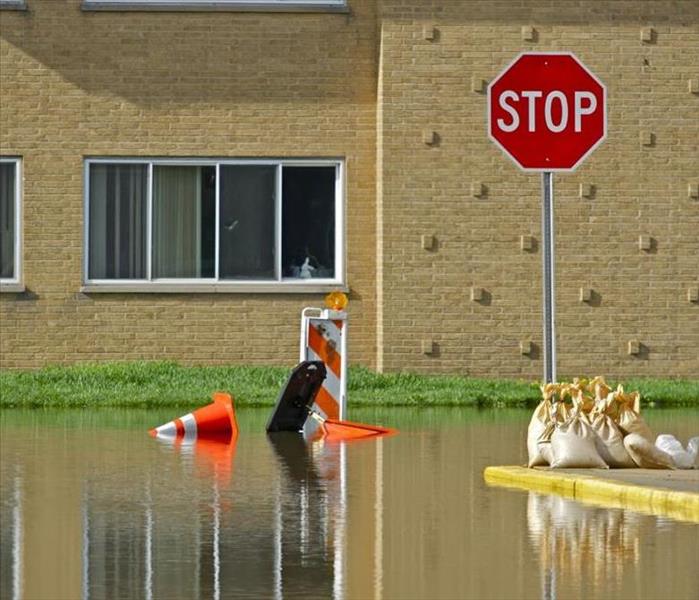 Prevent Rain Damage in Your Commercial Building by following These Tips.
Prevent Rain Damage in Your Commercial Building by following These Tips.
Seasonal downpours can wreak havoc on your commercial property. During a strong storm in Kaysville, UT, there is a heightened risk of rain damage to your building. Fortunately, there are many steps you can take to decrease your chances of flooding and protect the structure from both water damage and secondary issues such as mold growth.
Control Water Flow To Prevent Rain Damage
Flood prevention starts with a tight building envelope. Begin with a thorough inspection of every possible place where excess moisture is likely to enter your structure:
- Does the roof pitch encourage efficient runoff?
- Is your roof intact?
- Are the windows and doors well-sealed when shut?
- Can you identify any weak spots where exterior walls meet the roof?
- Is your foundation stable and free of cracks?
The harder it is for water to get into your building, the less likely you are to find water damage during a storm, particularly on the upper levels. A frequent survey of the building is an important part of a preventative maintenance plan.
Prevent Condensation Buildup
A spring rainstorm can mess with the temperature control inside your building. Condensation happens when warm air comes into contact with a cold surface. The conflicting temperatures pull moisture from the air and cause it to bead up, leading to potential rain damage. Common places where condensation occurs include HVAC systems and behind or beneath appliances. If you catch the problem quickly, you can take measures to even out temperatures so that it doesn't become a bigger issue.
Improve Ventilation Throughout Building
While it's important to keep floodwaters out of your building, you want to make sure that your efforts don't stifle ventilation. Stale air can lead to higher humidity levels, which create a prime environment for black mold growth. Keep your HVAC system running even when people aren't in the building to keep airflow constant throughout the building. It's also a good idea to test your air quality on a regular basis so that you can identify potential issues before they cause a problem.
Protect Basement From Backflow
During a heavy storm, it is not uncommon for municipal sewers to become full with the extra runoff the event produces. This may be bad news for your building, particularly if you don't have valves to stop the sewer from backing up and releasing through drains inside the structure. When this happens, quick action is the key to minimizing the damage that it may cause.
Storm damage restoration experts recommend that you install a sump pump in your basement to start the process of removing excess water as soon as the device is triggered. The less time that standing water spends in your building, the less destructive it is likely to be.
You can't always keep all excess moisture out of your building, especially during a particularly heavy storm. You can, however, minimize the ability of the excess water to enter your building, and you can take measures to control humidity and moisture issues inside the structure. The more precautions you take, the more likely you are to avoid excessive rain damage.
Fire Damage: Renters Insurance Coverage
2/23/2022 (Permalink)
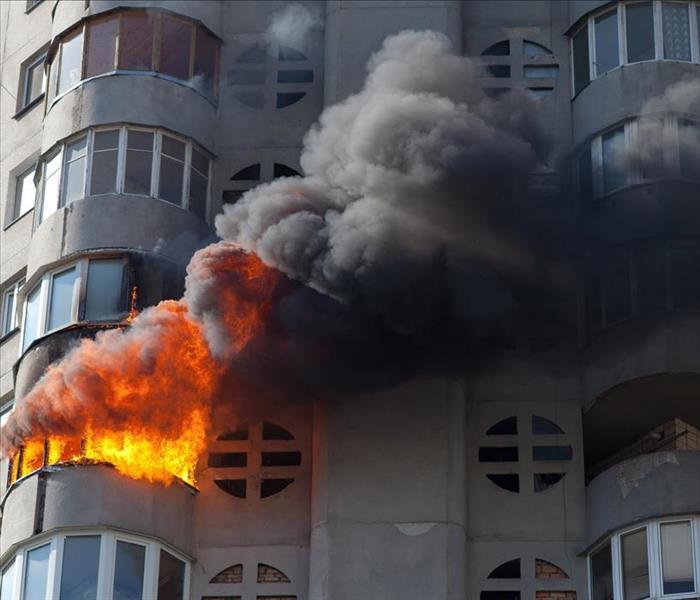 Learn more about Renters Insurance Coverage by following these Tips. If you need more Information, just contact us.
Learn more about Renters Insurance Coverage by following these Tips. If you need more Information, just contact us.
Anyone living in an apartment likely understands the concept of renters insurance. It is a low-cost insurance policy designed to protect the contents of the renter's apartment. Not all apartments complexes or landlords will require renters insurance, but most restoration services in Layton, UT, recommend all renters get coverage.
There is no harm in getting coverage. It is a protection against potential future loss. Renters insurance typically covers several areas, including:
- Personal property damage
- Theft
- Legal liability
The extent of coverage will depend and vary based on your policy. However, keep in mind that renters insurance does not cover the dwelling or structure where you live. The responsibility for the structure lies with the property owner.
Who is responsible for damages with two people holding insurance policies for the same address? Does renters insurance cover fire damage?
Renters Insurance and Fire Restoration
Fire can lead to significant structural and property damage. Depending on the response time and the cause of the fire, it is possible to contain loss to one specific area of the property. Still, after the fire is out and the ash settles, who is responsible for what? What will your insurer cover?
It is easy to become overwhelmed after experiencing a disaster and property loss. Thankfully, your liability is minimal as a tenant, and your insurance coverage is typically straightforward.
What Does Your Insurance Cover?
Your policy will likely cover any personal property damage. However, it will not cover any structural damage. The landlord's policy should cover structure. The primary concern after a fire is finding housing. Thankfully, many policies will cover lodging or hotel stays if your apartment is uninhabitable following the fire. Therefore, most policyholders will not need to fear homelessness.
Assessing Fire Damage
After the fire, the landlord can arrange for a fire restoration service to come out and assess the damage. The service will inspect the building to determine if any structural issues are to be addressed. Additionally, the service can help residents sort through the remnants of their property to find anything that is salvageable.
Fires can often leave few recoverable items, but there are possibilities, especially if the fire was not significant and extinguished rather quickly. You will likely need to take photos and collect evidence of personal property loss.
An insurance adjuster will typically come out to the apartment or home to assess the damage and ensure you are not attempting to file a fraudulent claim. While the claims process can be intimidating, your insurance adjuster can walk you through every step to ensure you have the best chance of a successful claim.
Renters insurance is not about full coverage of the property. The landlord or property owner is responsible for the structure and functionality of the property. Your insurance policy is primarily focused on protecting your personal property.
If you have more questions about renters' policies, you can reach out to an insurance representative. You can also contact your local remediation crew to discuss their influence or assistance in the claims process; many restoration companies act as intermediaries between insurers and clients, especially during the claims process.
Mold Concerns After a Residential Flood
2/22/2022 (Permalink)
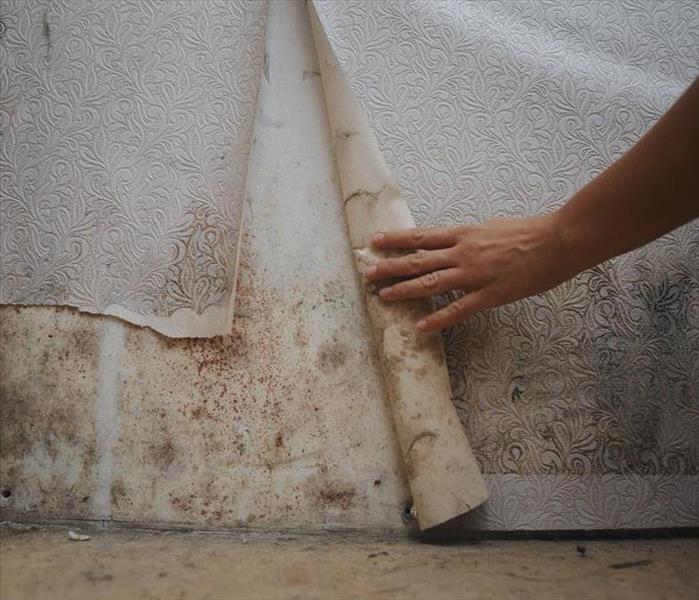 Bear in mind these Important Tips if you experience Mold Growth after a Residential Flood in your Kaysville, UT property.
Bear in mind these Important Tips if you experience Mold Growth after a Residential Flood in your Kaysville, UT property.
On the weather radar, when you see heavy rains approaching Kaysville, UT, you know your home could be susceptible to flooding. Several variables can cause home water intrusions, such as inadequate landscaping, a leaky roof, faulty plumbing, or foundation cracks. Water left to sit stagnant in your home can soon lead to more than simply loss from the water itself.
Secondary damage, such as mold growth, is also a significant concern. Fortunately, if you take care of the moisture problem quickly enough, you can usually avoid a mold problem.
You Can Prevent Mold Growth After a Water Intrusion
Mold can begin growing 24 to 48 hours after the spores contact moisture. Therefore, you must clean the affected area as soon as possible. Here are several steps to ensuring your house is safe from this tiny invader following a flooded floor.
1. Extract the Standing Water From the Floor
First, removing the standing water is critical to preventing mold. Typically, the simplest and quickest way of doing this is using a wet/dry vacuum. They can be rented from hardware and home improvement stores, but keeping one on hand at your home can be a great help.
2. Determine Which Contents Are Salvageable
Mold is a tiny but hardy little lifeform; it can grow on virtually any surface. Therefore, you should remove as many water-soaked materials as possible from the area. This can include flooring, drywall and wood and upholstered furniture. Many of these items will not be salvageable and should be thrown away. Whatever you are keeping must be thoroughly dried before returning to the area. If the humidity of the outdoors is lower than that of the affected area, you can allow the contents to dry in the fresh air.
3. Clean the Affected Area and Salvageable Contents
You must clean everything that comes into contact with the water thoroughly. A flood can bring in debris, bacteria and hazardous chemicals. This will also remove most of the mold spores that are there. Ideally, you can hire water damage restoration experts to bring their expertise and industrial equipment.
4. Sanitize the Affected Area and Salvageable Contents
Next, you must sanitize everything to kill the remaining harmful germs and mold spores. Sanitizing will go one step further in ensuring you avoid mold development.
5. Dry Everything Completely
Finally, the most crucial step is to ensure you dry the area thoroughly as quickly as possible. There are several approaches you can take to dry a room. You can open windows and doors to let the fresh air in. You can also run fans, heaters and dehumidifiers. If you use a dehumidifier, it's critical to remember to empty the water receptacle before it gets full, so it can continue trapping the excess moisture from the air.
Mold growth can be one of the most extreme secondary hazards that a home flood commonly produce. It can develop quickly and spread furiously throughout unaffected areas of a structure. If you discover standing water in your residence, following these five steps can help ensure that you will mitigate the loss. These steps will allow you to confidently restore your home to its pre-flood condition.
Steps To Take After Water Damage
2/17/2022 (Permalink)
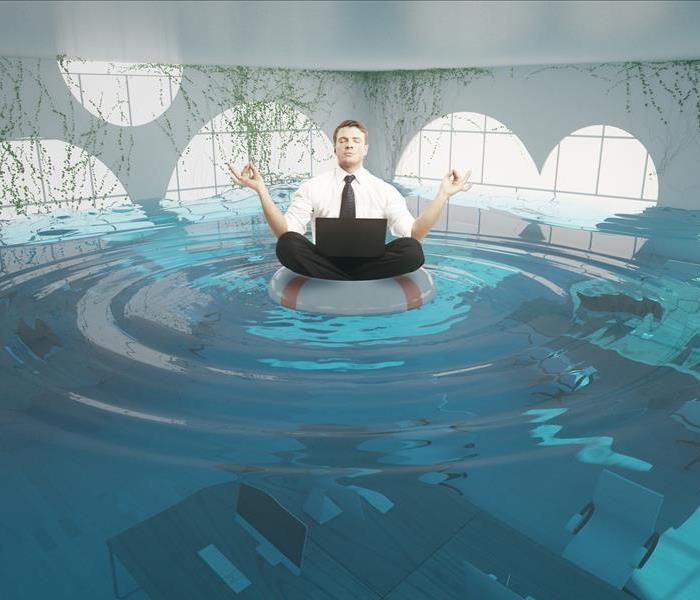 Follow these tips If your Commercial Building has Water Damage.
Follow these tips If your Commercial Building has Water Damage.
Regular inspection of your commercial building in Layton, UT, is essential for identifying maintenance issues before they get out of hand. Whether you have a busted pipe or a hidden leak, any extra moisture can cause a lot of water damage, especially if you don't catch it early. If you find evidence of a leak, there are a few steps you need to take immediately.
Consider these Steps if you experience Water Damage
Report Water Damage to Insurance Provider
The first thing you need to do any time there is a problem with your commercial property is to contact your coverage provider, and damage caused by broken pipes is no exception. Notifying your insurance agent as soon as you know there's a problem has several benefits:
- Start your claims process
- Prompt a visit from an adjuster
- Guard against any negligence concerns
The sooner your insurance company knows about the problem, the faster its response is likely to be when it comes to getting you the support you need to pay for it. Reporting the issue to your provider can also serve as evidence that you are doing everything you can to get your building back in order.
Document All Damage
Upon arrival, your insurance adjuster will complete a walkthrough of the affected areas and make note of the water damage in your building. The adjuster may have several questions for you to help determine the timeline of the loss and how much your policy covers. Finally, he or she is likely to take pictures and videos of the problem areas and make a list of damages.
It's a good idea to collect your own documentation as well. As the first person to see the damage, you are in the unique position of being able to show exactly how it looked from the beginning. If there is standing water, for example, you can take pictures before and after it was extracted. Additionally, the insurance company may ask you to include a list of items that need to be repaired or replaced along with an estimate of what it will cost to do so. Accurate documentation increases the chances that your claim will be accepted.
Contact Restoration Company
Another thing you need to do shortly after you discover damage to your building due to a leak or pipe break is to call water restoration experts. They typically arrive on-site within hours to start the water cleanup process. They will assess the damage to your building, remove water and damaged materials, clean and dry the affected area, and restore the structure to its former state.
It's a good idea to hire a company that handles both mitigation and restoration. One benefit of this decision is that it tends to improve communication throughout the process. Another perk is that all of the details of the process as well as the charges for each item are included in one statement. This gives you one document with all the remediation charges to submit with your insurance claim.
As with any problem, it's important to document issues with your building and loop in the necessary professionals. When your commercial building has water damage, your quick response is the key to minimizing the time and cost of fixing it.
Water Mitigation Procedures for Pipe Burst and Supply Line Failures
2/3/2022 (Permalink)
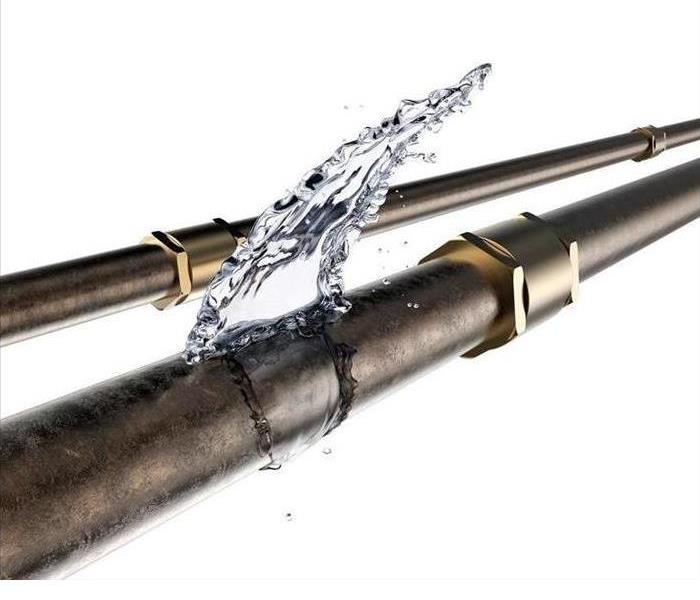 Learn more about Bursting Pipes and avoid Water Damage.
Learn more about Bursting Pipes and avoid Water Damage.
Water damage in commercial facilities is often a concern because of the inventory and cost of business interruption. While a restoration service in Layton, UT, can help with a pipe burst cleanup or supply line leak, the company must understand how long the site will be out of service. The timeline depends on several factors, but the primary consideration is how long each step in the restoration process will take.
- Excavate the water
- Repair the leak
- Dry the interior
- Restore the building
Steps For Water Mitigation
Excavate the Water
A supply line leaking may not take that long to recover from because there is limited and controlled flooding. However, a complete break or burst often floods the premises, requiring a significant amount of pumping and problem-solving.
Repair the Leak
The critical first step of any mitigation process is finding the damage to the supply line, and that search can often come before the pipe burst cleanup. The time it takes to find and repair the leak depends on the extent of the damage. In some instances, the break is obvious, but more often, the leak and water damage stems from several pipes, some of which may be hidden behind walls.
Dry the Interior
With the water shutoff and problems addressed, the restoration service can begin the water cleanup, which involves the drying of the facility. The company will use multiple tools, such as dehumidifiers, fans, and air movers. Drying the interior can take several days, depending on the level of flooding.
Restore the Building
Once the space is dry, the restoration service can move on to repairing the building. When the team finishes the project, all plumbing should be in working order, and it should be challenging to tell the difference when compared to pre-disaster conditions.
A pipe burst cleanup can devastate a business, but problems can resolve quickly when companies prepare for the risks. Ensure that you have an emergency plan and understand the necessary steps for mitigation and restoration should disaster strike.
How Can I Stay Safe in Floodwaters as a First Responder?
1/24/2022 (Permalink)
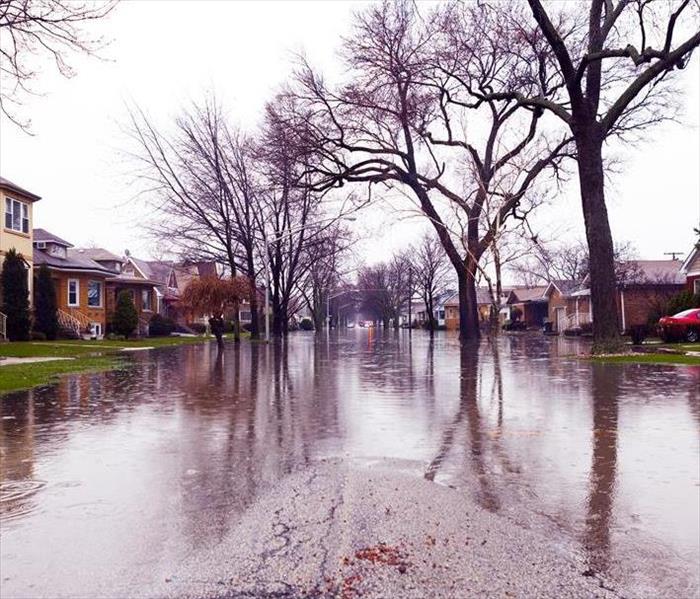 Consider this Important information if you are a First Responder in Layton, UT. If any doubt arises, please contact us.
Consider this Important information if you are a First Responder in Layton, UT. If any doubt arises, please contact us.
As a first responder in Layton, UT, you are responsible for going into situations that most people try to avoid or escape. You are even saving lives at times. You may be more concerned about rendering help to the victims than considering your own safety. However, it's vital to know all of the daily risks of your job. You must understand all of the hazards each disaster situation can present and always be aware of the necessary precautions. Working in the emergency services field can be extremely rewarding. Keep in mind, though, that if you aren't healthy, you can't be at your best while trying to help others. Working a flood response can be one of the most precarious conditions in which to work.
Important information to consider if you are a First Responder
The Dangers of Floodwaters
Navigating deep waters after a major storm often presents multiple risks. There are three classes of water; each type poses progressively increased contamination levels. Black water is the most dangerous, as it is full of pollutants. The water alone sometimes isn't even the most significant threat. Always be aware of the following hazards:
1. The Various Contaminants in the Water
A flood from heavy rains can contain various types of bacteria, potentially harmful chemicals, and other contaminants that can make you sick if you contact them without the proper protection. Even if the water looks relatively clean, it can be incredibly hazardous. Therefore, it's vital to protect yourself by wearing personal protective equipment, such as that worn by storm damage restoration professionals, the entire time you're in contact with the water or anything that has touched the water. This PPE will typically include safety glasses and a respirator, along with waterproof gloves, coveralls and rubber boots. Avoid touching your face until you sanitize your hands. Also, avoid allowing open wounds to come into contact with the water.
2. The Risk of Contracting Diseases
Even if your job as a first responder doesn't require you to have certain immunizations, it's essential to keep up with vaccines. Hepatitis B and tetanus are real threats for anyone making contact with contaminated water. Ensuring that you're fully vaccinated can give you peace of mind knowing you have an added layer of protection in a hazardous environment.
3. The Strength of Floodwaters
Many people don't realize the strength of floodwaters until it's too late to avoid them. Even mere inches of water can carry away a car, so it doesn't take much to knock you off your feet. Even waters that appear to be still can have an undertow that can sweep you away. Always be extremely cautious before you approach standing water, whether on foot or in a vehicle.
You have an incredible amount of responsibility and stress when working as a first responder. It's easy to get caught up with helping victims during emergencies such as floods. People depend on you at their most vulnerable times. Nevertheless, you must always be cautious concerning your own safety so you can continue to perform at your best. Continually stay mindful of ways to keep yourself as safe as possible while you're on the job.
Category Two Water Damage and Your Business
1/14/2022 (Permalink)
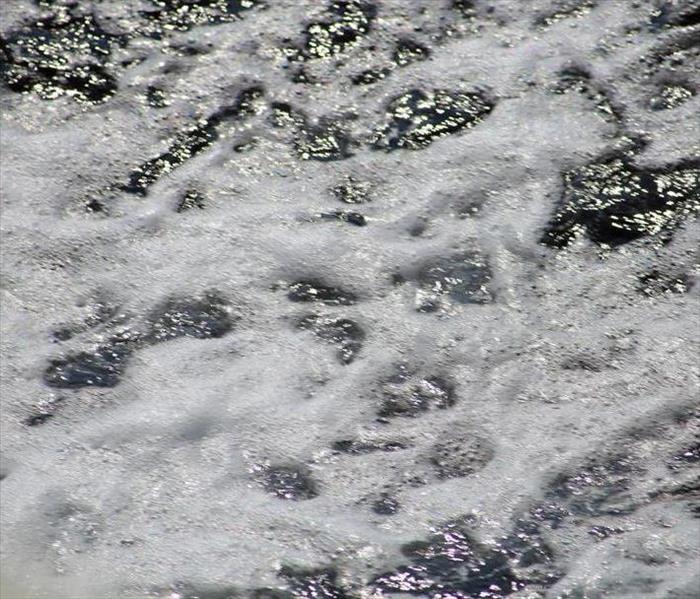 Consider these tips if your business in Kaysville, UT experiences Water Damage,
Consider these tips if your business in Kaysville, UT experiences Water Damage,
Businesses typically experience high volume water usage because of the number of patrons and employees using the facilities daily. The extensive usage can lead to a shortage in the lifespan of pipes throughout the complex. In turn, commercial buildings can experience breaks, and water pipe repair needs more frequently than residential properties.
Important tips to consider if you experience Water Damage
If your business experiences water damage, it can occur at various contamination levels, typically requiring professional intervention from a restoration service in Kaysville, UT to avoid extensive problems, such as:
- Flooding
- Inventory loss
- Business interruption
A water restoration and mitigation service will quickly identify the water category and mitigate further losses. However, the first move is to contact the professional rather than attempt a DIY solution.
Water Pipe Repair and Safety
A broken pipe does not imply a catastrophe. Pipe breaks occur at various levels of severity, including a minor split in a supply line to a sink or a total collapse of a drainage system.
Your response needs to match the urgency of the situation. A minor break from a clean water source is not as urgent as a break within a wastewater line, but both require a level of immediacy.
Unless you are a licensed plumber or disaster response specialist, it is vital to leave category identification to the experts. Attempting to enter a flooded area without first understanding the risks is reckless.
Water Categories and Risks
There are three categories of water loss: clean, gray, and black.
Clean water loss or damage is a flood caused by a break in a clean water source, such as a supply line to a sink.
Gray water or category two water stems from clean water exposed to other substances. For instance, if clean water soaks through the ceiling of an upper floor to flood the lower level, it exposes the lower level to category two damage. Gray water is not safe and can lead to illness.
Black water is the most contaminated version of floodwater. It typically comes from a waste source or an external source. Black water is filled with bacteria and other contaminants. It can be toxic, and it should only be cleaned by professionals.
Category 2 Cleanup
Because category two water can also present health risks, hiring a professional to clean your facility is best. The cleanup process is the same as it is for any water cleanup:
- Remove excess water
- Dry affected areas
- Clean facilities
- Restore to pre-disaster condition
The water restoration process can take anywhere from two to five days or more, depending on the severity of the damage. A minor, clean water flood will typically take significantly less time to remediate than a gray or black water flood.
For more specifics on the timeline, talk to a restoration professional. They can assess your property and provide more insight.
A water pipe repair can be the least of your concerns if portions of your facility flood. While the repair is essential, the damage and the loss category can determine the expense and timeline for recovery.
When facing a flood or pipe break, contact a restoration service. It is best to avoid DIY solutions, primarily when your business depends on a timely recovery.
Prepare Your Business for Flood Safety: Before, During, and After the Flood
12/9/2021 (Permalink)
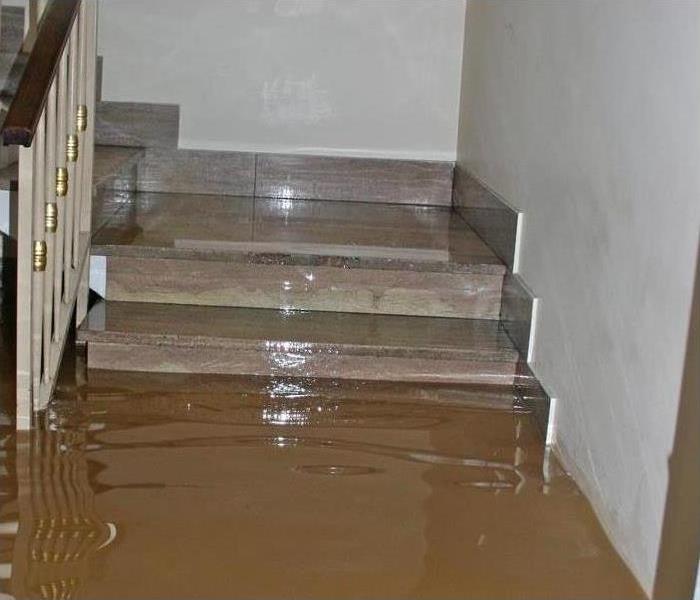 Commercial flood damage in Kaysville, UT
Commercial flood damage in Kaysville, UT
Floods can be caused by many situations, such as overflowing rivers, ocean storms, heavy rain, and quickly melting snow. Broken dams and levees can also lead to rising water. In fact, flooding is the most common form of natural-weather disaster, whether it involves a couple of inches or a flash flood that covers all of the vehicles in your parking lot.
How to Protect Your Business From Floods
There are several things you can do to protect your business from floods and flood damage, before, during, and after the disaster.
1. Take Action Before Floods Hit
One of the most important things you can do before your business is affected by flooding is to save your crucial data. This means setting a regular schedule for backing up your information and maintaining cloud storage. With your business plan, banking information, contracts, and other high-priority documents safely stored on the cloud, you won't have to panic when black water fills your records room.
Other steps to take before the water rises include establishing a business continuity plan, setting up emergency kits and evacuation routes, and establishing an emergency response protocol. You may also want to establish a professional relationship with an emergency mitigation company for a faster response when disasters happen.
2. Maintain Safety During Rising Water
During flooding, follow the directions of Kaysville, UT, authorities, put your emergency plan into action and focus on keeping your personnel safe. Be aware of dangers such as electricity when the water rises above the levels of outlets, the increased risk of falling because of slick surfaces, and contamination when black water enters the building.
3. Recover From Flood Damage
Even as the water begins to recede, stay away from affected areas. The water on your property and in your buildings may carry raw sewage, chemicals, and other dangerous substances. Moving water could make you lose your balance. Contact Kaysville, UT, emergency restoration workers to learn the most appropriate steps to take.
My Basement Is Underwater! What Now?
11/24/2021 (Permalink)
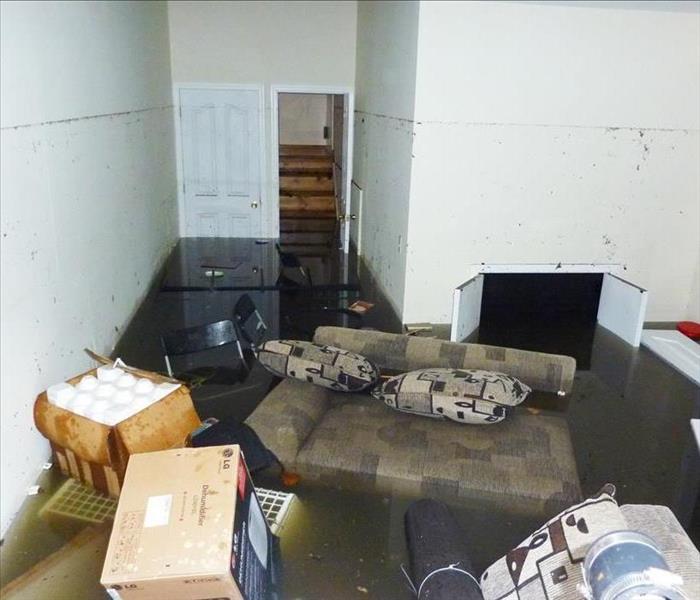 Understanding your homeowners insurance will help you to take preventive steps to protect your Kaysville, UT home.
Understanding your homeowners insurance will help you to take preventive steps to protect your Kaysville, UT home.
If you discover your Kaysville, UT, basement underwater, do you know if it would be covered under your homeowners insurance? Insurance coverage is often very ambiguous about the type of flooding it will cover and won't. Just because you have a basement flood doesn't mean your insurance will cover it. It pays to know beforehand what will be covered under your homeowners insurance and what you may need additional insurance for.
Will My Homeowners Insurance Cover the Damage?
Each situation is different, so there are no guarantees that all of the damage will be covered by your insurance. There are common situations that are generally included in homeowners insurance coverage.
Flood damage from pipes that freeze and then burst is typically covered by home insurance policies as long as you were living in the home at the time of the burst. These include pipes from the home's plumbing system and those of appliances, sprinkler systems, and air conditioning units. If you were not living there and had the heat or water systems turned off (e.g., if you went away for winter vacation), the insurance policy probably would not cover the damage.
- Overflowing Water Receptacle
People often don't realize that damage from an overflowing water receptacle is usually covered by a homeowners insurance policy. This includes flood damage from bathtubs, sinks, toilets, and pools.
Standard homeowners insurance will typically cover damage to a flooded area due to a faulty appliance. This could include a washing machine, refrigerator, or any other appliance that leaks a lot of water onto the floor. However, if the company can prove that the appliance malfunction was due to a lack of proper maintenance, they could deny the claim. The insurance policy will cover the damage caused by the water but will not cover the cost of a new appliance.
Insurance companies will typically cover a leaking water heater like most other leaking appliances. If it's purely a water heater malfunction that caused the water, the damage should be covered. If you hadn't been maintaining the water heater correctly and caused it to malfunction and leak, it probably won't be covered.
Unfortunately, there are three common basement flood situations that a standard homeowners insurance policy wouldn't typically cover.
1. Flooding Caused By Nature
Flooding caused by an act of nature would not be covered under homeowners insurance. This would only be covered under a flood insurance policy, but these policies are usually limited.
2. Underground Water Seeping
After heavy rainfall, water can seep into your basement through the saturated ground. The seepage must be directly related to a flood to be covered.
3. Sewer Backup
Most home insurance coverage will only cover what is typically a minimal amount of a sewer backup. Insurance will usually only cover about $10,000 worth of damage, but this type of damage can cost well over that amount for flood damage restoration experts and other professionals to repair.
When a disaster causes a basement flood, the cleaning and restoration process needs to begin immediately. The floodwater can cause even more damage as it lingers.
What Causes a Basement Flood?
11/15/2021 (Permalink)
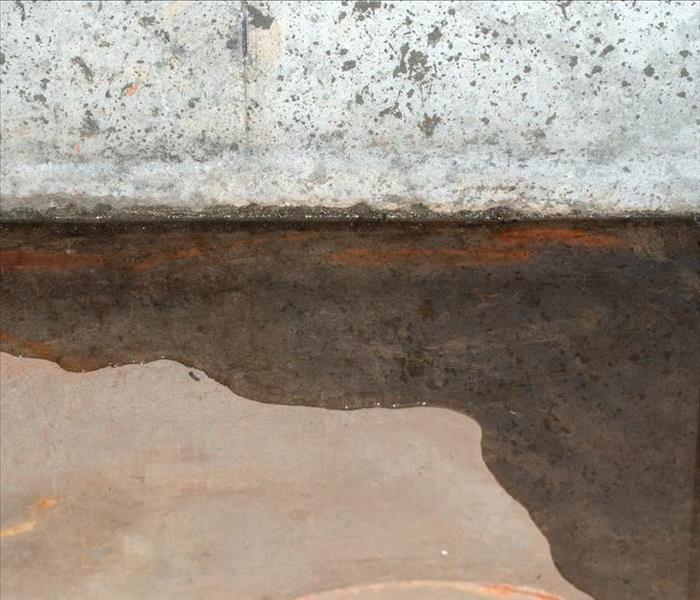 Detecting the cause of your basement flood is the most effective way to protect your Kaysville, UT property.
Detecting the cause of your basement flood is the most effective way to protect your Kaysville, UT property.
One of the worst nightmares for a homeowner is a basement flood, resulting in inquiries about flood prevention to water mitigation specialists in Kaysville, UT. Unfortunately, before you can look into preventatives, you need to understand the most common causes of flooding in your basement, including:
- Location
- Drainage installation
- Sealant processes
- Eaves and gutter maintenance
This is not an exhaustive list, but it is good enough for a start. Only after understanding each of these issues can you begin to understand the preventative steps you need to take to protect your property.
5 Primary Reasons a Basement Flood
When considering water damage and flooded basements, it is easy to wonder why your house is prone to such issues. A house that routinely floods likely has one or more characteristics in common with similar homes. Primarily, there are five common causes of routine basement flooding.
1. Location
A basement that floods often is typically the result of an unsuitable location. Most construction specialists recommend building properties on sloped sites to prevent flooding, allowing water to flow away from the home’s foundation. Unfortunately, if your home is built on a low-lying site, it will likely be prone to floods.
To avoid perpetual flooding, you will need to install an effective drainage system. Always hire a licensed plumber for such installations.
2. Improper Drainage System Installation
Drainage systems, like sewers and downspouts, require proper installation to be most effective. When homeowners choose DIY methods, equipment is typically incorrectly or inadequately installed, often resulting in the problems such installations are meant to prevent. Therefore, always work with a professional.
3. Poor Wall and Flooring Sealant
Every home with a basement goes through a process to seal it against groundwater and rains. Unfortunately, not all sealing methods are as effective as others, resulting in routine flooding. If you find that your basement is often flooded after significant rains, consider having the sealing inspected. A professional plumber can help you identify any issues and can provide potential solutions.
4. Clogged Eaves
One thing many homeowners do not consider is that clogged eaves can lead to flooding in the basement. When the eaves are blocked, the rainwater can not make its way to downspouts, and it ends up pouring over the side of the troughs, running down the sides of the house and along the foundation. If enough water collects near the foundation, you can experience flooding.
5. Blocked Gutters
As with eaves, blocked gutters can also lead to flooding in your basement. If blocked downspouts do not allow water to flow freely, the water backs up, seeping out of connection joints and pouring onto the ground near the foundation. When enough water collects, or after enough time passes, the water will make its way inside.
No homeowner wants to deal with a basement flood. It is a costly problem, and it can result in the loss of property and items with sentimental value. While the above causes are not an extensive list of flooding issues, they are the most common and provide homeowners with insight into potential solutions.
Content Cleaning After Flooding: What You Need To Know
10/18/2021 (Permalink)
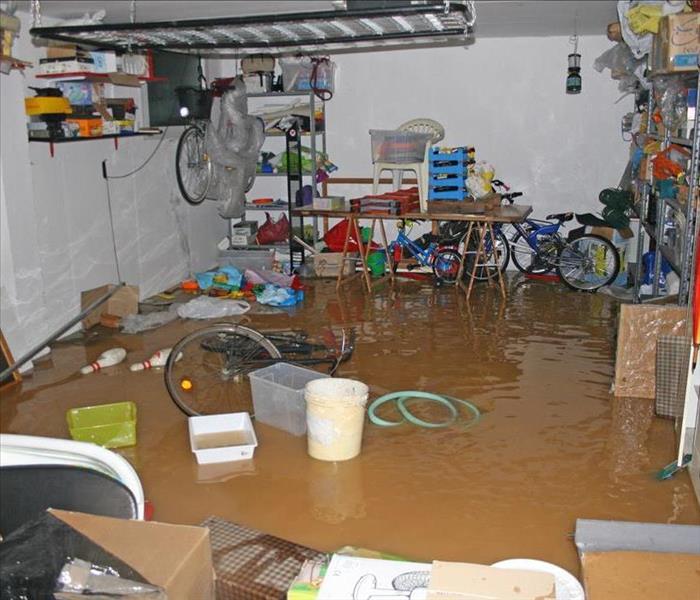 Clean up properly after a storm and flood to avoid severe damage in your Layton, UT, home.
Clean up properly after a storm and flood to avoid severe damage in your Layton, UT, home.
When your Layton, UT, home has been devastated by flooding, one of the most pressing issues you'll face is how to handle content cleaning. In those first few moments, your attention may naturally be drawn to structural damage, such as weakened flooring and soggy drywall. You may also consider the risk associated with secondary damages:
- Mold growth
- Frayed and exposed wiring
- Lingering odors
However, the longer it takes for you to think about waterlogged sofas and moist linens, the easier it will be for damage to set in and the more expensive it will be to replace those items.
Content Cleaning Steps You Should Take
One of the first things you need to do is understand the categories of contaminated water. Professional water damage cleanup technicians will assess the damage in your home and alert you to the scope of water contamination:
Category 1: Clean water comes directly from the faucet or a clean water supply line. Once water leaves the faucet or broken pipe, it is exposed to contaminants and degrade to category 2 or 3.
Category 2: Gray water carries some contamination, such as urine or detergents. When this water damage isn't addressed, the situation could deteriorate to category 3.
Category 3: Black water is contaminated with harsh chemicals, feces, heavy metals, and other pollutants. You should not come into contact with black water or any belongings exposed to it.
Unfortunately, if your flood originated from a heavy storm, overflowing river, or backed-up sewer, you're probably dealing with a category 3 situation.
Sort Belongings for Keeping, Cleaning, and Discarding
The next step is organizing the contents of your home into items that don't require cleaning, those that can be cleaned and repaired, and those that should be thrown away. Work closely with water damage cleanup and restoration professionals to understand the differences in these categories. For example, if clothing and window treatments remained dry in an unaffected part of the home, they probably don't require cleaning, disinfection, and deodorization. If those same belongings were in the same area as the flooding, they may have absorbed some of the moisture and contaminants. A good rule of thumb is that porous materials should be discarded, and non-porous items can be cleaned and saved.
Do-It-Yourself or Hire a Professional
In the aftermath of a flood, you are justifiably concerned about keeping your costs down, so when it comes to content cleaning, you may be tempted to handle a lot of it yourself. Some of the cleaning you can do, such as running uncontaminated linens through the washing machine. However, expensive window treatments, rugs, and contaminated textiles should be handled by professionals. There are several other belongings that should be treated by experts:
- Water-damaged computers, electronics, and appliances
- Important books, pictures, and paperwork
- Dry-clean only goods
- Family heirlooms and valuable belongings
Unfortunately, the DIY approach often leads to further damage and more expensive repairs. Don't put your belongings at further risk in an already stressful situation.
Water contamination is a serious risk after a home flood. Your home and family will be better off when you know how to safely handle content cleaning. Reach out to professionals when you have questions and concerns.
Is My Home Susceptible to a Lightning Fire?
10/13/2021 (Permalink)
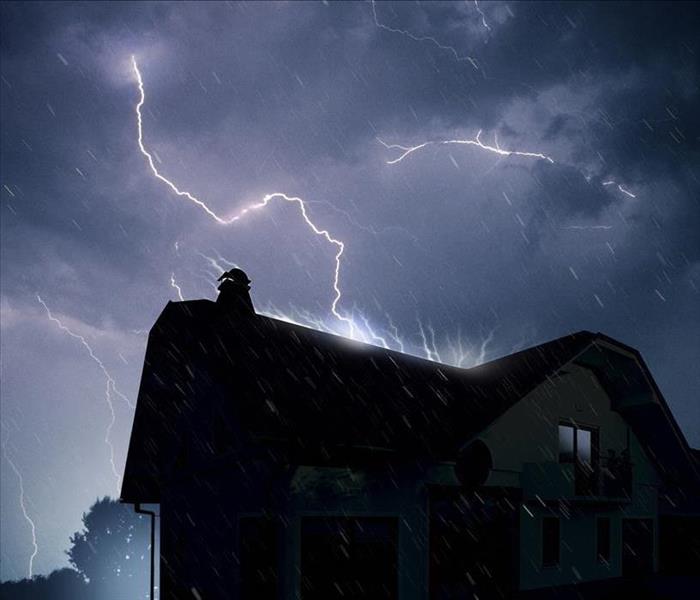 Take some prevention steps to be safe during a storm in your Kaysville, UT home.
Take some prevention steps to be safe during a storm in your Kaysville, UT home.
Although not a high likelihood, virtually all homes are susceptible to being struck by lightning. When it hits, it will take the path of least resistance and could take several different routes through your Kaysville, UT, house. Many parts of a home are conductive, meaning a strike can send a bolt of electricity through electrical lines, phone lines, water pipes, gas pipes, metal framing, gutters, and downspouts, potentially causing a lightning fire. Surprisingly, it can also branch out into more than one path. It has even been known to jump from one course to another through the air (e.g., from a sink to an electrical outlet). This phenomenon is called a side flash. Fortunately, you can take measures to stay safe during a storm and avoid a house fire.
How Can I Keep My Family Safe From Lightning at Home?
You can get a protection system for your home to guard you against a potential strike. However, these systems must be professionally installed, and they are typically very expensive. Usually, it's more cost-effective to be mindful of harmful practices, be aware of safety steps, and ensure that your homeowners insurance covers electrical storms.
1. Avoid Direct Contact With the Ground or Concrete
Many people don't realize that walking in a basement or garage without shoes can be a hazard. An electric current can travel through the soil and be attracted to even slightly damp concrete. Also, avoid walking without shoes on a patio or the ground outside.
2. Avoid Corded Telephones
One of the riskiest activities during a storm is using a corded telephone. Lightning can come through the phone line, striking whoever is talking on it. If you must make or take a call, be sure to use a cordless phone or a cellphone.
3. Avoid Having Direct Contact With Any Wired Electronics
A home's electrical system is a prime target during a storm and can even lead to a lightning fire. Fire damage remediation experts will advise you that you should avoid direct contact with all wired electronics and appliances during a storm. Some of these devices include a computer that's connected to a power outlet directly or via a modem or router that is plugged in, refrigerator, hairdryer, or plugged-in power tool (e.g., an electric drill). You can safely use wireless devices that are not plugged into an electrical outlet, such as cordless phones, cell phones, laptops, tablets, and remote controls.
4. Stay Away from Metal Framed Windows and Doors
Windows and doors with metal frames can conduct electricity, so you should avoid being close to them. Many people find it tempting to stand by the window to watch the storm, but it could also be dangerous.
5. Avoid Using Plumbing
Plumbing is an excellent electrical pathway, so direct contact with it should be avoided during a storm. Taking a shower or bath, doing dishes and even washing your hands could potentially be dangerous.
Your home should be relatively safe from a lightning fire. However, it's better to practice safety all the time. These steps are excellent ways to get started.
Avoiding the Potential Small Business Claim in Your Pipes
10/5/2021 (Permalink)
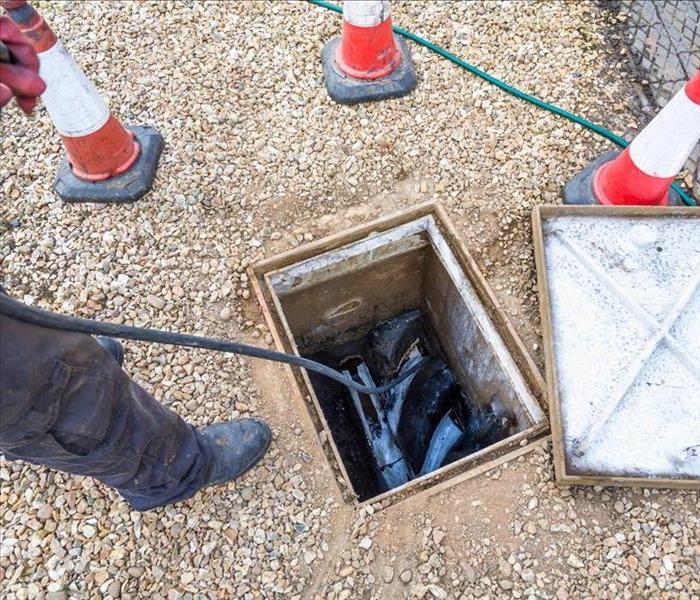 Routine cleaning will avoid plumbing disasters in your Layton, UT business.
Routine cleaning will avoid plumbing disasters in your Layton, UT business.
Running a business is expensive, which is why most strategies involve cost-cutting and efficiency. One of the most significant expenses for commercial buildings is water damage. Unfortunately, it is relatively common and can lead to lengthy business claim processes. To reduce your overall risks, talk to a water mitigation professional in Layton, UT, about plumbing maintenance.
4 Maintenance Musts To Avoid a Small Business Claim
Whether you fear a pipe break or sewage backup, knowing proper maintenance protocols is essential to limiting your risks of plumbing disasters. People are often amazed at how much routine cleaning and inspections can reduce overall disaster risks, but staying on top of issues when they are minor means avoiding the expense of significant problems later. There are at least four steps you can take to limit the potential issues, especially severe ones.
1. Fix Recurring Problems
Commercial facilities are always busy, meaning that minor problems and repairs can go unnoticed or be viewed as nuisance issues that do not require immediate attention. However, recurring problems often become significant issues if left to fester.
While a bathroom sink might become clogged frequently and is seemingly restored with a plunger or auger, there might be more going on deeper in the drain if it is a persistent problem. Anytime a plumbing issue comes up again and again, it is crucial to address and fix the underlying problem.
2. Block Debris From Drains
In commercial kitchens, it is common for food waste and other materials to find a way into the drains — the same can be said for floor drains. If you want to reduce your risks of clogs and future plumbing problems, find a way to block large debris from entering the system.
Many drain covers and nets can help eliminate the risk of things entering the system unintentionally. However, it is also beneficial to put up caution and warning signs to deter complacency. You might also need to put up signs in bathrooms or toilet stalls addressing what is not appropriate or flushable.
3. Adhere To a Maintenance Schedule
All commercial drains require upkeep. Any drain left alone for years, or longer will develop clogs and problems. Your maintenance staff should focus on cleaning drains around the property at least once per year.
When cleaning drains, it is important to avoid harsh chemicals. Chemical cleaners can do more harm than good. It is better to use an auger or drain snake to ensure no obstructions in the line. For more thorough cleanings, you can contact a professional.
4. Schedule Professional Cleanings
Annual inspections of your plumbing systems are routine, but bi-annual scheduling inspections are even better. A professional review in the fall and early spring is necessary to ensure no climate-related damage to the system. In most instances, the professional you hire will use a scope to inspect all plumbing lines, informing you of any issues they come across.
A business claim is often necessary to restoring damage after a plumbing disaster. However, it is better to focus on prevention and maintenance to reduce the risks of a large-scale disaster.
How SERVPRO Helps Insurance Adjusters and Agents
9/21/2021 (Permalink)
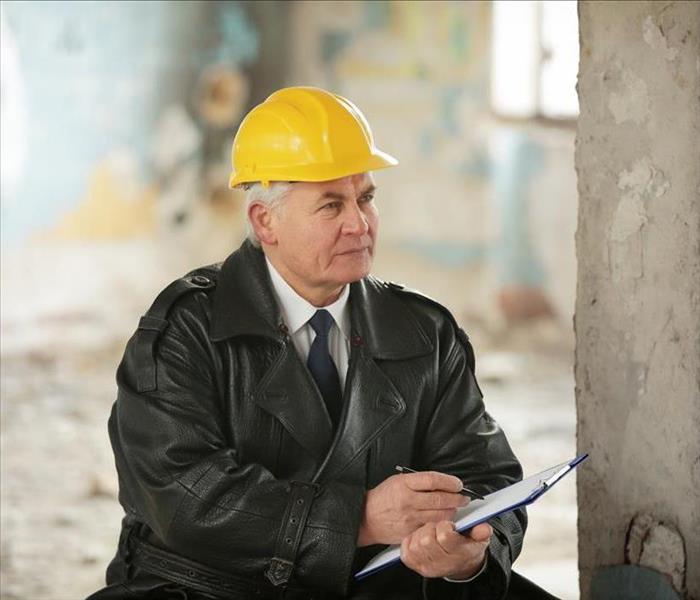 SERVPRO professionals are a certificate team to make the job of insurance adjusters and agents easier.
SERVPRO professionals are a certificate team to make the job of insurance adjusters and agents easier.
Your job as an insurance adjuster or agent requires that you offer your customers great services while also keeping the claims costs within reasonable bounds. SERVPRO franchise professionals understand your priorities and have a thorough understanding of the inspection, cleaning, and restoration industry. This means that these professionals are uniquely qualified to make your job easier.
Competitive Advantages for Insurance Adjusters and Agents
You'll quickly recognize the advantages available to you when you work with franchise professionals in your part of Layton, UT. For example, franchise owners and cleaning and restoration experts work closely with each customer, offering reassurance, top-quality services, and consistent reports for all parties. The more that SERVPRO professionals deal with cleanup, restoration, and mitigation paperwork, the more you can focus on other priorities. There are many services you can expect from franchise professionals:
Compliance With Industry Standards
Becoming a vendor qualified to work closely with insurance providers and to maintain a reputation for quality work and professionalism requires adherence to important standards. Franchise professionals work to comply with all IICRC and ANSI standards. This results in:
- Timely handling of claims
- Commitment to best practices
- Regular compliance verification
- Vehicle and crew standards
- Compliance with insurance requirements
- Accurate documentation
- Organized information exchanges
You can also expect emergency services to be complete within 24 hours, mitigation to be a top priority, and electronic files to be shared within hours of requests.
Elite Professional Training
One of the most effective ways to be sure customers receive top-quality service is through excellent training. Franchise professionals, from owners to technicians, receive training approved by and in line with the Institute of Inspection Cleaning and Restoration Certification for fire and water cleanup, restoration and remediation, and all other appropriate areas within the field. Continuing education is available to all franchise professionals as well as insurance clients.
Electronic Claims Information and Inventory
Perhaps one of the most time-consuming parts of your job is tracking down the pertinent information necessary to complete your claims. To help you with this part of your work, franchise professionals submit information electronically. This way you can quickly receive reports, documents, and even pictures, usually within hours. Some of the information provided through the claims inventory database includes:
- First Notice of Loss
- Thorough Estimates of Damage
- Digital Photos of Affected Areas
- Job Cost Data
- Geographic Cost Comparisons
These files can be accessed online wherever you happen to be and can also be delivered as hard copies.
Immediate Emergency Response and Pretesting
It is well-known throughout the inspection, cleaning, and restoration industry that a rapid response limits damage, especially when it comes to secondary damage. Services such as tarping and boarding up to prevent exposure to rain and trespassers are a good way to minimize the need to replace property. Pretesting is another service that keeps replacement costs low.
Hard work and consistent results have established franchise professionals as some of the best in the industry. Whether you're an agent or an insurance adjuster, a cooperative relationship with SERVPRO franchise professionals is a great way to improve your completion of each insurance claim. Enlist highly qualified cleaning and restoration industry leaders in your quest to provide excellent service.
How Long Does Mold Removal Take? 3 Important Factors That Affect Time
9/7/2021 (Permalink)
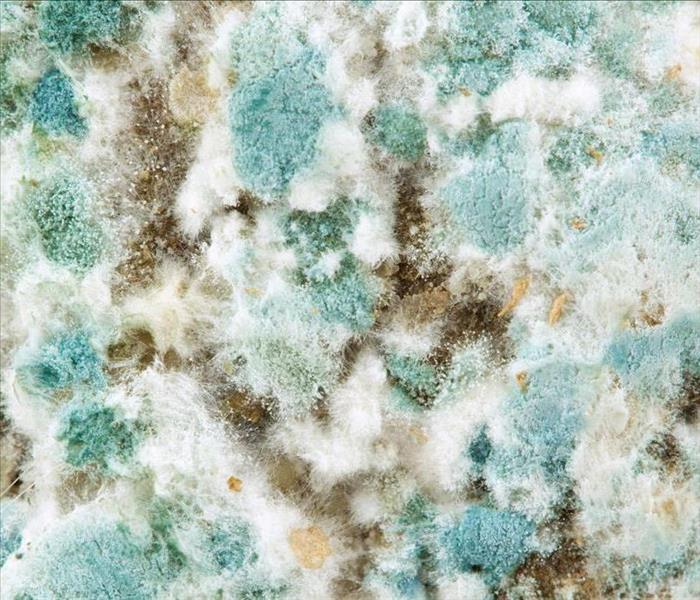 If you see signs of mold in your Layton, UT building, hire a professional to stop the damage.
If you see signs of mold in your Layton, UT building, hire a professional to stop the damage.
While every business owner hopes that mold removal will only take a day or two, the timeline varies. There are several factors that can influence the timeline, including:
- Type of mold
- Severity of the problem
- Underlying cause of the damage
A mold remediation specialist in Layton, UT, can help you determine a timeline. In most instances, however, the duration of the cleanup will be three to seven days.
Understanding the Extent of the Problem
Before you can properly address a mold problem, you need to determine the extent of it. Mold needs time to establish itself. The cleanup time depends on how long the mold has been growing and how long it took for the mold to become visible.
The proper way to address the issue is to recognize the nature of the problem and take the appropriate action. Although many business owners have been able to remove the moldy material from their buildings, exposure to airborne mold spores still exists.
When dealing with mold growth, especially when you do not know the variety, black mold, or some other variant, it is best to work with a professional. In some industries, commercial insurance might even require professional mold removal.
What Can Influence the Removal Timeline?
The age of the building. The older the building, the longer it will take to clear the mold. Older structures have many little holes and plumbing issues that allow mold to enter. Additionally, the material used to build the building can have an impact on the frequency of wet-dry cycles and other environmental conditions. You will also need to know whether the materials used in the construction of the property have a known lifespan.
Additionally, know the cause of the growth. A leak from a roof or other water-intrusion source can create the perfect conditions for mold growth. While you can search for causes on your own, seeking professional assistance is likely best.
How Long Does Removal Take in the Worst Case Scenario?
There are occasions when mold restoration may take much longer than you’d like. First, you need to consider the source of the mold problem. In many cases, you’ll need to hire a mold remediation contractor to determine the source of the mold. Secondly, the extent of the damage to the building’s structure and/or interior will also affect the timeline of the cleanup. After determining the cause of the mold problem, the remediation specialist will determine the best way to address the problem. You may need to hire a team of specialists in your area to remove the mold from the building and clean the building’s interior.
Mold remediation is something that most business owners take seriously. It can be a daunting task, the important thing to remember is that it is preventable. A number of measures, such as using dehumidifiers, sealing cracks, and keeping your property clean can help keep mold at bay. It’s also a good idea to seek the assistance of a mold remediation specialist in Layton, UT.
Mold removal professionals have the knowledge and skills necessary to tackle the challenges of a cleanup. They are also your best hope for getting back to business quickly.
How To Clean Household Contents Post-Fire
8/18/2021 (Permalink)
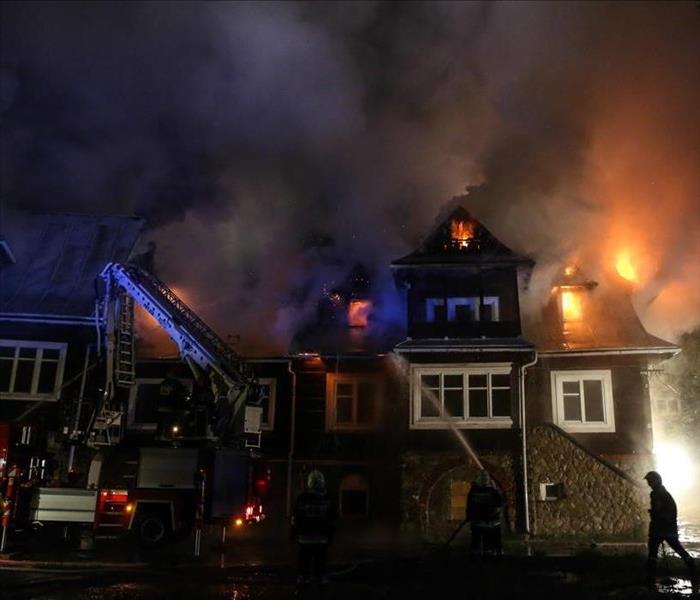 Some items can be salvaged after a fire in your Layton, UT, home.
Some items can be salvaged after a fire in your Layton, UT, home.
When your Layton, UT, home sustains a fire, it's not only the structure of the house itself that is affected, and not only the direct burning from the fire that causes damage. In addition to the fire consuming many, if not most, materials, soot residue, and smoke can affect what the fire didn't directly impact. How do you know what to do about the contents of your home after a fire? Can anything be salvaged? Fortunately, even though the situation probably seems hopeless, all hope is not lost. Some items are salvageable, thanks to content restoration methods like dry-cleaning and odor removal. Here are some everyday household items and how to best manage them after a fire to keep everyone safe and salvage as much as possible in the process.
1. Non-Perishable Food
You may believe that sealed, non-perishable food is still safe after a fire, but it could be very toxic. Open containers must be discarded. Even food in unopened aluminum cans can be susceptible to toxic fumes. Inspect every item in your kitchen for heat damage, smoke, firefighting chemical damage, and water. If you are unsure something has come in contact with any of these contaminants, you must throw it out.
2. Perishable Food
If smoke and soot have penetrated the refrigerator's seals, everything in the refrigerator must be discarded. Additionally, in many instances, a house will lose electricity during a fire, which means the refrigerator will be without power for some amount of time. In this case, it's critical to throw away all the food in the refrigerator and any defrosted food from the freezer.
3. Burned Clothing and Textiles
Burned or charred clothing and other textiles are not salvageable. Some of these materials that have only been exposed to heat, smoke, and soot can be saved using proper cleaning and disinfection methods. Fire restoration professionals are your best bet for keeping as much as possible and returning it as much as possible to its original condition. Remediation experts have dry-cleaning and other specialized equipment to thoroughly clean, sanitize and remove odors. Content storage is also an often necessary service they provide.
4. Appliances and Electronics
Smoke can seriously damage electronic components, so some or all of your appliances and electronics are likely to be unsalvageable. Smoke particles act as conductors which disrupt the electrical pathways, causing the unit to short-circuit. Due to their chemical makeup, smoke and soot are extremely challenging to remove, especially from porous materials. In addition, the effects can be cumulative, only progressing as the smoke and soot are left to linger.
5. Medicine and Cosmetics
Any medications and cosmetics that have been exposed to heat, smoke, soot, or fire extinguishing material must be discarded. It's dangerous to use these products after heat exposure because heat can alter the chemical composition of the products. If these chemicals are ingested or absorbed by a person or animal's skin, they could be toxic.
Fire can cause several different types of damage to a home's contents. Unfortunately, most items are not going to be salvageable. However, dry-cleaning and other professional content cleaning methods can be effective and are worth trying, especially for those irreplaceable and sentimental pieces.
Tips for Protecting Your Home From Floodwater
8/18/2021 (Permalink)
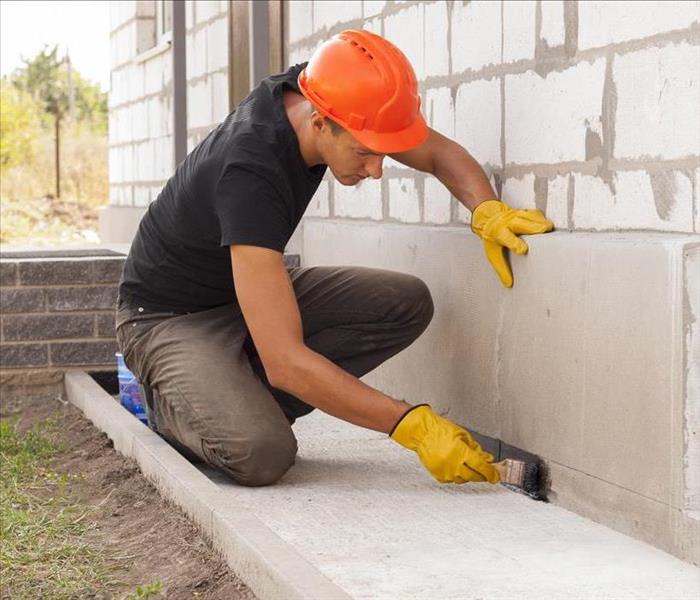 Flooded homes in Kaysville, UT, are common but exist several ways to protect your house from water damage.
Flooded homes in Kaysville, UT, are common but exist several ways to protect your house from water damage.
Flooding is a common result of extreme weather and causes some of the most common property damage reported to insurance companies. If your Kaysville, UT, home has been exposed to flooding in the past or if you're concerned about the potential for future water damage, it's important to consider flood safety and any steps you can take to keep your home and family above water.
Focus on Staying Above the Water Level
The best way to protect against water damage is to keep your home and belongings higher than the water. Although this isn't always possible, you can learn where the flood level is for your home. With this information, you can focus on the part of your home that is most likely to be damaged. This information may be available through your home insurance provider or the local building department. There are a few steps you can consider at this point:
- Install raised structures, such as concrete blocks, for air conditioning units and other outdoor equipment. Make sure these structures are anchored securely, so floodwater doesn't carry them away.
- Floodproof your home by applying protective sealants and coatings to the walls that will prevent water from seeking into the foundation.
- Add foundation vents to your home to direct water through a path that you determine. This keeps water away from the rest of your house and limits the amount of damage.
- Hire professionals to lift your home on columns or piers, so the lowest level of your home is higher than the flood level.
Direct Water Away From Your Home
Naturally, you'll want to be sure that the grade of the land slopes away from your home. The next time it rains, watch where water pools and flows and then make necessary adjustments. There are several changes you can make to your landscape to floodproof your home and property:
- Install gutters around the roof of your home and keep them clear.
- Create a splash block or drainage area under the downspout to direct water away from the foundation.
- Choose native plants that support the soil in Kaysville, UT.
- Add a drainage system, such as a rain garden, swale, rain barrels, sump pump, or French drain.
If you see a lot of standing water in the street after a rainstorm, contact your county planning department for further suggestions to increase flood safety around your home.
Install Backflow Valves
Flooded sewer systems are an unpleasant result of natural flooding. You can prevent sewage from backing up into your home by installing backflow valves on all pipes that enter your home. Make sure that these are operational with regular inspections.
Keep Yourself and Your Family Safe
When flooding does occur, your top priority should be your well-being and that of your loved ones. This means following flood safety tips, such as not driving into pools of water, staying out of floodwater, turning off the electricity to your home, and contacting water damage cleanup and repair professionals.
The best time to tackle flood safety is before the clouds come out. Review these tips and reach out to your insurance provider or local environmental professionals for more advice.
Understanding Mold as Secondary Damage
8/10/2021 (Permalink)
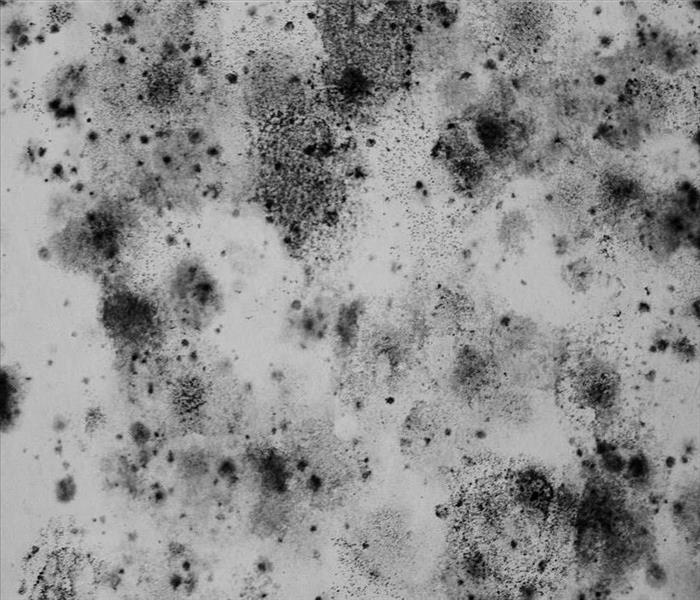 Black mold comes after water damage.
Black mold comes after water damage.
Despite the assumption that mold is a primary concern, black mold is secondary damage. Granted, mold is alarming, and it needs to be addressed quickly; however, without addressing the real underlying issues, a business will continue to see a resurgence in mold growth.
When it comes to mold, the primary concern is water damage, which does not need to be significant. Simple issues can lead to mold growth in a commercial facility. Therefore, it is best to contact a mitigation and restoration company in Layton, UT, to assess the location. Typically, four sources of water damage can contribute to a mold problem:
- Poor ventilation
- Minor or persistent leaks
- External flooding
- Failed repairs
Need for Adequate Ventilation
It is typical for commercial buildings, especially kitchens and warehouses, to experience levels of high humidity. If a building is not adequately ventilated, the humidity contributes to excessive moisture content, resulting in mold development.
Mold is not a complex organism. It thrives in balmy, dark, and damp locations. A building that maintains temperatures between 77° F and 86° F is prime for an infestation, especially with humidity readings above normal — less than 50%. The ideal temperature does not have to be present throughout the entire building, only where the mold is likely to grow. Therefore, boiler rooms, kitchens, laundry facilities, etc., are prime real estate for spores to collect.
The best way to ensure your facility remains mold-free is to ensure proper ventilation. Additionally, install dehumidifiers in areas prone to increased humidity.
Importance of Preventative Maintenance for Avoiding Minor or Persistent Leaks
Black mold is like any other living thing, and it requires water to survive. More often than not, the water mold thrives off of is from minor and persistent leaks. Business owners might not even realize there is a leak because of how small it is. Unfortunately, those imperceptible leaks are enough to result in significant mold colonies.
The most efficient way to minimize your risks of leaks is to perform routine inspections. Additionally, hire a professional to inspect the plumbing throughout the facility at least once per year, allowing them to perform regular maintenance or repairs.
Avoidance of External Flooding and Internal Problems
While most business owners are concerned with leaks and internal flooding, external flooding is equally problematic in terms of mold. If the landscaping results in pooling against the facility or an older roof results in pooling on the roof, your facility is at risk for leaks and mold.
Mold can start from the exterior and move inward, often following the same path as water. If your facility experiences routine external flooding or pooling, make arrangements to correct the issues.
The Necessity of Thorough Repairs
If you are experiencing repetitive mold problems recurring in the same area or close, the problem is likely due to a failed repair. Sometimes, a company does not perform a thorough inspection of the facility to ensure all water and moisture problems are addressed. If you do not correct all issues, a resurgence is likely.
Black mold is secondary damage. To repair your facility, focus on finding the primary issue and resolving that first.
Faster to your Davis County Water Damage Event
8/3/2021 (Permalink)
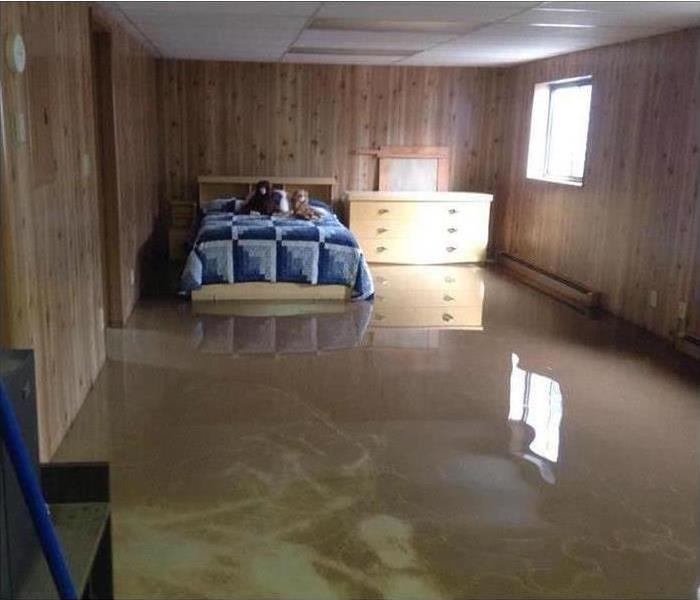 This Davis County home was flooded due to secondary water being turned on.
This Davis County home was flooded due to secondary water being turned on.
Flooding and water emergencies don’t wait for regular business hours and neither do we. SERVPRO of Layton/Kaysville provides emergency cleaning and restoration services 24 hours a day, 7 days a week—including all holidays.
Faster To Any Size Disaster
Flooding and water damage are very invasive. Water quickly spreads throughout your home and gets absorbed into floors, walls, furniture, and more. SERVPRO of Layton/Kaysville arrives quickly and starts the water extraction process almost immediately. This immediate response helps to minimize the damage and the cleaning and restoration costs.
Need Emergency Service? Call Us 24/7 – 801-298-4272
Water Damage Timeline
Within Minutes
- Water quickly spreads throughout your property, saturating everything in its path.
- Water is absorbed into walls, floors, upholstery, and belongings.
- Furniture finishes may bleed, causing permanent staining on carpets.
- Photographs, books, and other paper goods start to swell and warp.
Hours 1 - 24:
- Drywall begins to swell and break down.
- Metal surfaces begin to tarnish.
- Furniture begins to swell and crack.
- Dyes and inks from cloth and paper goods spread and stain.
- A musty odor appears.
48 Hours to 1 Week:
- Mold and mildew may grow and spread.
- Doors, windows, and studs swell and warp.
- Metal begins to rust and corrode.
- Furniture warps and shows signs of mold.
- Paint begins to blister.
- Wood flooring swells and warps.
- Serious biohazard contamination is possible.
More Than 1 Week:
- Restoration time and cost increase dramatically; replacing contaminated materials and structural rebuilding may be extensive.
- Structural safety, mold growth, and biohazard contaminants pose serious risks to occupants.
About SERVPRO of Layton/Kaysville
SERVPRO of Layton/Kaysville specializes in the cleanup and restoration of residential and commercial property after a fire, smoke, or water damage event. Our staff is highly trained in property damage restoration. From initial and ongoing training at SERVPRO’s corporate training facility to regular IICRC-industry certification, rest assured our staff is equipped with the knowledge to restore your property.
Commercial Floods: When Can Employees Go Back to Work?
7/29/2021 (Permalink)
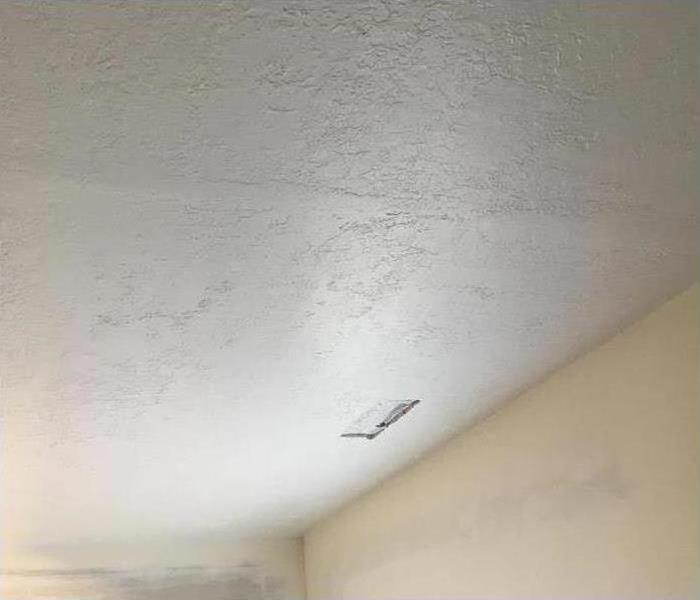 Ceiling damage after a storm in a Layton, UT home
Ceiling damage after a storm in a Layton, UT home
If you have sustained black water damage at your Layton, UT, business after a flood, you may be wondering when your employees can return to work. You will likely need to do a couple of things to return the workplace to its pre-flood condition, and the two main steps involved are demolition and disinfection, both of which can be enhanced by the use of air filtration devices.
Familiarize yourself with these different phases of restoration to understand what you need to do to restore your property. Once complete, your employees should be able to go back to work in a timely manner.
1. Demolition
Demolition involves removing water and items that have been affected by black water. It also includes disposing of property that has sustained water damage. This is an extremely important first step when trying to restore your commercial building to a state that allows your employees to enter it. An air filtration device can help speed things up by causing enhanced drying of wet areas of the structure. This is typically a good time to bring in a commercial storm damage company to help you make sure that everything is cleaned up as thoroughly as possible.
2. Disinfection
The next step in the flood cleanup process is disinfection, which helps eradicate any existing infected areas and prevents others from being contaminated in the future. Best practices include cleaning all damaged or wet areas with products approved by the EPA. An air filtration device can help during this stage by purifying the air and reducing the risk of impure particles sticking around your property.
The best defense against black water is to be prepared in advance so that you know what you can do to reduce the risk of water damage and how you can prepare the premises so your workforce can get back to being productive. In cases where you are unfortunately already facing flooding issues, the action plan above will typically be your best bet in returning your company to its normal state in the least amount of time.
The Great Divide: Responsibilities of Tenants and Owners After a Fire
7/29/2021 (Permalink)
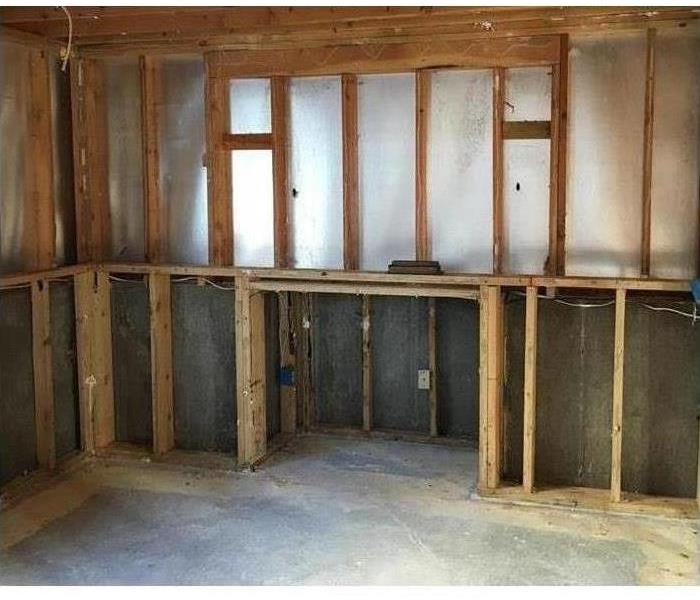 House fire damage in Kaysville, UT
House fire damage in Kaysville, UT
When an apartment fire damages your commercial property in Kaysville, UT, it is likely that both the building and the items inside the affected area are damaged. As the building owner, you are essentially responsible for the building and external structures, whereas your tenants are responsible for their personal items. After the fire has abated, there are things that both you and your tenants need to do.
Owner Responsibilities
Your first action should be to call fire mitigation specialists and your insurance company. This gets both the cleanup process and the means to pay for it started. It also frees you to address other tasks:
- Ask the fire officer for contact information and a time to complete a walkthrough of the property.
- Communicate with tenants to ensure that they are safe and are taking the next steps they need to take.
- During the walkthrough, take pictures and make detailed lists of all the structural fire damage.
- Get a copy of the fire department's report of the incident.
- Put security measures in place to discourage trespassing and further damage.
It is important to know what you need to do after an apartment fire on your commercial property. It is also helpful to understand your tenants' responsibilities.
Tenant Responsibilities
The first thing the tenant should do is secure temporary housing. If they do not have a place to stay and their renter's insurance doesn't cover it, direct them to relief organizations that can assist with temporary housing. Tenants should leave everything affected by the fire in the building so that insurance adjusters can get a clear picture of the damage. Let tenants know that nothing should be removed from the building without the permission of fire officers or the remediation crew.
When an apartment fire ravages your property, you need to have a plan in place for handling the remediation process. Knowing what both you and your tenant need to do can help it run more smoothly.
3 Tips for Dealing With a Toilet That Overflows When You Run the Shower
7/26/2021 (Permalink)
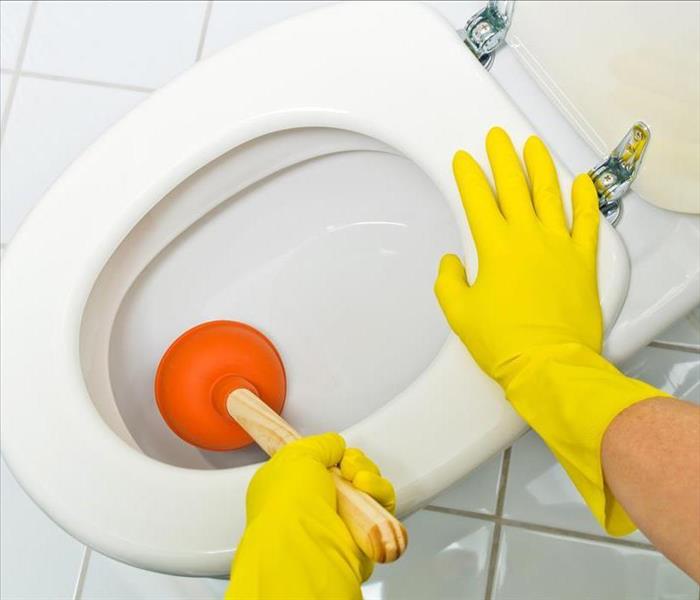 Toilet clogged in a Layton, UT, home.
Toilet clogged in a Layton, UT, home.
If your toilet is overflowing whenever you run the shower, you probably have a clog somewhere between your toilet and the sewer. An overflowing toilet can create a sewage cleaning problem in addition to running up your water bill.
These three tips can help you fix the problem.
1. Try To Unclog the Toilet
The best place to start the process is by trying to clear the clogged pipe by snaking your toilet. To do this, you need a plumbing tool called a "snake." You can purchase a motorized snake or one that cranks by hand. Get a snake that is at least 25 feet long. To clear the clog, run the snake through the toilet or remove the toilet and run the snake through the drain. Turn on the shower to see if you have dislodged the clog. If you still have a toilet overflow, try the next tip.
2. Snake the Drain Cleanout
Your drain cleanout is a cap on your main drain. It is usually located in your crawlspace or basement. Use a pipe wrench to remove the cap. Some sewage may come out. If there is a lot of sewage backup, you may need to contact a remediation company in Layton, UT, for sewage cleaning. Run the snake through the opening and then replace the cap. Turn the shower on. If your toilet is still overflowing, try the final tip.
3. Call a Plumber
If neither of those tips worked, you probably have an issue that you can't fix yourself. You may have a more serious problem, such as tree roots that have infiltrated your sewer line, or the clog may be too far into the pipe to reach with a non-commercial snake. Call a plumber to assess the issue.
You may be able to clear a simple clog on your own. However, more complex sewage cleaning problems may require professional assistance.
Prevent Water Damage in Your Home
7/26/2021 (Permalink)
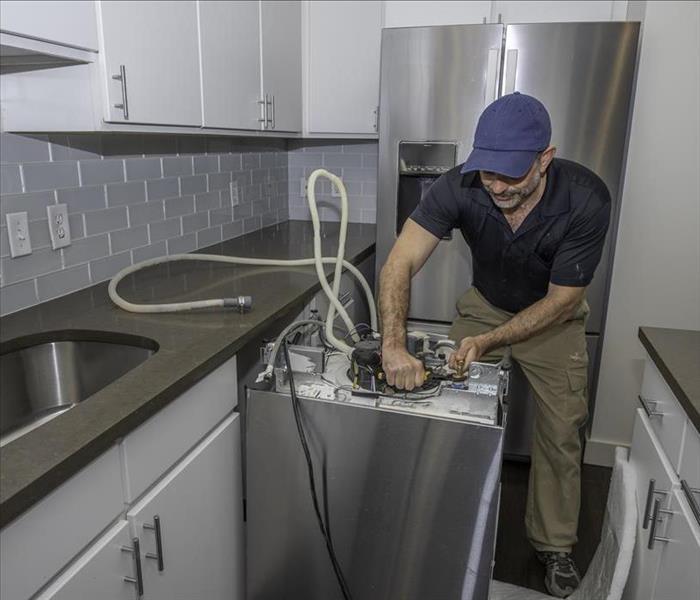 Having a maintaining routine on pipes will prevent water damage in your Kaysville, UT, home.
Having a maintaining routine on pipes will prevent water damage in your Kaysville, UT, home.
Water damage can lead to ongoing trouble for homeowners in Kaysville, UT, so learning to keep control of water in a home should be a priority. While water often flows through the house in pipes, sinks, basins, toilets, and appliances, there are several places where water should never be:
- Basements
- Carpets
- Crawlspaces
- Floors
- Walls
The most effective way to prevent mishaps such as a slowly dripping faucet or a broken pipe is through routine maintenance and simple repairs.
Keep the Drains Flowing
One of the simplest maintenance steps is to keep your drains clear. This generally means preventing hair and other items from flowing into the drains and toilet. If there is a clog in the sink, shut off the water and clear out the P-traps. More complicated clogs may require the services of pipe cleanup and repair professionals.
Watch Out for Signs of Trouble
Water leaks can occur along pipes, near appliances, and at connector points throughout the home. Many of these leaks can be avoided simply by visually inspecting the areas of water in a home. Check hoses and connections. Look for signs of consistent drips, water stains, and dark spots. Repair caulking around sinks, tubs, and showers. Keep a close eye on water pressure. You may spot a broken pipe simply by recognizing that the water pressure has dropped. It's much easier and less expensive to fix a broken pipe early than to wait until it has caused serious damage.
Take a Look Outside
Be sure to pay attention to the exterior of the home, as well. Keep the gutters around the roof of the home clean and in good repair. Prevent water from accumulating around the foundation. Make sure the land in the yard slopes away from the home. If there's a sump pump on your property, check it at least once a year and test it during periods of heavy rain or snow.
Focus on Prevention
Preventing water in the home from getting into areas where it doesn't belong is simple with routine maintenance and timely repairs. When water damage does occur, reach out to SERVPRO professionals who get there Faster to Any Size Disaster.
Protecting the Interior of Your Home From External Flooding
7/14/2021 (Permalink)
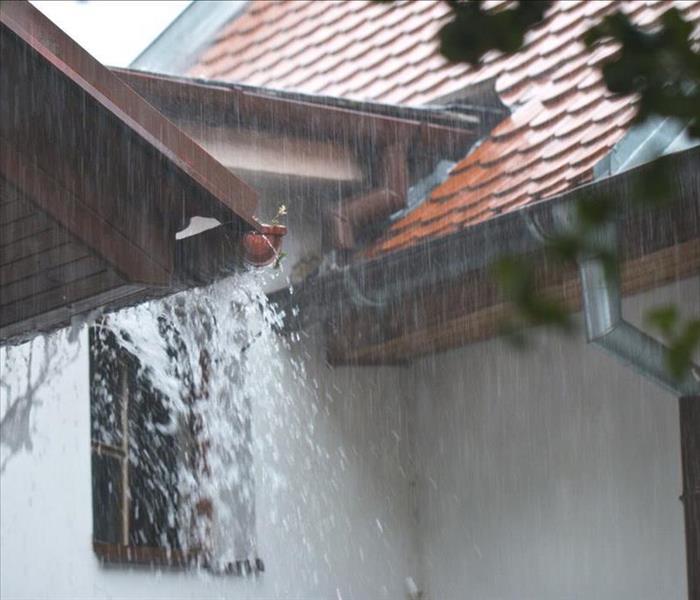 Storm damage must be repaired by a professional and certified team.
Storm damage must be repaired by a professional and certified team.
A rainstorm can lead to significant flooding around your property, especially if it is a sudden downpour. While much of the damage might occur around the home's exterior because of outside flooding, it is not uncommon for the water to find its way inside, primarily if your landscaping is not properly sloped or the foundation is not correctly or adequately sealed. If the interior of your home floods, you might need to contact a water removal service in Layton, Utah. These services specialize in several areas:
- Mitigation
- Remediation
- Restoration
However, you could avoid the expense of hiring such a service if you plan ahead. By designing your landscaping to steer water away from your foundation, you can avoid most storm-related floods.
Upgrade and Maintain Your Gutters and Downspouts
Gutters and downspouts are a primary cause of outside flooding becoming inside flooding. When gutters are clogged or downspouts inadequate, the water tends to overflow from the gutter system, draining down the side of your home. The water then collects near your foundation.
To avoid such damage, you can upgrade your gutter system, especially if it is inadequate for your property. On top of that, maintain the gutters. Clean them and the downspouts often to ensure water can flow freely.
Use Mulch in Garden Beds and Around Bushes, Shrubs, and Trees
You want to design your landscaping so that the soil and beds slope away from the foundation, allowing rain drainage to flow towards sewers or streets. Installing sloped beds will not be effective if the rain can soak into the soil too quickly. Laying mulch around plants and through garden beds can help to slow soil absorption, allowing the rainwater to drain away from the house and take its time doing so.
Avoiding outside flooding is not always possible, but using landscaping to guide water away from your home’s foundation is. Focus on installing an adequate gutter system and sloping garden beds to protect your home.
5 Types of Mold That Can Grow in Your House
6/28/2021 (Permalink)
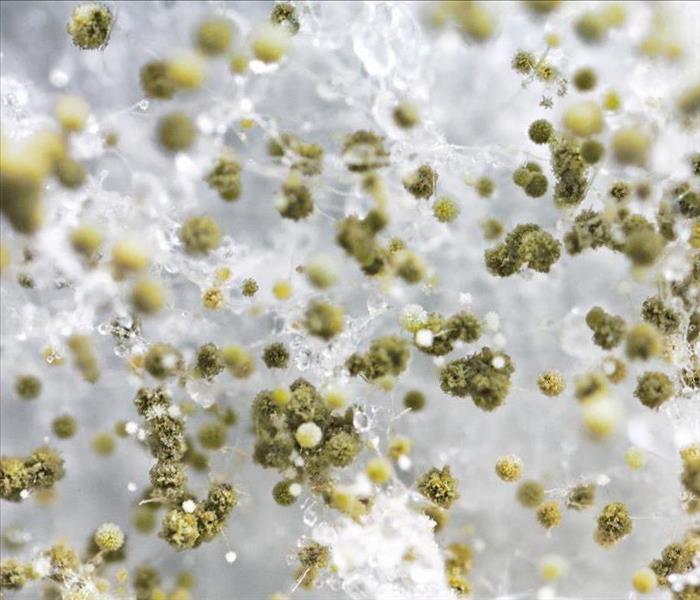 The most favorable conditions for mold growth are moisture and darkness.
The most favorable conditions for mold growth are moisture and darkness.
Mold is a type of fungus that is present in nearly every environment, including your home. Most homeowners have probably heard of black mold because of media attention. However, there are actually many different types of mold growth that can occur in your home.
1. Acremonium
This mold usually grows in humidifiers, drain pans, window seals, cooling coils, and other high humidity environments. It begins as a small, moist mold that later becomes fine and powdery. It is usually grey, pink, white, or orange in color.
2. Aspergillus
This type of mold growth is one of the most common household molds. There are more than 185 species of this mold that come in a variety of different colors. Its long, flask-shaped spores can form thick layers on surfaces.
3. Chaetomium
This variety commonly occurs in homes that have water damage. It has a texture that is similar to cotton and changes color from white to grey to brown and then black as it gets older. Common locations for this mold include leaky roofs, sinks, and basements. It gives off a musty odor.
4. Fusarium
Fusarium also grows in water-damaged homes and can continue growing in cold temperatures. It is often found in wallpaper, carpeting, and other fabrics. It is usually white, pink, or red and sometimes grows on food or in compost.
5. Penicillin
This type can be identified by its distinctive green or blue surface and velvet-like texture. This mold is often discovered in buildings with water damage in Layton, Utah, while the mold remediation is being performed. It spreads quickly and often grows in wallpaper, ducts, mattresses, and carpets. As with many types of mold, it is important to eliminate sources of excess moisture to get rid of it.
These are just a few of the many types of mold growth you may find in your home. Whatever type of mold you have, it is important to have prompt mold remediation done to address the issue before more damage occurs.
What a Restoration Company Will Do After Pretesting
6/28/2021 (Permalink)
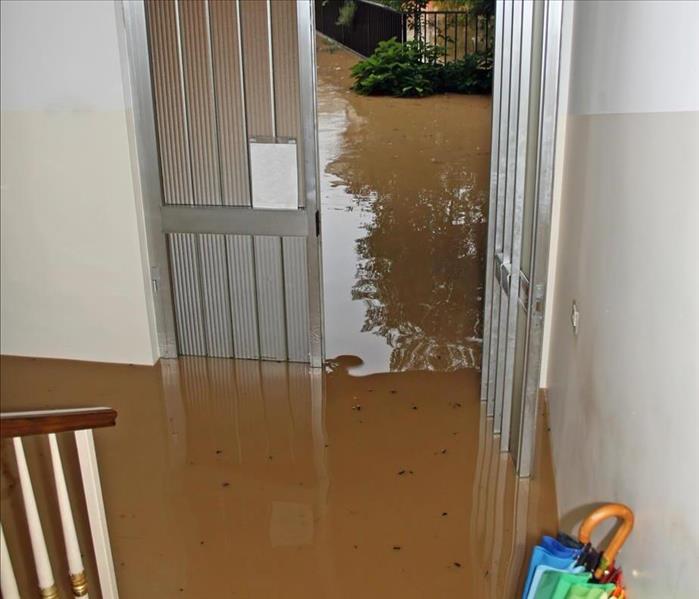 Flooding home in Kaysville, UT.
Flooding home in Kaysville, UT.
Not many people realize that pretesting can keep your insurance claims down in the long run. In order to take advantage of this, you need to understand what it is, what it entails, and how it can help you.
Pretesting
This is the process of making a complete assessment of your property and the damage. Sometimes your water restoration company in Kaysville, Utah, will be able to tell you what needs to be done and what can be restored. Certain will have to be thrown away while others can be cleaned.
You may need to get rid of:
- Exposed food
- Paper products
- Flooded electronics
Many other items such as furniture, carpet, and clothing can be salvaged. A good company will list these things and when they file the insurance claim.
Identify and Correct
The first thing a company will do is identify the damage and stop it. This is an important step because nothing else can proceed until the problem is stopped. In the case of a severe leak, they will stop the leak and fix the immediate damage.
Assessment
One of the primary things that a good company does is a pretesting assessment. Once the cause of the damage is taken care of, they will perform a proper assessment. They will write down any damage, take pictures and develop estimates for replacing or repairing items.
Beginning Work
A company that pretests have the added advantage of knowing exactly what needs to be done. If they work with your insurance agent, they may also know what your insurance covers and what will be out-of-pocket. They file with your insurance company and begin any work that needs to be done.
With pretesting, a restoration company can work with your insurance, file your claim, and provide your insurance company with what they need to help you get back into your home faster.
Choosing the Right Smoke Detector for Your Home
6/22/2021 (Permalink)
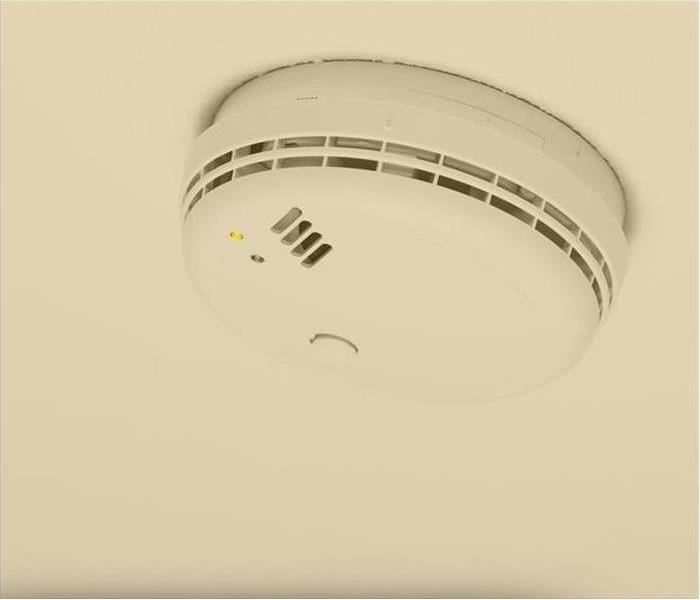 Dual sensor smoke detector.
Dual sensor smoke detector.
On average, when a fire breaks out in a home in Fruit Heights, UT, the residents have between two to four minutes to get out of the house before heat and smoke overtakes them. That isn’t even enough time to fry an egg. An early warning system is critical to keeping you safe, especially if a fire occurs while your family is sleeping. The best fire safety precaution you can get is a good quality smoke alarm. Do you know which type is best for your situation?
The Difference Between Smoke Detector Types
- Photoelectric type
- Ionization type
- Dual sensor detector
- Air-Sampling smoke detector
How To Choose the Best Unit for Your Home
A photoelectric alarm actually “sees” even the tiniest particles of smoke and triggers the alarm and is the best in the event you have a very smoky fire. This would do well in areas where there are likely to be bedding or piles of laundry. An ionization unit uses a radioactive element, which is disrupted when smoke particles enter the field, setting off the alarm. They work best when fires begin in fast burning sources like grease or paper, and might work best in a kitchen, shop, or garage. A dual-sensor smoke alarm covers both bases effectively but may cost more. Using one of each type in close proximity can give the same benefits. An air-sampling model can sense smoke in the air at minute levels. This may be better for homes with large rooms or high ceilings. You don’t need to choose an expensive model, and it is just as important to get install long-lasting, reliable batteries.
While hearing a smoke alarm and getting out in time is the next best thing to having no fire, ablaze can get the advantage on you in a hurry. Calling restoration service technicians in Fruit Heights, UT can help make putting your world back together a little easier. Choosing and installing your smoke alarms is a crucial part of surviving such an event.
Use of PPE when Cleaning Mold Damage
6/21/2021 (Permalink)
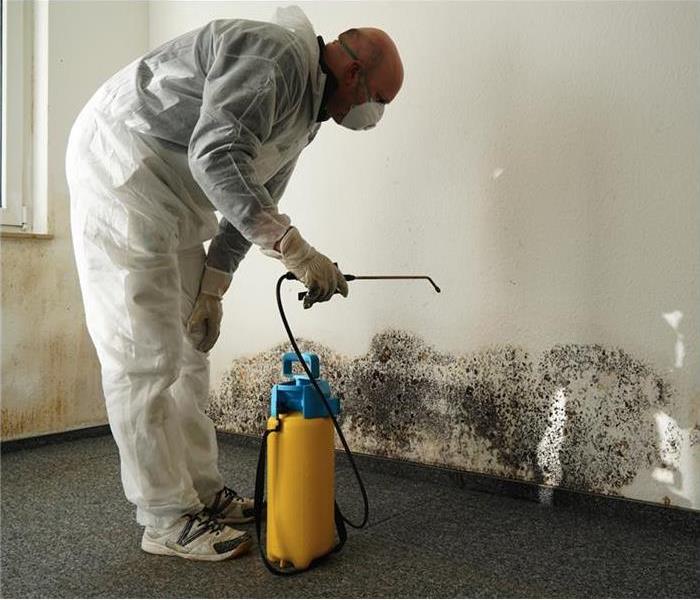 Mold remediator wearing protective suit in a Fruit Heights,UT building
Mold remediator wearing protective suit in a Fruit Heights,UT building
Whether you do business in a small office, a mid-sized warehouse or a large factory, you understand the importance of fostering a mold-free environment. After all, mold can ruin inventory, equipment, furnishings and structures. If you want to protect your investment by removing mold from your Fruit Heights, UT, business, you must commit to wearing the right personal protective equipment.
Choosing Protective Gear
Mold reproduces by spreading microscopic spores. As you probably know, you should not inhale these spores. As such, before beginning any mold-removal process, you likely want to purchase a high-quality mask. You may not want to stop there, though. Most mold cleanup specialist don a protective suit that includes the following components:
- A mask
- A respirator
- Gloves
- Disposable shoe covers
- Disposable overalls
- Goggles
Understanding Mold Growth
Mold is more than meets the eye. That is, it has a funny way of returning to spaces you think are clean. If you want to protect your business from mold, you must develop a comprehensive strategy. You may need to throw away some contaminated items, even though you can clean others. You also may need to use an air-filtration system to catch mold spores that dislodge during the cleaning process.
Asking for Professional Help
As a business owner, you are good at meeting customer demands and maximizing profit. You may not, however, have much expertise in mold mitigation. Fortunately, you don’t have to know everything there is to know about containing mold. On the contrary, you may want to rely on a reputable mold removal service. Skilled technicians have the knowledge, skill and equipment to contain mold in your facility.
No entrepreneur wants to have to deal with mold. Still, containing mold is often part of doing business in Fruit Heights, UT. To protect your business investment, you need a plan for addressing mold growth. If you choose to remove mold without professional assistance, you must be certain you wear the right gear.
How To Clean Up the Effects of Roof Damage
6/18/2021 (Permalink)
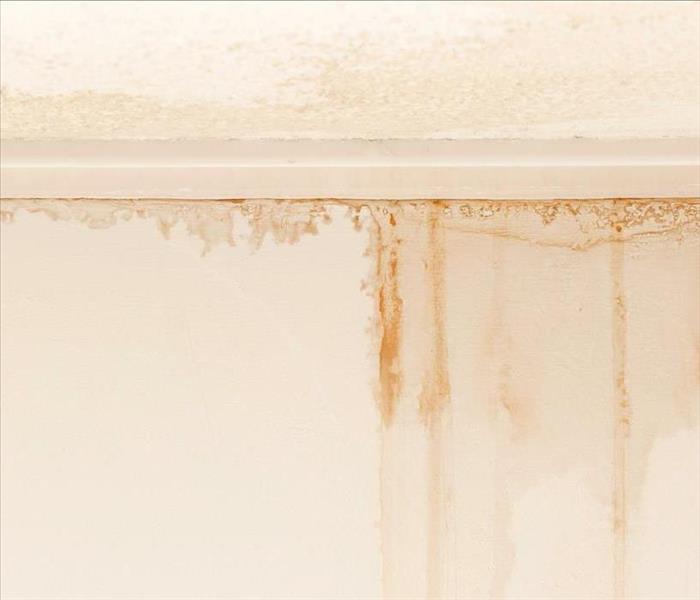 A damaged roof due to a storm can lead to water damage.
A damaged roof due to a storm can lead to water damage.
A big storm in Layton, UT, can do more than just leave your office building without power for a little while. High winds can scatter debris and loosen shingles. Add heavy rain to the mix, and you may have a serious roof leak on your hands. Storm damage restoration specialists can help you find and fix all the problems caused by inclement weather.
2 Ways a Restoration Specialists Can Help With Storm Damage
Roof Repair
Taking care of the damage to the roof is the first priority. This keeps more water and debris from getting into your building and causing more issues. Hail and wind can tear up your roof in several ways:
- Missing shingles
- Torn flashing
- Clogged gutters
- Cracks and holes
Until the roof repair is finished, tarps and board-up services are necessary to protect your building. Once contractors start to repair the damaged roof, cleanup technicians can inspect the interiors for water damage and related problems.
Damage Cleanup
If you have a roof leak, you probably also have some interior damage. The first thing that the mitigation team does is tear out all the materials that cannot be salvaged. This likely includes saturated drywall, insulation, flooring and ceiling tiles. Once all the ruined parts of the structure are removed, the technicians can focus on disinfecting and drying the area. Then, they rebuild walls, install new ceilings and flooring, and make sure the paint matches so that no one can tell where the damage was. Finally, all equipment, furniture and other items must be thoroughly cleaned before they are returned to their rightful place in the building.
After a storm, you need to inspect your office building, especially the roof. Even a small roof leak can cause considerable water damage. Not only do you need roof repair but also a certified team to help you clean up the mess it leaves inside. Fast and thorough mitigation can protect your building from further damage.
Dos and Don'ts During a Flood
5/28/2021 (Permalink)
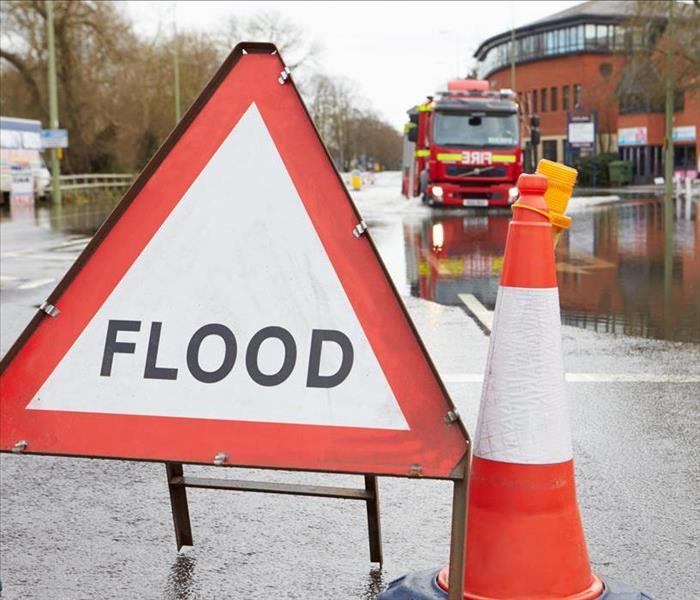 Flooding can be dangerous.
Flooding can be dangerous.
Even seemingly shallow flood water poses many hidden dangers. The more you know about those dangers before you experience a flooded home, the better you can avoid those dangers and resulting water damage.
What To Do And Not Do During a Flood
What You Should Do After a Flood
As flood water begins to recede, you may feel anxious to begin your cleaning and repair efforts. Before you wade into the murky water, however, focus on some safety steps:
- Tune a battery-powered radio to a Layton, UT, news channel for updates from utility companies and other local officials.
Turn off electricity, water, and gas throughout your home. This is especially important if you plan to evacuate.
- Open the doors and windows to allow ventilation.
- If it is safe to be in your home, move electronics, belongings, and valuables from wet areas of the home and into dry rooms.
- Take pictures of the damage for your insurance company.
- Contact water damage cleanup and restoration professionals to assess the property damage and provide an estimate for their work.
What You Should Not Do After a Flood
In addition to the steps you should take, there are several things you should not do. Avoiding flood-related dangers can keep your family safer and could prevent further damage:
- Stay out of the water. This includes on the roads and sidewalks around your home. It also means staying out of water inside your home. The water may contain harmful chemicals and biohazards. It is also difficult to tell how strong the current is, even in shallow water.
- Don't touch the water in your home. In addition to carrying contaminants, the water in your home could also be carrying an electrical charge.
- Don't ignore the warnings and directions provided by emergency responders. When you disobey those professionals, you put your own safety and the safety of others at risk. You also make the jobs of firefighters, police officers, first responders, and other officials much harder.
Stay Calm and Informed
Flood water can cause a lot of damage, but your calm, informed response can help you avoid extra problems. Your knowledge of what to do and not to do may keep you, your family, and your home safe.
Content Cleaning and Restoration
5/25/2021 (Permalink)
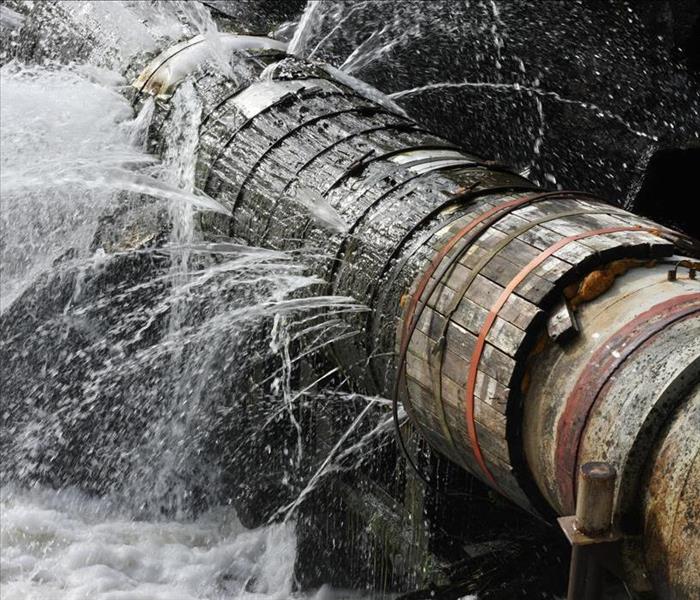 A broken pipe can lead to severe commercial water damage.
A broken pipe can lead to severe commercial water damage.
Floods and other water damage can result in significant loss for a commercial property. A flooded company will need to cope with the potential losses of electrical equipment, paperwork, and inventory. Thankfully, not all hope is lost after a water crisis. As a property manager or business owner, you can call on the support of a restoration company in Layton, UT, to help salvage any potentially damaged content. The process for saving equipment, inventory, or files will depend on the materials, which often fall into three categories.
3 Categories for Content Cleaning and Restoration
1. Paper
Paperwork is among the most vulnerable to water loss because it is degradable. Therefore, following a broken pipe or flood, you want to collect the material quickly. Lay it out in a dry area with direct sunlight. You can place a paper towel underneath to expedite the drying process. Some documents might need a more nuanced approach, in which case, you will want to contact a specialist or a document recovery service.
2. Electronics
More than likely, a flooded company will have damaged or affected electronics, like computers or machinery. Whatever you do, do not turn anything on. It is best in situations like these to contact a service technician. The equipment will need to be thoroughly dried before being powered on, and even then, certain precautions might need to be made.
3. Fabric
It is not uncommon for companies to have fabrics, like rugs, curtains, etc. While some of these materials might be washable, others might require specialized or commercial equipment or dry cleaning. Depending on the type of flooding experienced by your property, you might want to contact a restoration specialist for advice on cleaning.
A flooded company is likely to experience a variety of water damage. Instead of writing off everything to loss, consider the material and its value. There are many professional cleaners specializing in water damage restoration.
3 Reasons To Purchase Renters Insurance
5/25/2021 (Permalink)
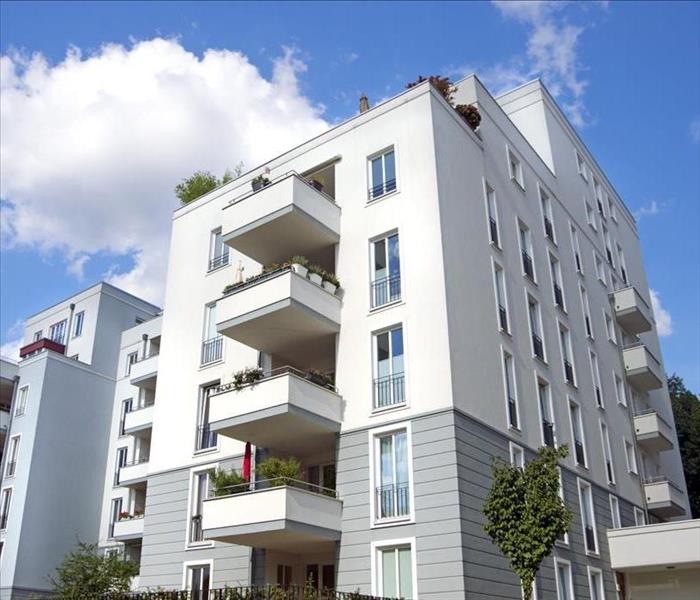 Renters insurance is important.
Renters insurance is important.
If you are renting the home or apartment you live in, you may not think you need property insurance. However, your landlord's insurance only covers the structure and other property that belongs to the landlord. Without renters insurance, there is no protection for damage to your personal property. These are three of the reasons you should consider purchasing this coverage.
3 Reasons to Consider Purchasing Renters Insurance
1. It Pays To Replace Your Stuff
If fire damage were to completely destroy all of your personal belongings, it could cost you thousands of dollars to replace them. A renter's policy covers the cost to replace your personal belongings if they are damaged or destroyed by fire, water, wind or another covered cause of loss. Most policies also protect belongings that are stolen from your residence.
2. The Price Is Reasonable
Because personal belongings are typically worth much less than a house, renters insurance usually costs a fraction of what you would expect to pay for a homeowners policy. The price you pay will depend on how much coverage you need, the deductible and type of coverage you choose and where you live in Layton, UT. If cost is a barrier for you, consider choosing a policy with a higher deductible to save money on premiums.
3. Your Landlord May Require It
Your landlord's policy will pay for fire restoration of the structure; however, it doesn't provide any protection for the property that belongs to tenants. Your landlord or your landlord's insurance company may require that all tenants purchase insurance to cover their own belongings. This requirement should be stated in your rental agreement.
Even if you are not required to purchase renters insurance, it is a good idea to have it. Without this protection, you may have a difficult time replacing your belongings if your home or apartment is severely damaged or destroyed by fire, wind, lightning or another catastrophic event.
Why You Need Professionals for Roof Tarp Services
5/6/2021 (Permalink)
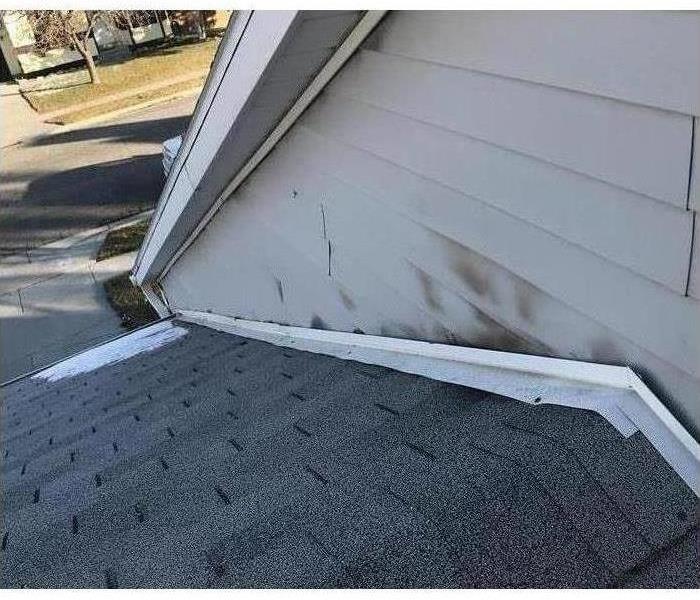 Roof and siding fire damage in a Layton, UT home.
Roof and siding fire damage in a Layton, UT home.
When fire damages your building, one of the most important parts of fire cleanup to tackle immediately is damage to the roof. The heat and flames of the fire may have weakened roofing structures or left gaping holes, leaving your property open to the weather. Firefighters may have opened holes in the roof to be sure there weren't hidden pockets of fire. No matter how those damages were caused, you need quick repairs, so you can get your commercial property back in shape as quickly as possible.
Don't Postpone Repairs
What's at risk? When you don't treat damage to the roof immediately, your business could suffer in a number of ways.
- Rain, wind, and other environmental elements could damage the interior of the building and any furnishings and inventory inside.
- Vandals and thieves may enter your building, increasing your losses.
- Weakened building materials could affect the stability of surrounding structures.
- Failure to control damages could impact your insurance coverage.
Dangers of DIY Tarping
One of the first things many property owners do is to install tarping, and it may seem like a few 2x4s and some heavy-duty clothes will do the trick. However, temporary covers are notorious for providing too little in the way of serious protection. Instead of leaving yourself and your property open to further losses, talk to fire cleanup professionals about tarp services.
Reach Out to Professionals
Professionals tackle roof repair by applying an emergency protective cover to prevent further interior damage and protect against more structural damage. If weather doesn't allow for long-term repairs, the emergency repairs will protect against further environmental exposure. After assessing the extent of the damage, professionals will often work with insurance companies as they repair the structural integrity of your roof and complete the reconstruction of your roofing.
There's enough fire cleanup work for you to handle without worrying about the roof as well. This is one area that should always be turned over to Layton, UT, professionals.
3 Ways To Prevent Water Damage
4/30/2021 (Permalink)
 Prevent water damage in your home
Prevent water damage in your home
Water damage from excess water in home is one of the most common causes of property damage. Because water can cause severe damage to your property it is important to take steps to reduce the severity of this type of damage.
Take 3 Steps to Prevent Water Damage
1. Know How To Shut Off the Water
Water from a broken pipe can seriously damage your home in just a few minutes. The faster you can shut the water off, the less damage will occur. Familiarize yourself with where the main shutoff valve is located. This will usually be somewhere along the perimeter of your home on the side where the water enters. Make sure everyone in your family knows how to find it and shut it off.
2. Install a Sump Pump and Test It
The basement is one of the most common places for there to be water in home. Installing a sump pump helps prevent flooding from occurring during heavy rain. Test your pump regularly to make sure it is working properly. You don't want to find out that your pump needs maintenance when your basement starts to fill with water. If your basement does flood, contact a SERVPRO franchise in Layton, UT, to dry it out as soon as possible.
3. Protect Your Pipes
Pipe cleanup caused by a burst pipe is another common cause of water damage. Install a smart thermostat so that you can make sure your home is heated to at least 50 degrees Fahrenheit at all times. If you will be gone for an extended period of time, shut off the water to your home and drain the pipes. Insulating your pipes will help prevent them from freezing during the winter.
Because water in home can lead to severe damage, it is important to take steps to prevent it. These three steps will help you reduce the potential for water damage in your home.
Learning About Category 3 Water Damage
4/15/2021 (Permalink)
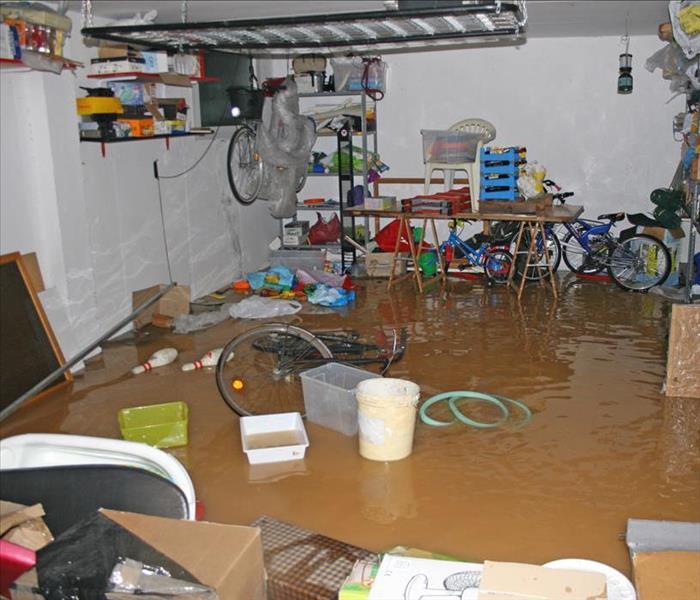 Black water should be handled by professionals.
Black water should be handled by professionals.
Category 3 or black water is among the worst contaminated water. Bacteria and other harmful compounds, including chemicals, are found within the liquid and if ingested can prove dangerous to your health. While calling a mitigation service in Layton, UT, is a no-brainer, there are a few other things you should know.
3 Facts About Category 3 Water Damage
1. Common Sources of Black Water
Contaminated water does not just appear out of nowhere. There are several potential sources, like sewage backups or natural floods. A toilet or floor drain backup will often result in a sewage cleanup, because the water comes from a waste source. While a natural flood might not begin as category 3 water, as water levels rise and mix with other sources it evolves.
2. Necessary Precautions
You should never handle contaminated water. While most people will do their best to avoid ingesting the substance, the water can cause harm by contacting the skin. If you must work or wade through contaminated water, wear protective clothing, gloves, mask, and goggles. If you can tape off areas around your wrist, ankles, and waistline where water might touch. The safest option for flood removal and water treatment is to hire a professional mitigation service.
3. Water Removal and Home Restoration
Regardless of the water level, when dealing with significantly contaminated water, contact a home restoration specialist to deal with water removal and disinfection. These professionals have appropriate certifications and knowledge for staying safe during such tasks. While saving money is vital to many people, when your health or home are at risk, it should not be the priority.
Black water the highest level of water contamination, and it should not be handled by an inexperienced homeowner. Water mitigation services are trained in federal and local regulations to handle such materials. Let the professionals do their job and you focus on keeping you and your family healthy and happy.
Your OSHA Compliant First Aid Kit
4/12/2021 (Permalink)
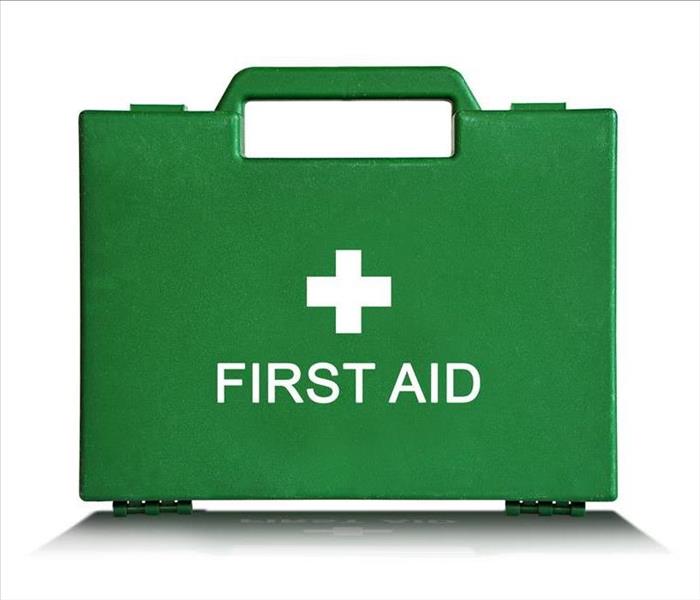 Having a first aid kit is crucial.
Having a first aid kit is crucial.
As a facility owner or manager, you have a lot of responsibilities, and one of the most important is protecting the safety of the people inside your Layton, UT, buildings. To that end, a well-stocked first aid kit is crucial, and it's an important part of OSHA compliance.
Focus on the Goals of First Aid
Workplace first aid must provide for the temporary care of an injured person until medical professionals can provide the necessary care. The primary goals of providing first aid are:
- To preserve life
- To prevent further injury
- To promote recovery
OSHA-Required Basics
Start with the basic items required in an emergency kit and adjust the numbers of items by the number of people in your buildings:
- 4x4-inch gauze pads
- 8x10-inch gauze pads (at least two)
- 1 box of adhesive bandages
- 2-inch-wide gauze roller bandage
- Triangular bandages (at least two)
- Two elastic wraps
- Scissors
- Adhesive tape
More Items Required by OSHA
After including the basic items you need for treating common injuries, add supplies to improve the quality of first air care:
- Latex gloves
- Sealed moistened towelettes or other sterile wound cleaning agent
- Tweezers
- Burn spray or cream
- Burn dressing items
- Eyewash stations and refill solution
- Splint
- Blanket (at least one)
- Resuscitation equipment
Items Not Required by OSHA
You could also include items that increase the comfort of individuals in the workplace:
- Allergy relief
- Cold relief
- Headache relief
- Antacids
Education for Providing First Aid
In addition to filling your first aid kit with these necessary items, you should also be prepared for the most common workplace medical emergencies:
- Heart attacks
- Respiratory distress, such as asthma attacks, allergic reactions, and choking
- Seizures
- Shock
- Stroke
First aid and emergency response training sessions should be scheduled regularly, so your employees are prepared to act appropriately when emergencies take place.
Are You Prepared?
The care you put into stocking and maintaining each first aid kit in your facility is critical, not only for protecting the safety of the people but also for remaining compliant with OSHA guidelines. What steps have you taken to prepare for emergencies and keep your facilities safe?
Potential Causes of a Toilet Overflow
3/29/2021 (Permalink)
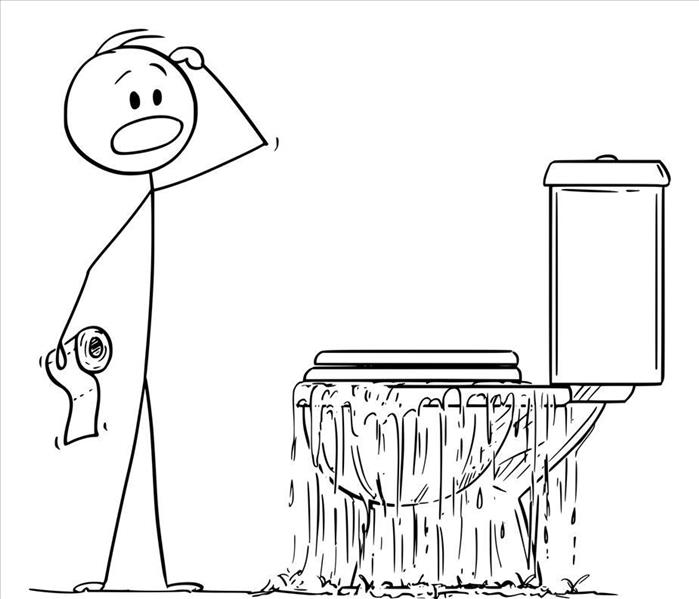 Toilet overflow can cause a lot of damage.
Toilet overflow can cause a lot of damage.
One of the most common causes of water loss for homeowners in Layton, UT, is damage from a toilet overflow. An overflowing toilet may seem like a small problem at first, but it can cause a lot of damage that you will need sewage cleaning experts to mitigate. The best solution, of course, is to prevent a flood-inducing clog in the first place, but if the problem keeps returning, you may have a bigger issue to handle.
Causes of a Toilet Overflow
Toilet Line Clog
The most common cause of toilet overflow is a clogged toilet line. There are many things that can cause a toilet line to back up:
- Hard water deposits
- Excessive toilet paper
- Foreign objects
You can prevent hard water deposits by adding a softener to your line or by being vigilant about cleaning the pipes on a regular basis. Make sure every family member knows what can and cannot be flushed down the toilet to avoid mishaps caused by overfilling.
Pipe Clog
Sewage cleaning may be necessary if your toilet overflows due to an adjacent plumbing issue. For example, if you step out of the shower into a puddle from your toilet that wasn't there before, you probably have a clogged pipe somewhere in the sewer system itself. This issue requires not only water damage mitigation but also sewer inspection and repair. A plumber is needed to identify the location of the clog. Depending on how much damage the backup has caused, you may need extensive repair or even replacement of your sewer system to keep the toilet from overflowing again.
Toilet overflow often means that the lines leading from the toilet to the sewer are clogged, but it may also indicate a larger problem. You may need to consult both a plumber and remediation experts to diagnose and fix the cause of the backup and to get efficient, thorough sewage cleaning for the effect it had on your bathroom.
What To Do While You Wait for Mold Mitigation
3/19/2021 (Permalink)
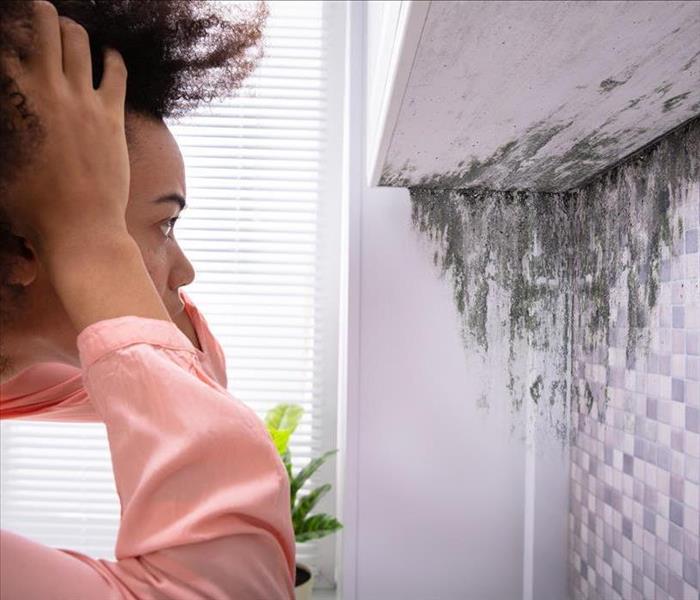 Black mold can get out of control quickly.
Black mold can get out of control quickly.
The musty odor in your home alerts you to a problem. Even if you can't see it, black mold can get out of control quickly if you don't have it mitigated properly. While mold remediation specialists in Layton, UT, are likely to arrive within hours of your call, there are some things you can do in the meantime to stop the spread.
2 Things To Do To Stop the Spread of Mold
1. Control Moisture
If you have mold growth in your home, a moisture problem is probably how it got started. There are several ways that excess moisture can increase the likelihood of fungus issues:
- High humidity
- Standing water
- Unresolved water damage
- Hidden leaks
Try to address these problems to the best of your ability. For example, you can use a dehumidifier to ensure that your home remains at a 40-50% humidity level, and watch your water bill so that you notice unexplained spikes in usage that may indicate a water loss. The more you can control the moisture in your home, the less likely the black mold growth is to spread.
2. Stop Air Flow
The seemingly logical thing to do when you want to lower humidity is to increase the air flow through your home. If you already know you need mold cleanup or suspect you have a fungus issue, however, that can actually make the problem worse. Spores travel by air. If you turn your HVAC unit on high, it is likely to spread the concentrated spores into other areas of your home. What you need to do instead is turn off the unit completely. If you know where the mold is growing, try to seal off that part of the house by closing vents and doors. The more you can keep the concentrated mold contained, the smoother the cleanup process is going to go.
Black mold can multiply in your home quickly, so your primary task is to call the experts as soon as possible. Then control moisture and protect the rest of the house from air flow from the affected area to prevent spread.
Tips for Mitigation and Restoration After a Fire
3/15/2021 (Permalink)
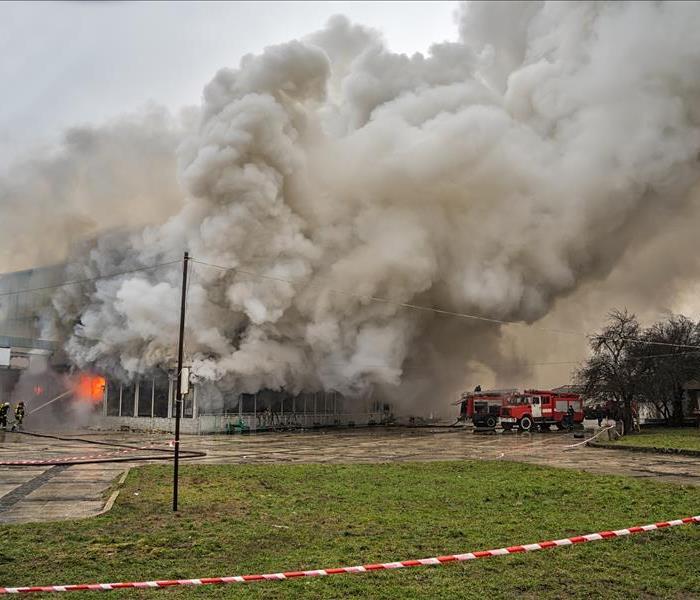 You will receive an estimate after an assessment of the damaged caused by the fire.
You will receive an estimate after an assessment of the damaged caused by the fire.
A fire in your commercial property in Layton, UT, can leave behind a lot of damage. Not only do you have to contend with the soot and charred structure, you also may experience significant water damage from the large amount needed to put out the fire. The fire damage repair process may seem daunting at first, but these tips can help you navigate the plan from start to finish in an efficient manner.
2 Tips for Mitigation and Restoration After a Fire
1. Streamline the Process
Your first call should be to a reputable fire restoration company. Many teams specialize in either fire mitigation or restoration, but the process goes more smoothly if you find one team with experts in both of these main stages. The unified team is your one-stop shop for all the steps of remediation:
- Assessment
- Board-up service
- Water extraction
- Material removal
- Drying
- Smoke and soot cleaning
- Disinfection
- Restoration
Working with one company to complete the whole process has a couple of key advantages. The estimate you receive after assessment covers everything you will need to list on your insurance claim. You also don't have to worry about a lack of communication between the team repairing the fire damage and the one rebuilding your structure when they both work for the same company.
2. Inform Your Insurance Provider
Your insurance company should be looped into the repair process from the start. Call your agent as soon as you know that the mitigation technicians are on their way. The sooner you call, the sooner the insurance adjuster will arrive at your building. Be prepared with the mitigation team's assessment when you accompany the adjuster on the walk-through. After he or she processes the assessment, your insurance claim can be processed more efficiently.
The fire damage repair process can be long and arduous, particularly if the fire covered a large area of your property. By keeping your insurance company informed and hiring one team to handle both mitigation and restoration, you can ease some of your burden.
5 Ways To Safely Enjoy Candles in Your Home
2/23/2021 (Permalink)
 Use candles safely to avoid fire damage in your home.
Use candles safely to avoid fire damage in your home.
There's no doubt that candles have their advantages, such as the beautifully unique ambiance they create and the aromatic scents. Unfortunately, candles aren't always the safest option. Home candle fire risk is real, but if you use precautions, they can be used safely.
5 Ways to Use Candles Safely
1. Keep Candles Away From Air Currents
Place your candle in an area away from open doors or windows, fans, vents or other potential air currents. Drafts can cause excessive dripping of candle wax, uneven burning or flammable materials to blow in the way of the lit candle.
2. Don't Put Out a Candle With Water
Trying to extinguish a candle flame with water can cause splashing of hot wax and possibly cause the candle holder to break due to the temperature difference between the water and heated glass. A snuffer is the best method for putting out a candle safely and causes much less mess.
3. Keep Candles Away From Flammable Materials
Most homes have no shortage of flammable materials, so you must keep candles distanced adequately from anything that could catch fire. Drapes, bedding, paper and loose clothing are typical accidental candle fire starters. Most furniture and rugs can also be risky.
4. Never Leave Candles Unattended
Never leave burning candles unattended, including while you're sleeping. Fire restoration professionals handle enough fire and smoke cleanup to know how many home fires begin when candles are left burning overnight.
5. Keep Candles Out of Reach of Children and Pets
Not only are burning candles dangerous if kids and pets get ahold of them, but they're also at risk of being knocked over even if they're out of reach. Ensure candles are out of high-traffic areas. It can be easy for anyone including furry friends, to bump a candle or piece of furniture on which it's sitting and tip it over.
Ensure that you and your family know about candle fire risks. Understanding the risks and safety practices can go far in preventing a very preventable disaster at your Layton, UT home.
Why You Need Business Interruption Insurance
2/11/2021 (Permalink)
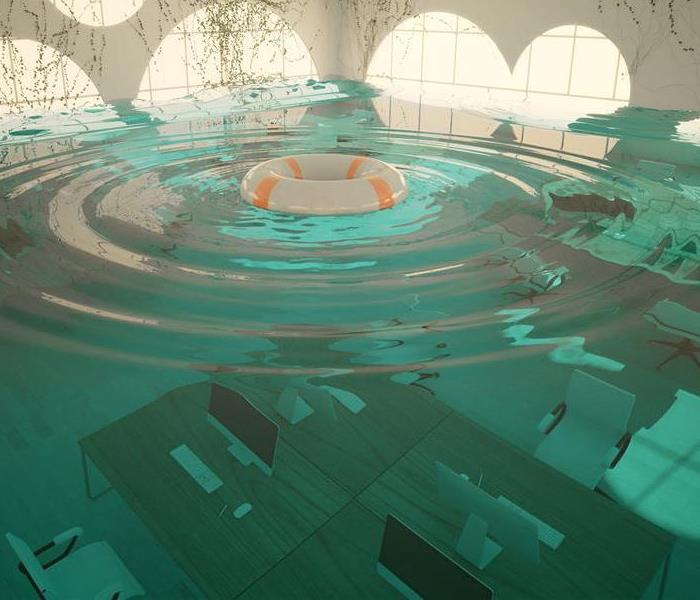 Flooding can lead to severe water damage.
Flooding can lead to severe water damage.
There are quite a few things that could disrupt your Layton, UT, business operations and protecting against those interruptions can be one of your top priorities. In spite of your precautions, however, it's also important to purchase business interruption insurance to cover you against losses, such as large water damage that might occur following flooding.
What To Expect From Business Interruption Insurance
Just as there are multiple insurance providers, there are many different policies and degrees of coverage, but there are some protections that are consistent:
- If flooding from a broken pipe closes your doors, that lost income, or the money you would have made if you'd stayed open, is generally covered.
- Without revenue, it can be hard to cover basic expenses, such as your mortgage or rent and payroll. Your insurance coverage may ensure that you can pay your business-related bills and your employees can continue to pay their bills as well.
- Sometimes, property damage is severe enough that you need to move your business elsewhere while cleanup and remediation professionals repair your building. Your insurance policy may cover the temporary relocation
In addition to making sure you have appropriate insurance coverage, you also need to work to keep recovery losses and costs low.
How To Prevent Further Damage
Taking quick action is one of the most important things you can do to lower your business interruption insurance losses. If it's possible to stop water from flowing through your property, such as by shutting off the water main, do this as quickly as possible. Reach out to your insurance provider and water cleanup and damage professionals to learn more actions you can take to reduce damage and get your company back to business as quickly as possible.
The protection you enjoy through insurance coverage is just one way to help your business survive disasters such as flooding. What are some other steps your business has taken to weather catastrophes?
3 Ways To Use Your Landscaping To Protect Your Home From Storm Damage
1/26/2021 (Permalink)
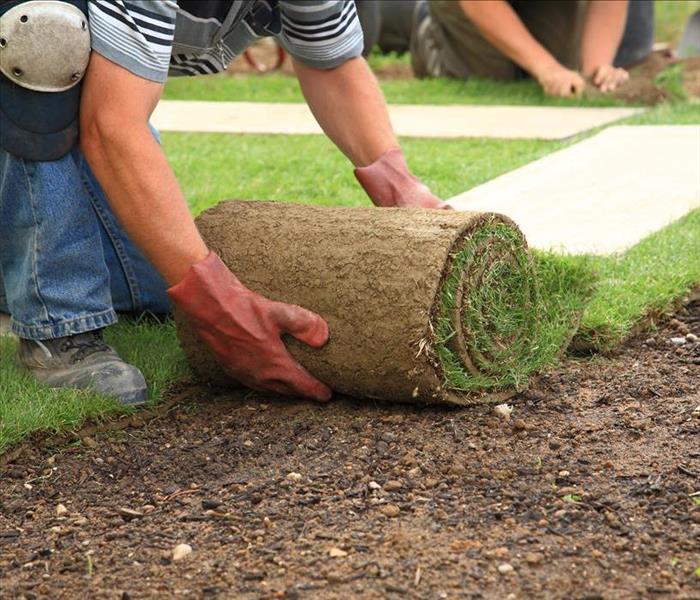 Use your landscaping to protect your home from storm damage.
Use your landscaping to protect your home from storm damage.
It isn't possible to completely protect your home from outside flooding and other storm damage. However, there are steps you can take to reduce the chance of your home suffering severe damage. These are three ways you can use your landscaping to protect your home from storm damage.
3 Ways to Protect Your Home Using Landscaping
1. Plant Trees With Deep Roots
Trees that are shallowly rooted in ground that has become saturated during a rain storm may fall over in high winds. To avoid this issue, choose trees that have deep root systems and plant them in soil that drains well. Consider the mature height of the tree and avoid planting it where it could fall on your house or power lines.
2. Install a French Drain System
One of the best ways to prevent damage from outside flooding is to divert water away from your home's foundation. Begin your French drain installation by digging a trench and lining it with landscape fabric. Add some gravel and perforated piping. The holes in the piping should face down to redirect water away from your home. Wrap the fabric and gravel around the piping and fill it with gravel, decorative rock or sod. Your trench needs to be on a slope of at least one percent for the rain drainage to be effective.
3. Create a Dry Streambed
Another way to redirect water away from your house is to create a dry streambed. When it rains, the bed provides a natural path for water to follow. The dry streambed will need to be placed on ground that slopes away from your home. If flooding does occur in your home, contact a water remediation company in Layton, UT, to dry out your property.
Outside flooding can cause severe damage to your home. One of the best ways to avoid or reduce this damage is to find ways to use your landscaping to protect your home from storm damage.
Why You Should Always Call a Mold Removal Specialist
1/22/2021 (Permalink)
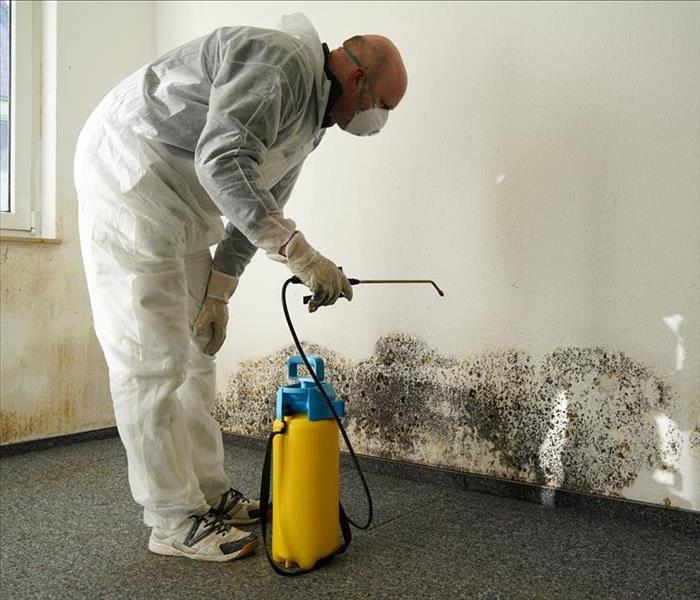 Always contact a mold remediation specialist.
Always contact a mold remediation specialist.
People often underestimate the complexity of mold cleaning, assuming that all removals are the same and require little skill or knowledge of the numerous fungal species in existence. While some mold infestations do require little expertise, these occurrences are often few and far between. It is better to contact a mold remediation specialist in Layton, UT, to handle a mold problem, regardless of the problem's apparent size, for three specific reasons.
3 Reasons to Always Contact a Mold Remediation Specialist
1. Appearances Are Deceiving
A homeowner will often see a little bit of mold or discoloration on a basement or laundry room wall and incorrectly assume that it is only surface mold. Removing surface mold is necessary and expected in bathrooms or high-moisture areas, but mold cleaning a surface is different from mold removal. While only a little bit of mold shows on the surface, there can be a more significant issue behind the wall. Think of mold like an iceberg, where only 10% shows above the surface of the water.
2. Improper Disposal Can Intensify Infestations
Depending on the severity of the infestation and the species mold damage, removal can make matters worse. When a room is highly contaminated, any mold pocket movement can release spores into the room and home, especially if certain precautions were not taken. Professionals understand the level of caution required with different species and circumstances.
3. Underlying Problems Require Resolution
If you have a mold problem in your home, it is crucial to find the source or cause of the problem. In most situations, the mold collects near areas of moisture, typically stemming from water line leaks or breaks. The leak does not need to be severe, especially if it is steady. If the moisture problem is not corrected, you can expect the mold to return.
DIY mold cleaning is never a good idea. Without the proper knowledge, you can make the situation much worse. It is best to contact a remediation professional if you suspect mold damage.
Tips for Preventing Water Damage in Your Absence
1/14/2021 (Permalink)
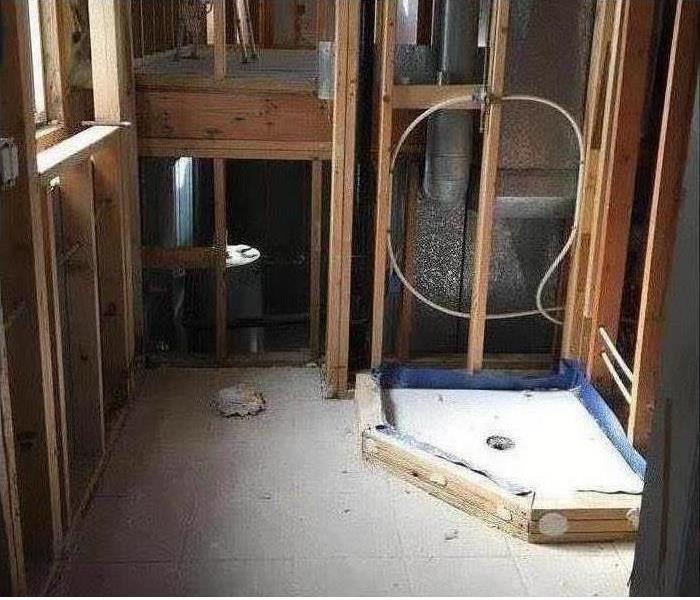 Water Damage in a Layton, UT home.
Water Damage in a Layton, UT home.
Everyone deserves to get away once in a while, but coming back to your home in Layton, UT, after a relaxing trip or holiday to find water damage can ruin the end of a good time. To avoid the need for water pipe repair when you return from your vacation, here are a few tips to follow before you leave.
3 Tips to Prevent Water Damage
1. Inspect
You should be checking your home for potential problems that lead to water damage on a regular basis anyway, but it is especially important before you plan to be away for a while. Make sure none of the hoses or supply lines are leaking. Check for broken shingles on the roof and clogged rain gutters. Test the sump pump in your basement by pouring water in and seeing if it kicks into gear.
2. Maintain
If you find any problems during your inspection, you will want to fix them. Water remediation specialists can mitigate any existing water damage and perform water pipe repair so that secondary problems such as mold growth don't develop in your absence. Clean your gutters, and insulate exposed pipes, especially if your trip takes place during the winter months. Set your thermostat so that your home remains warm so that your pipes don't freeze while you're gone.
3. Drain
Ideally, you have a neighbor, friend or family member who can check on your house periodically. If that's not the case, however, you can still protect your home by cutting off water flow altogether. One way to avoid a broken pipe is to drain all the water out of it before you go. You can also turn off the main water valve to the house. If water isn't flowing to your pipes, your home is less likely to be flooded.
No one wants to come back from vacation to discover that water pipe repair and water mitigation is necessary. By taking these precautions, however, you can relax fully during your trip, knowing your home is safe from water damage.
What Goes Into Estimating the Cost of Commercial Fire Restoration?
1/14/2021 (Permalink)
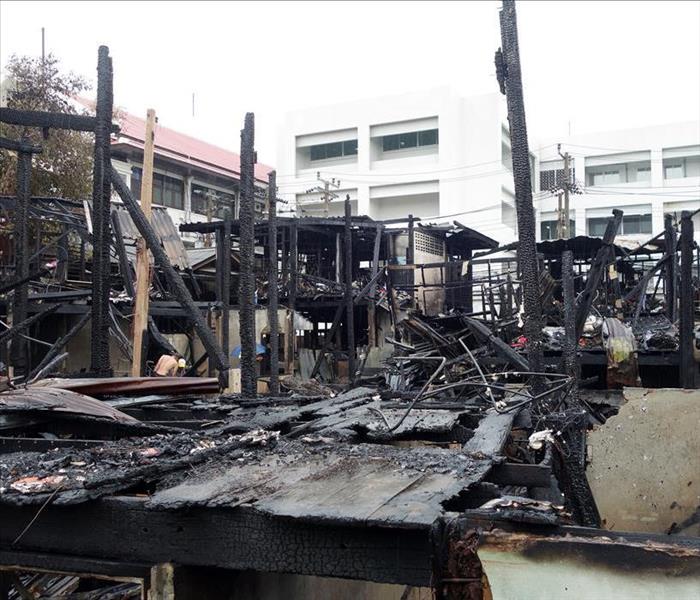 Commercial fire damage.
Commercial fire damage.
Watching your Layton, UT, commercial building go up in flames can send your mind into a tailspin. What happens when the flames are finally out? You’ll most likely need to hire fire damage restoration professionals to make sure the job is done as quickly and thoroughly as possible. After all, the sooner restoration is completed, the sooner business can return to normal.
5 Elements Considered To Calculate the Cost of Fire Restoration
There are a few elements that restoration professionals take into consideration when calculating the cost of a fire estimate:
1. Debris Removal
One of the first parts of the commercial fire restoration process is removing debris from the affected area. The debris can be the main cause of the smoke smell. All unsalvageable materials will be inventoried and then disposed of. After the inventory is complete, it’ll be given to your insurance adjuster so they can determine replacement costs.
2. Board Up
Board up services are necessary to begin immediately to prevent secondary damage, vandalism and theft. If the fire department is called, you’ll probably have water damage, in addition to the burned materials, smoke and soot. Fire damage restoration professionals will remove water from the building before boarding up the doors, windows and damaged walls.
3. Roof Replacement
If the roof has been damaged in the fire, emergency roof tarping will be necessary to protect the building from the elements until a permanent roof can be installed.
4. Damage Restoration and Reconstruction
Property damaged by fire and water will need to be cleaned, deodorized and possibly rebuilt.
5. Content Cleaning and Restoration
All salvageable items will be packed up to be cleaned at a cleaning facility. They’ll be cleaned, sanitized, deodorized and then stored until you’re ready to move them back into your building.
If your business goes up in flames, call fire damage professionals to get a fire estimate as quickly as possible. They can return your building to its pre-fire condition so you can continue with business as usual.






 24/7 Emergency Service
24/7 Emergency Service












































































